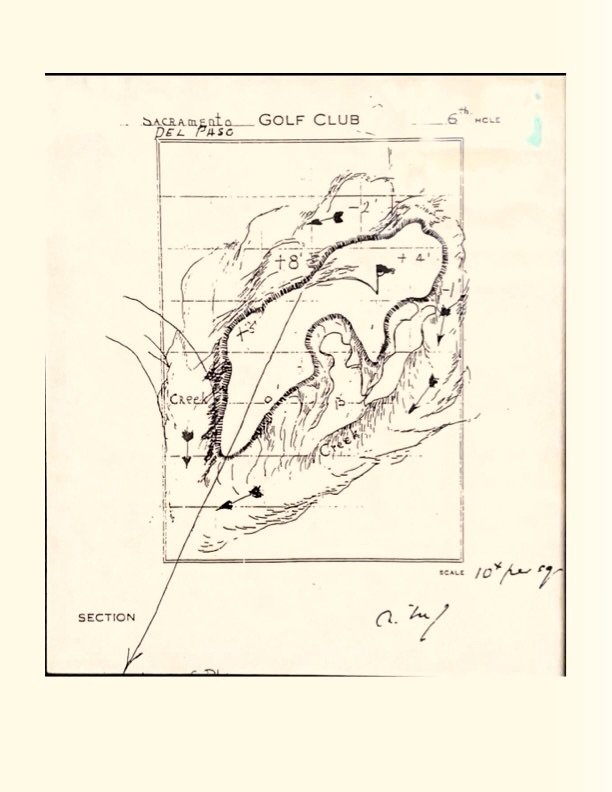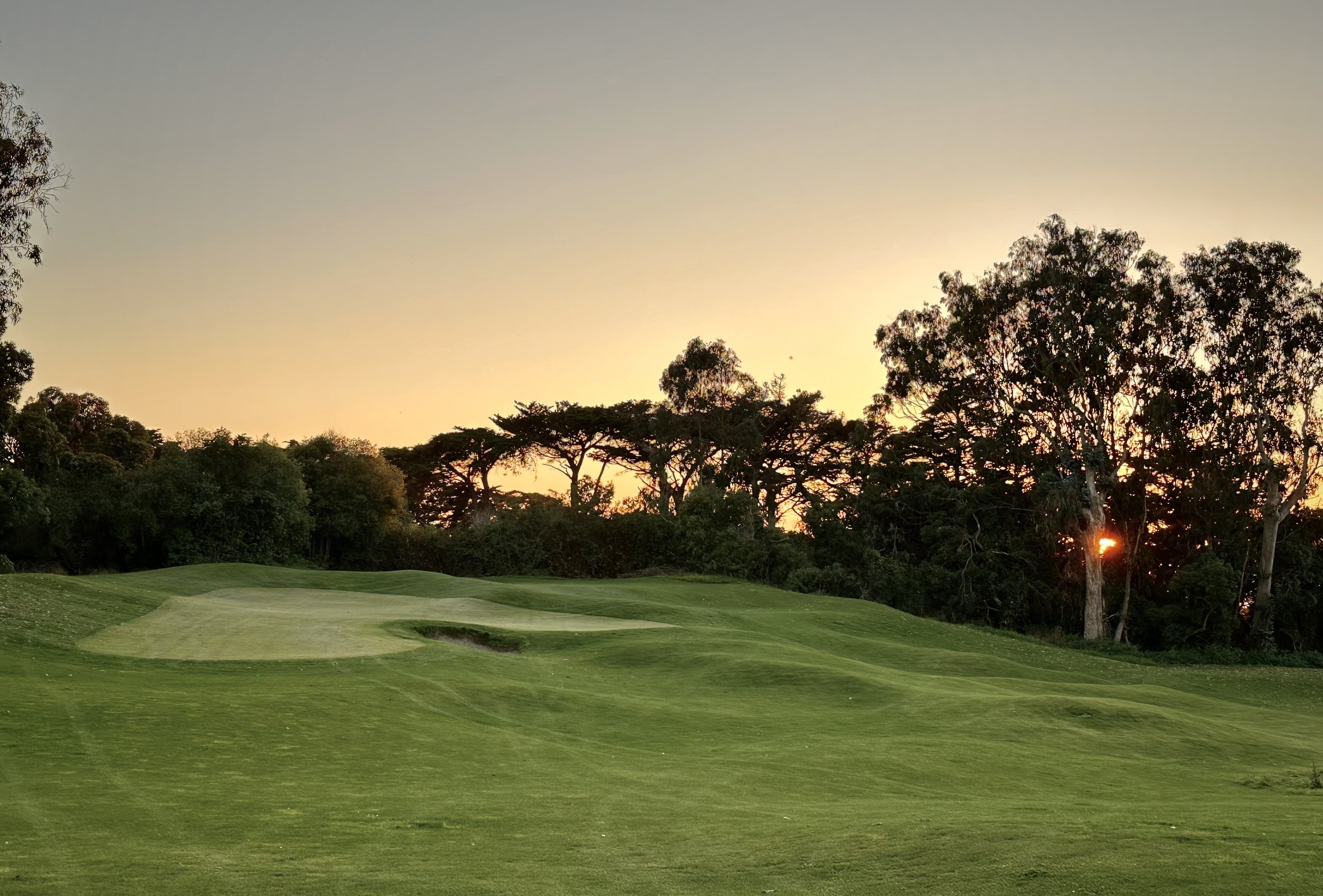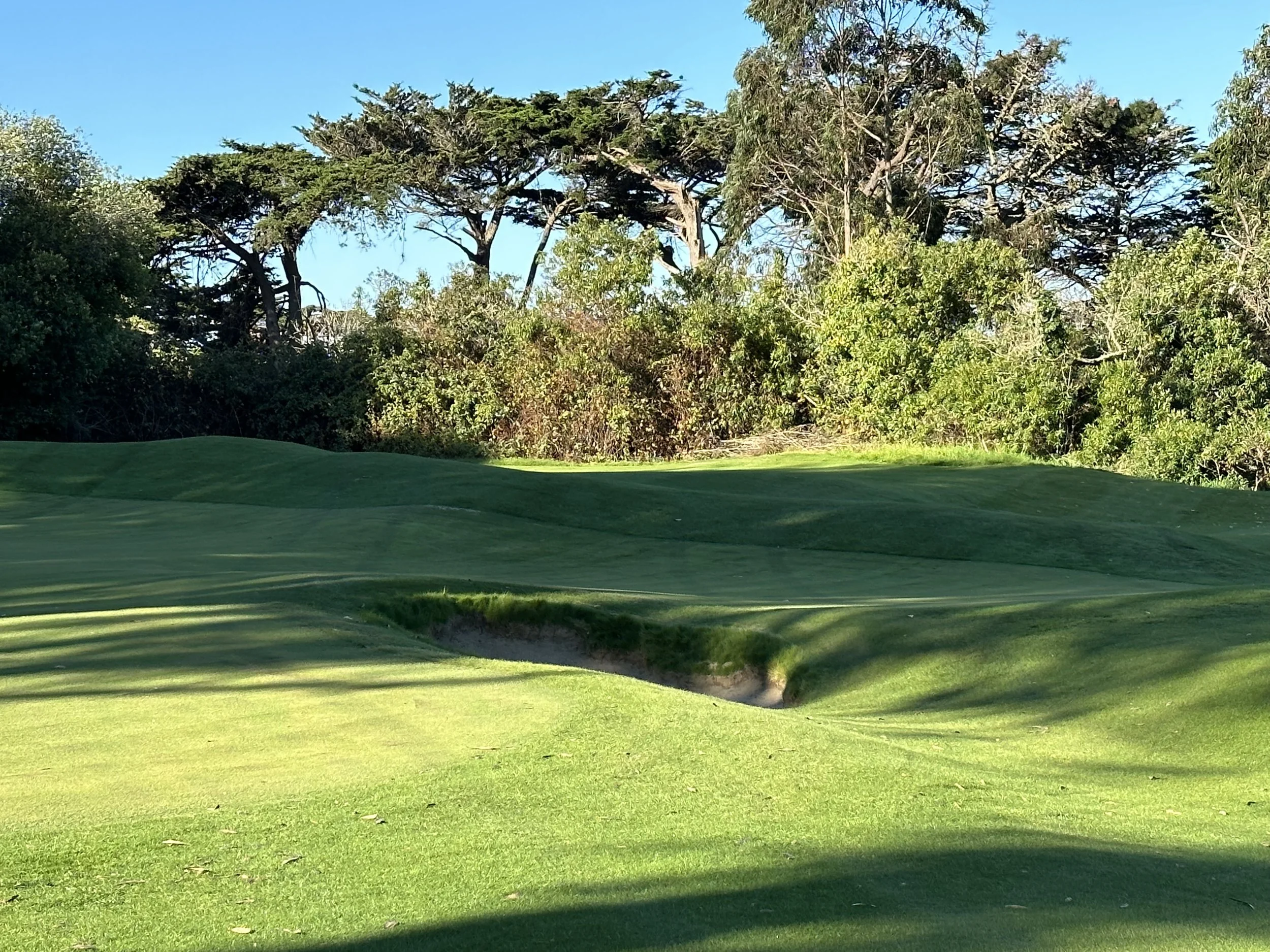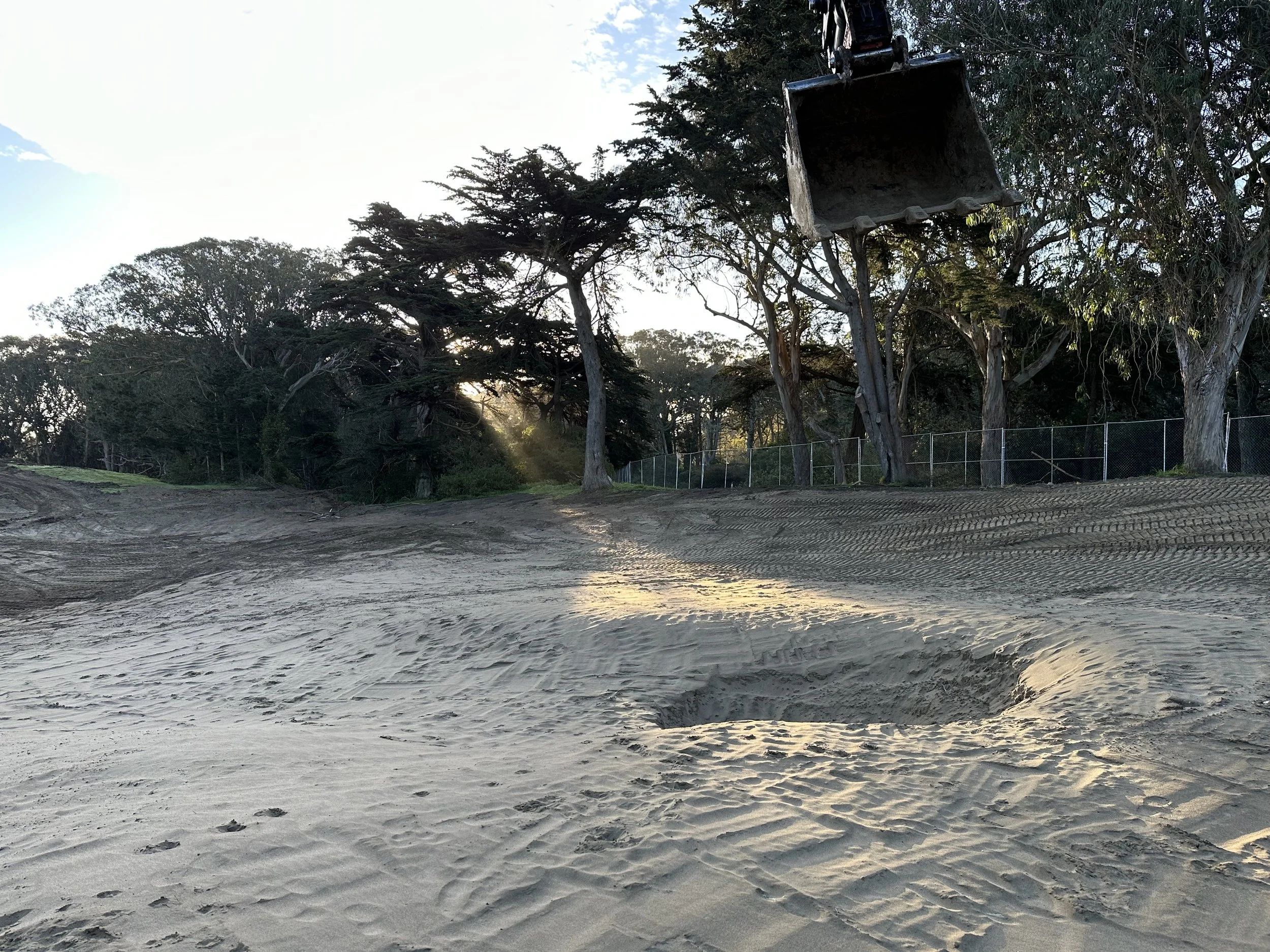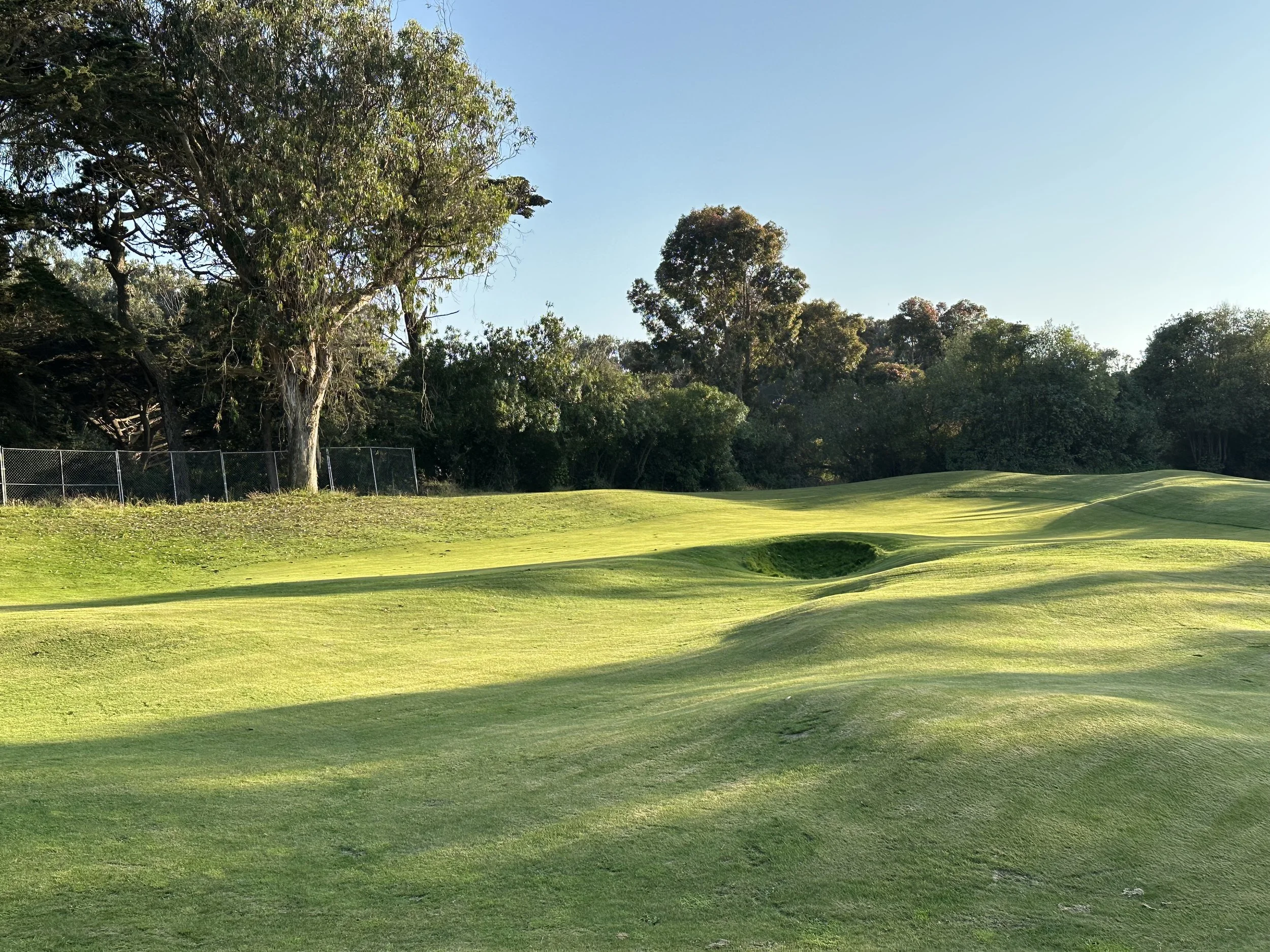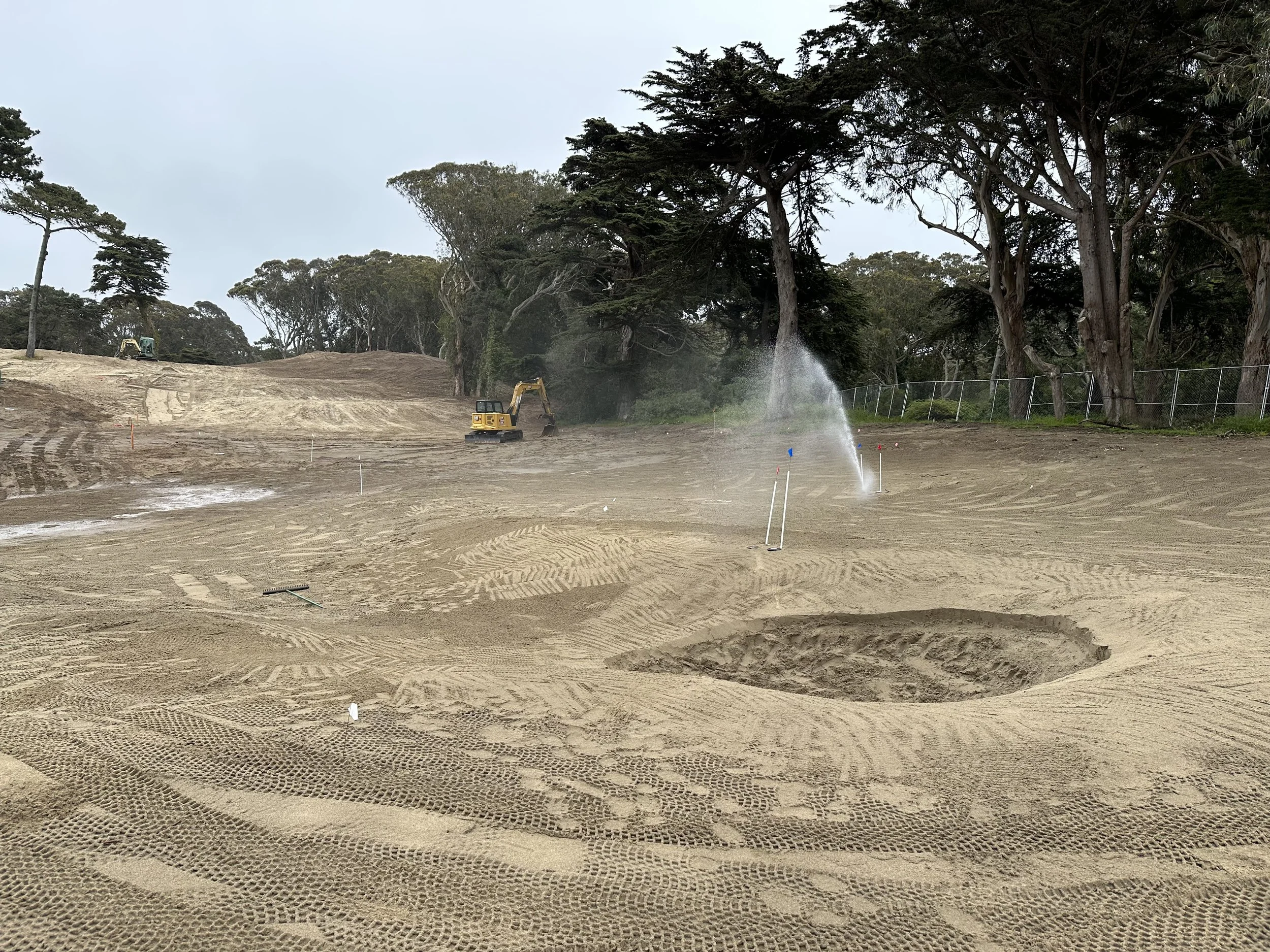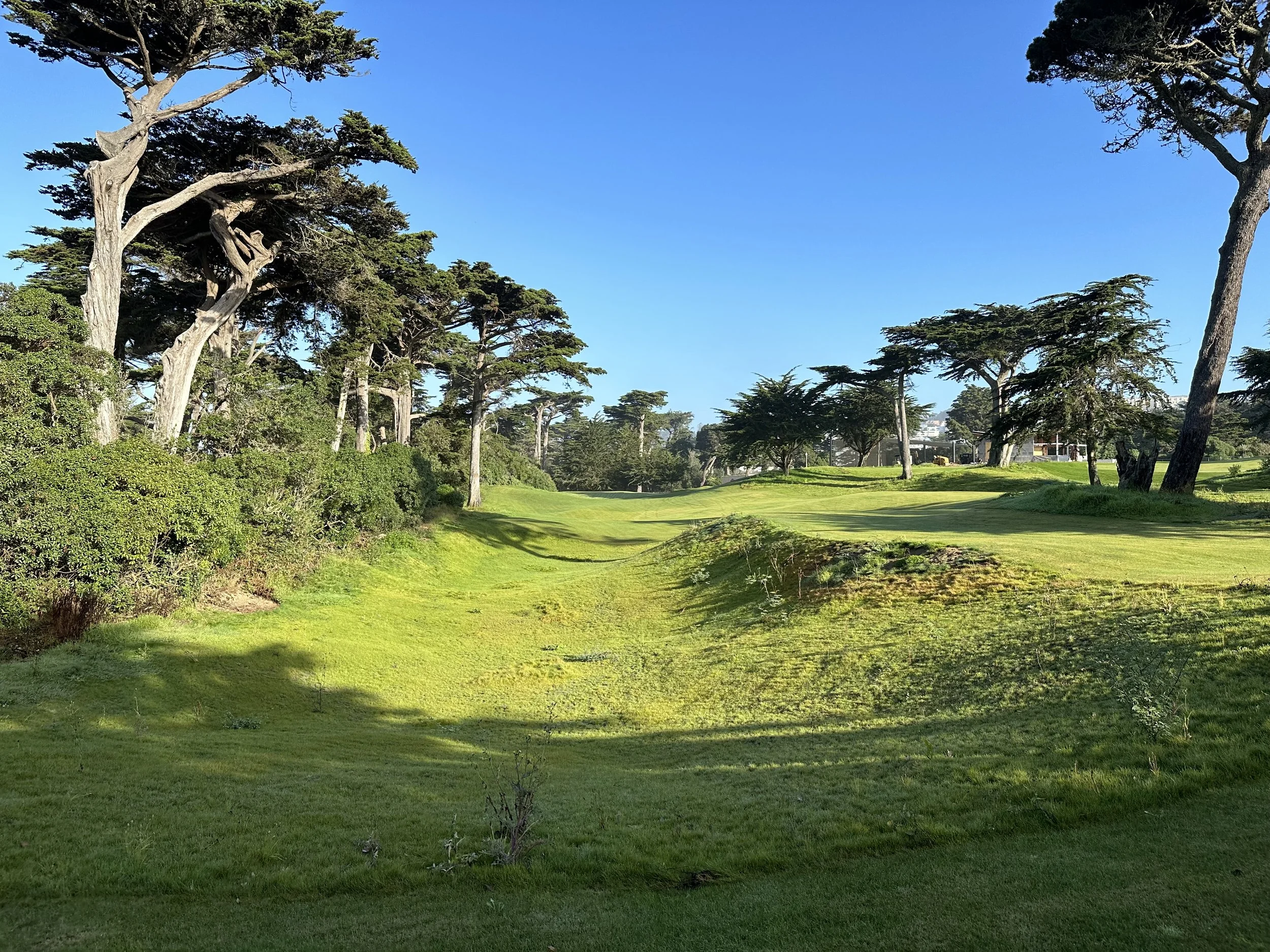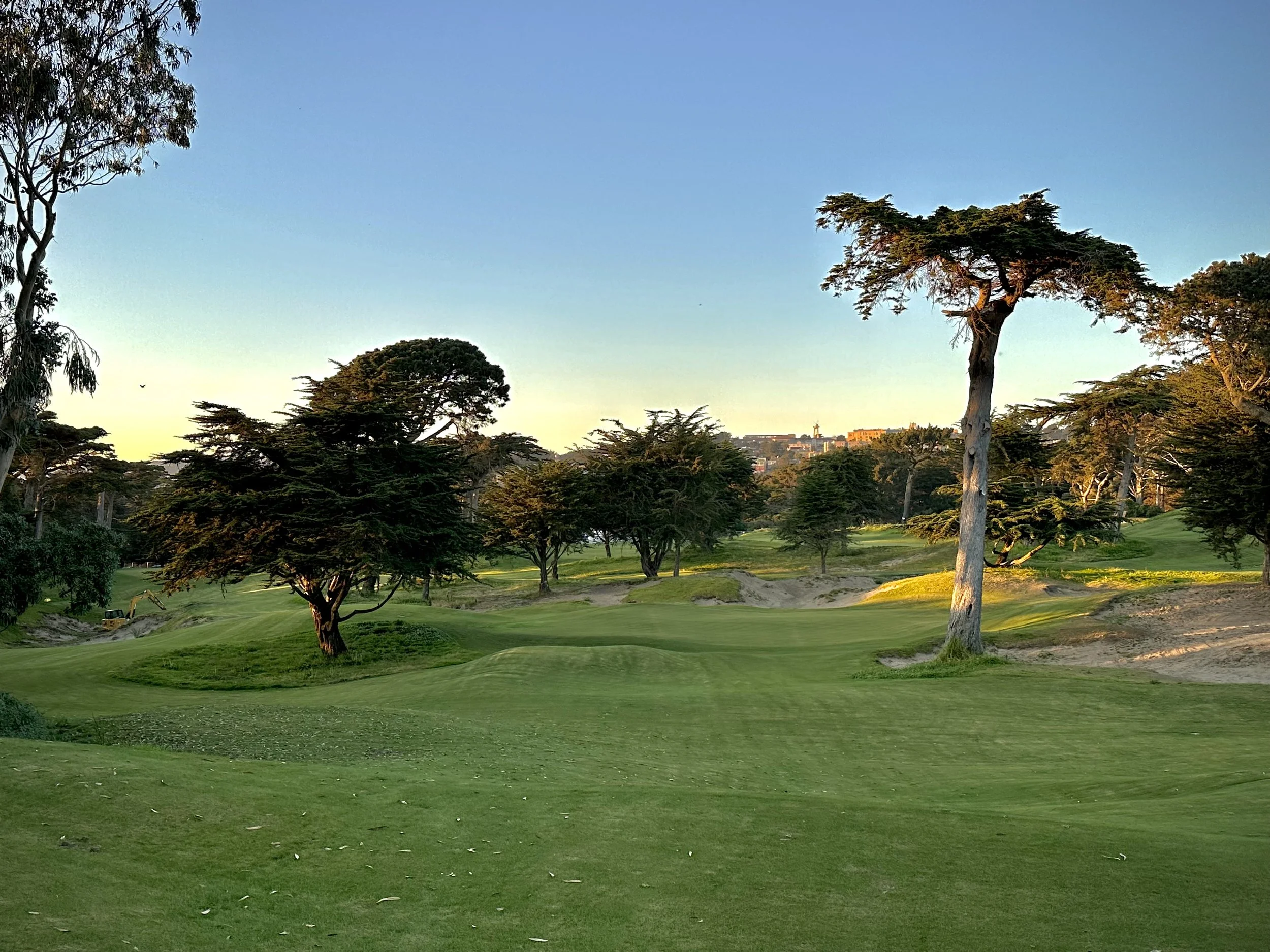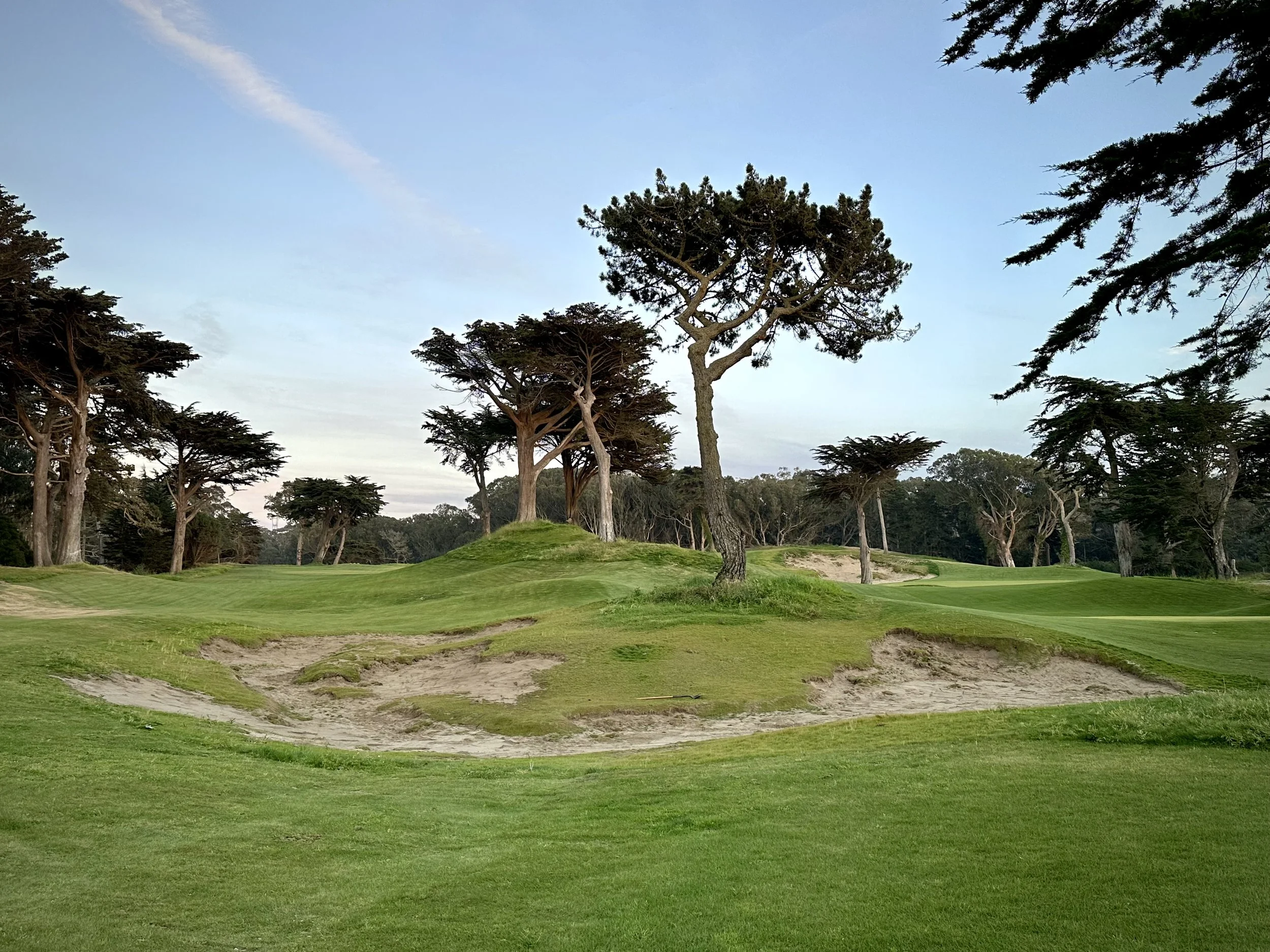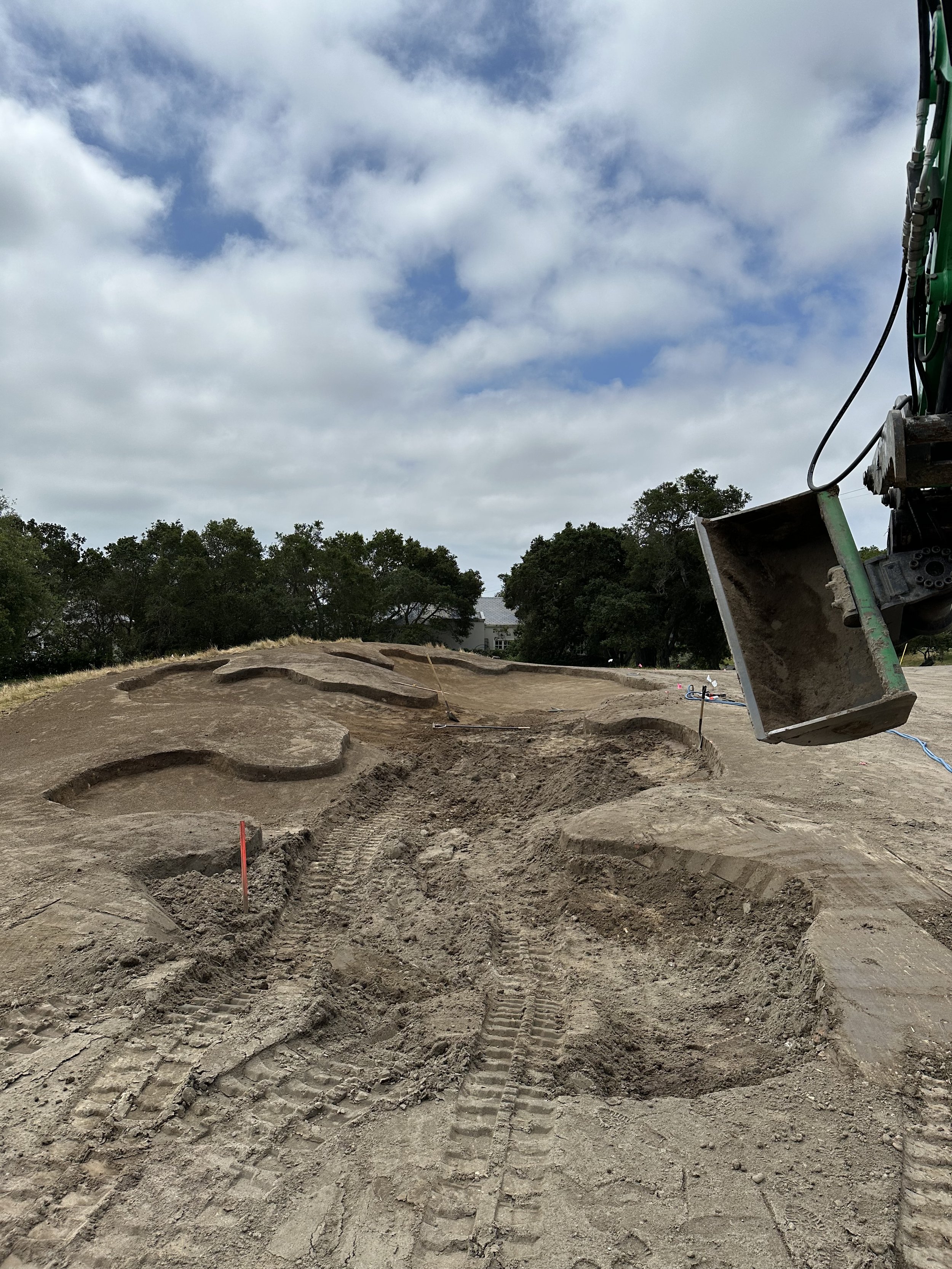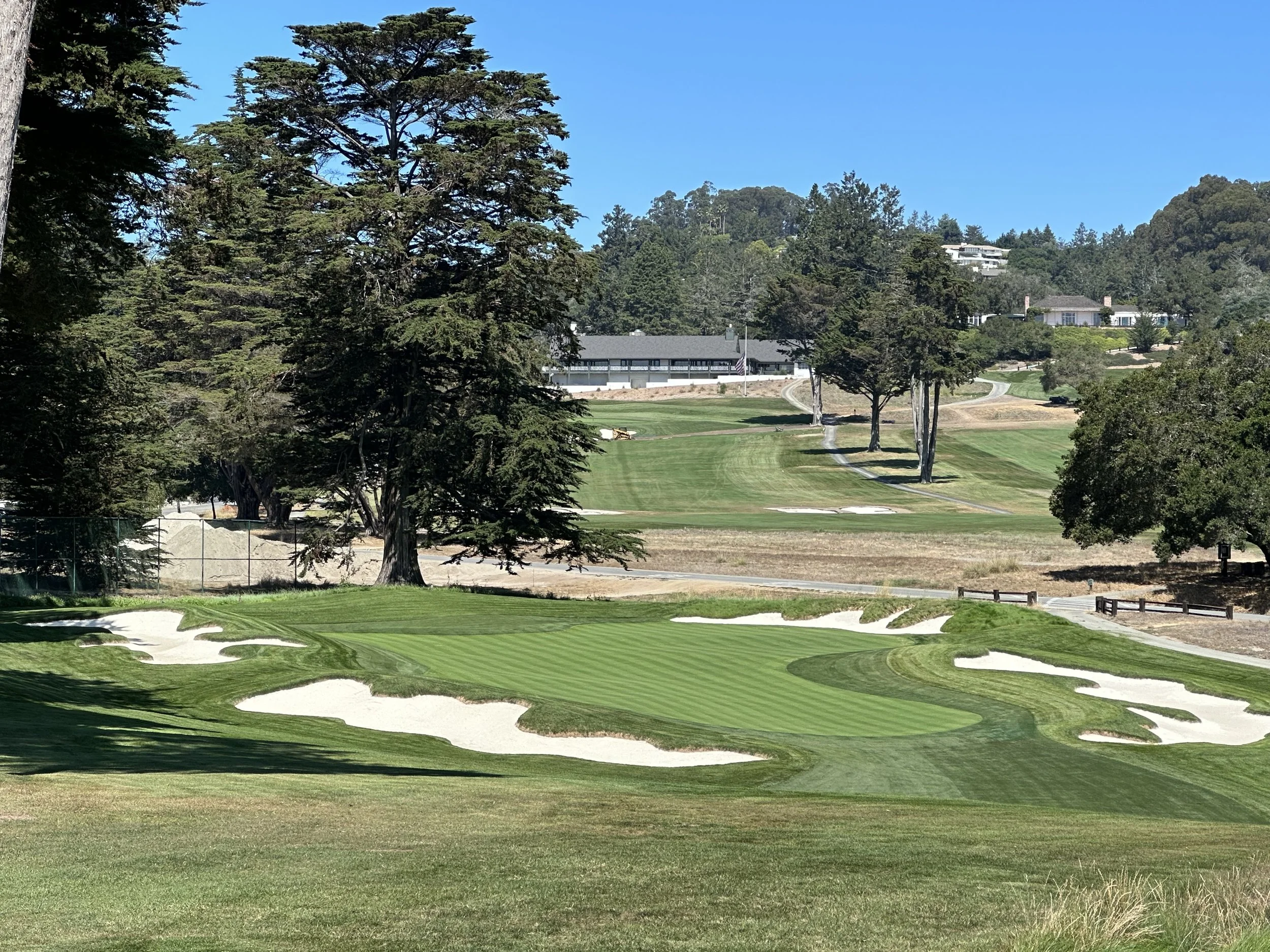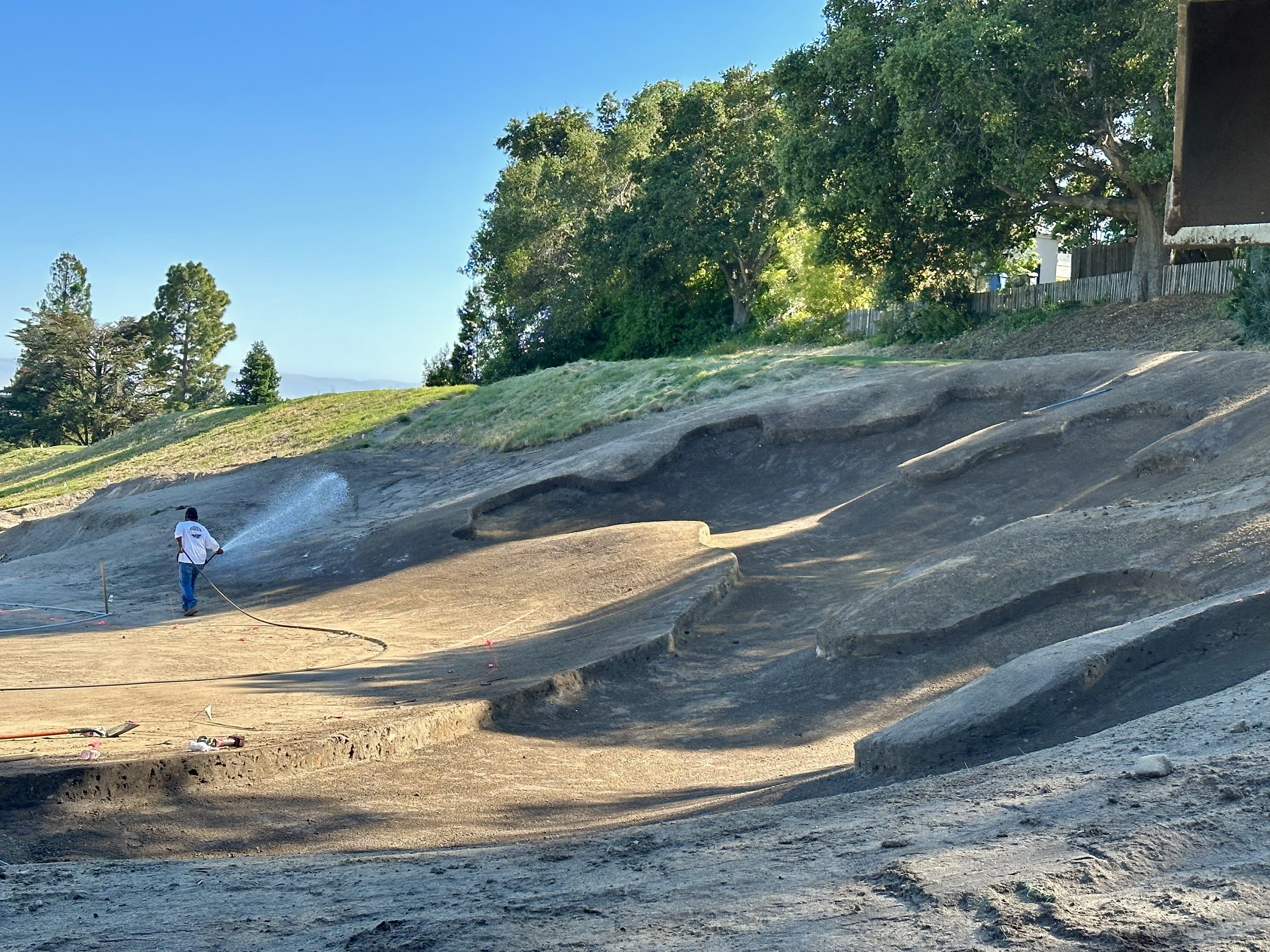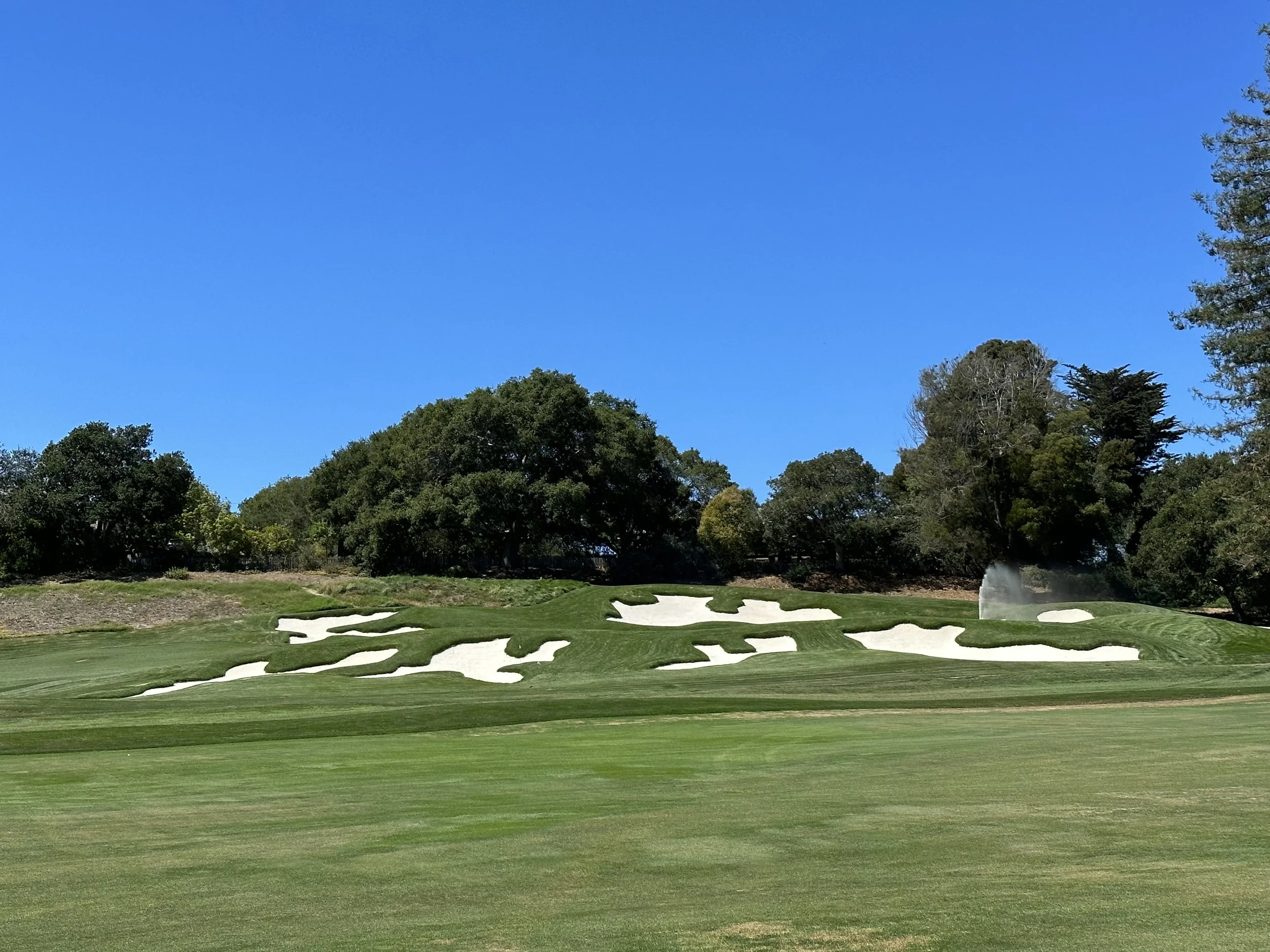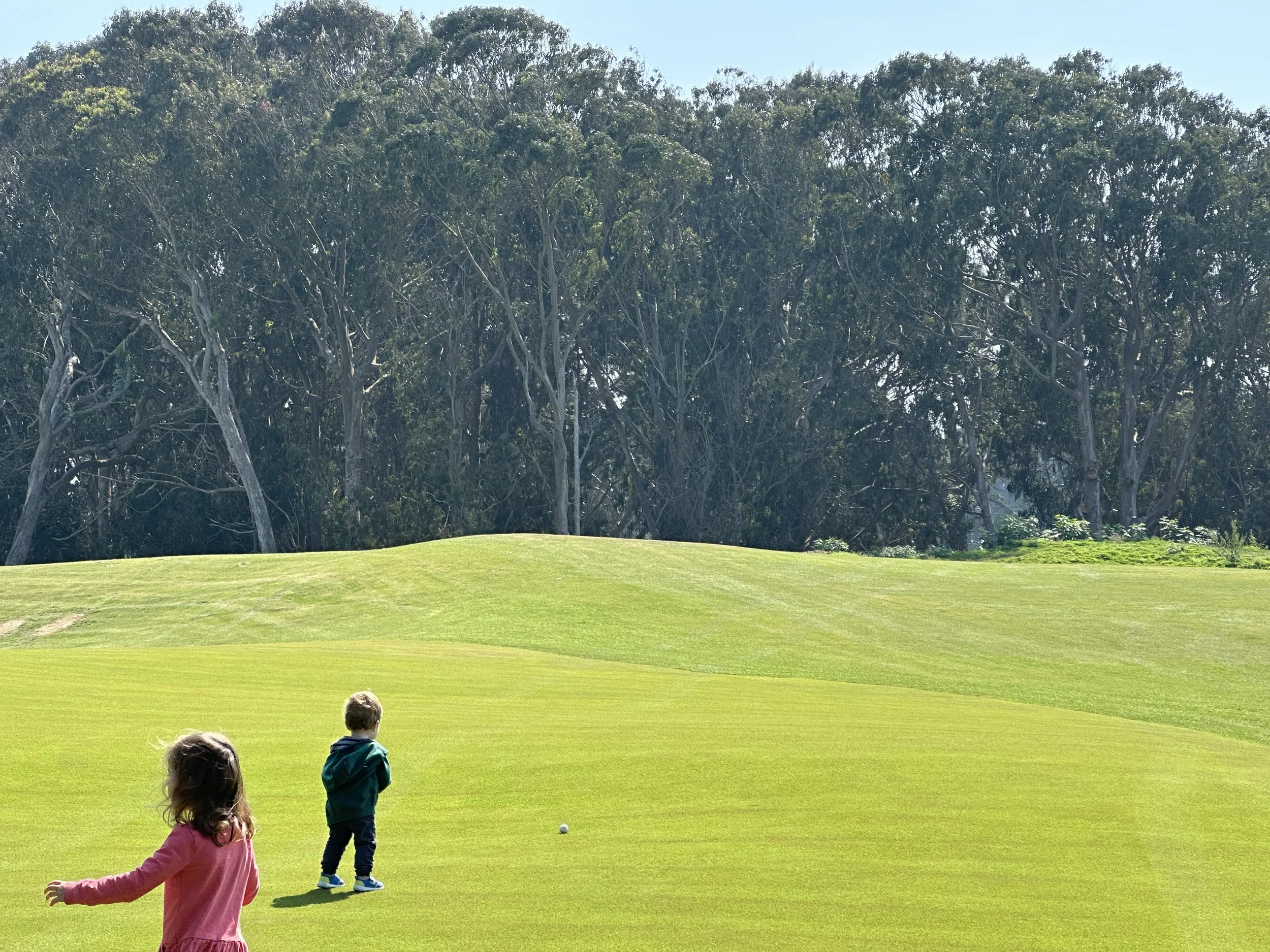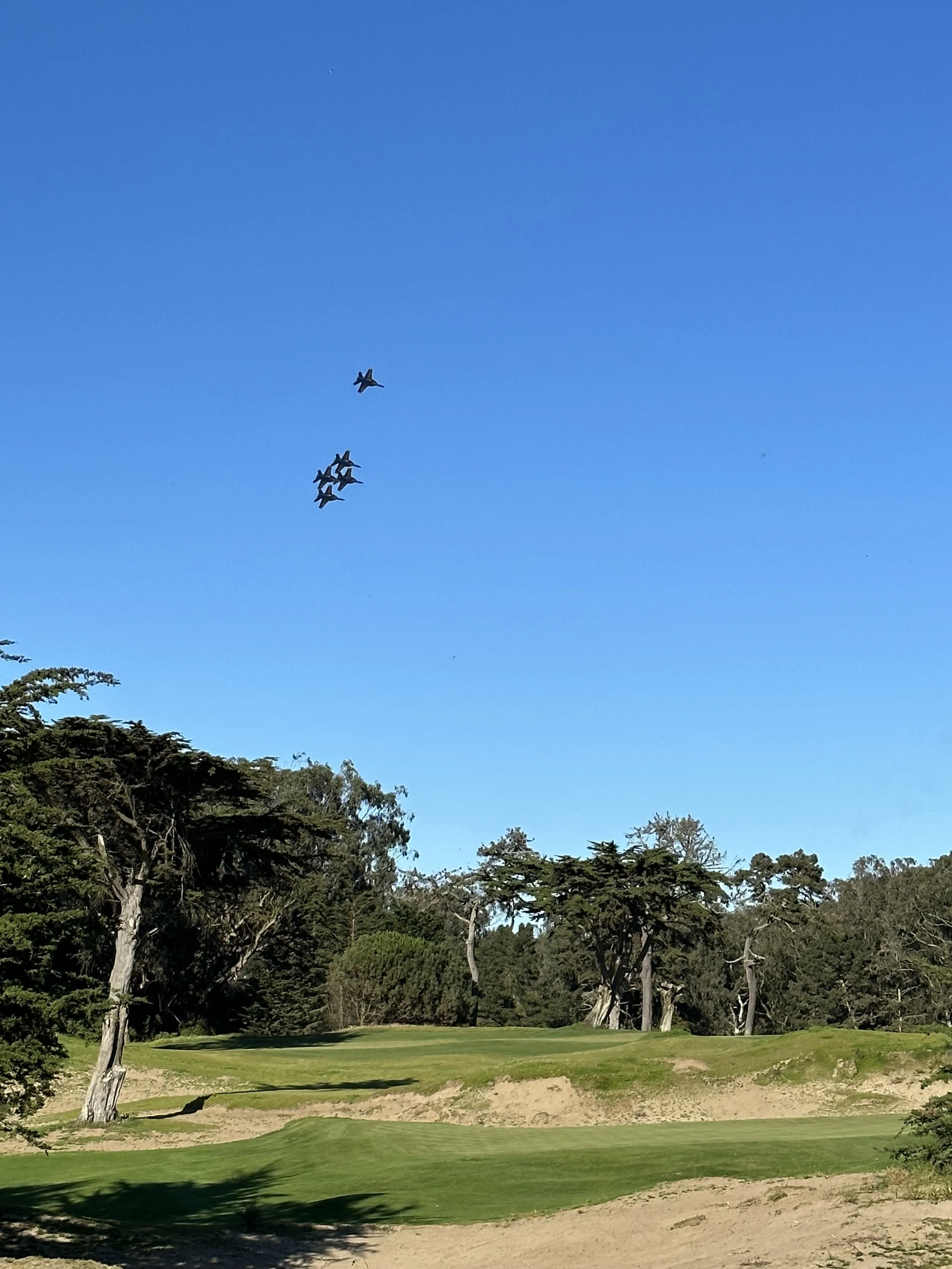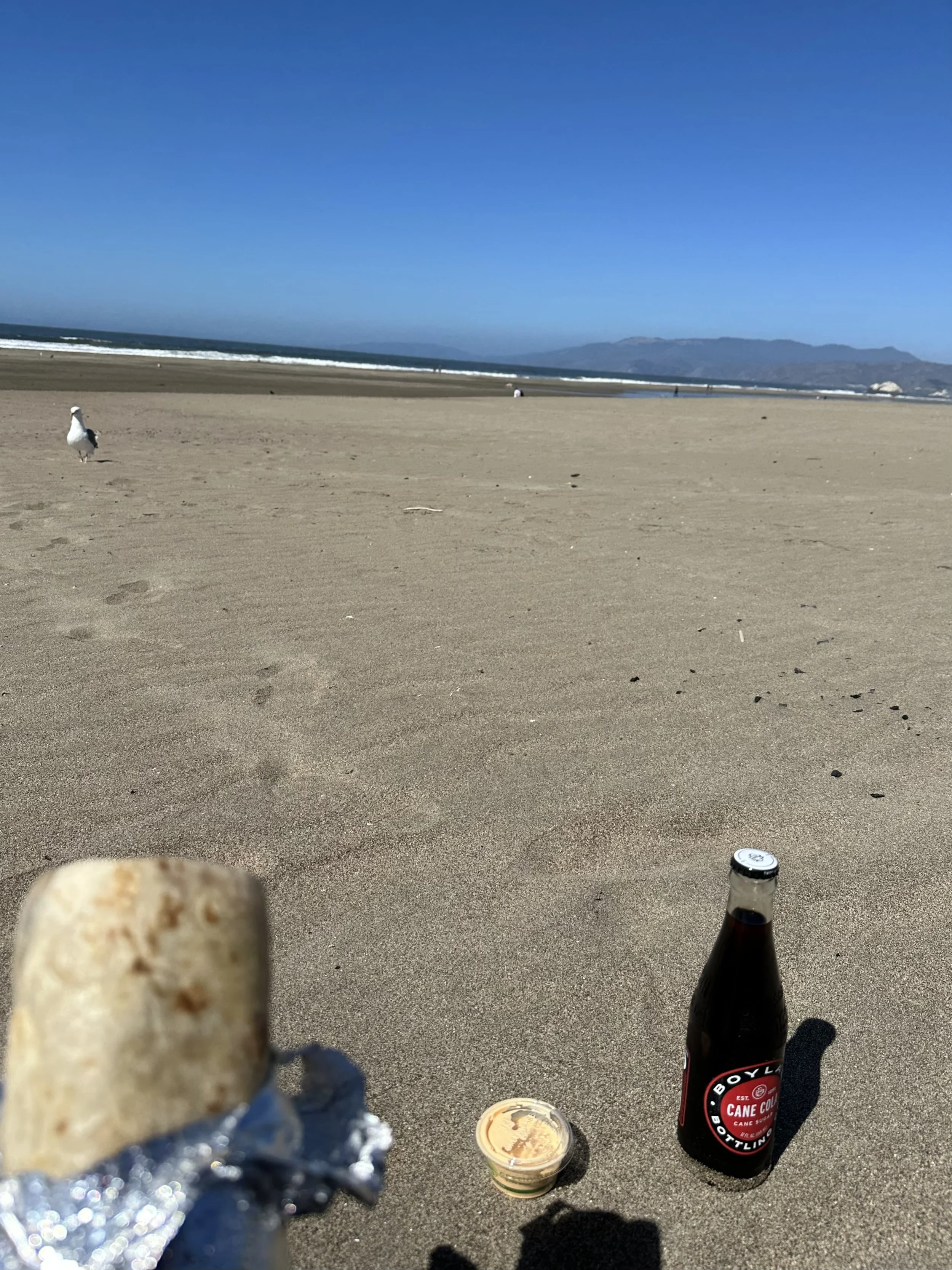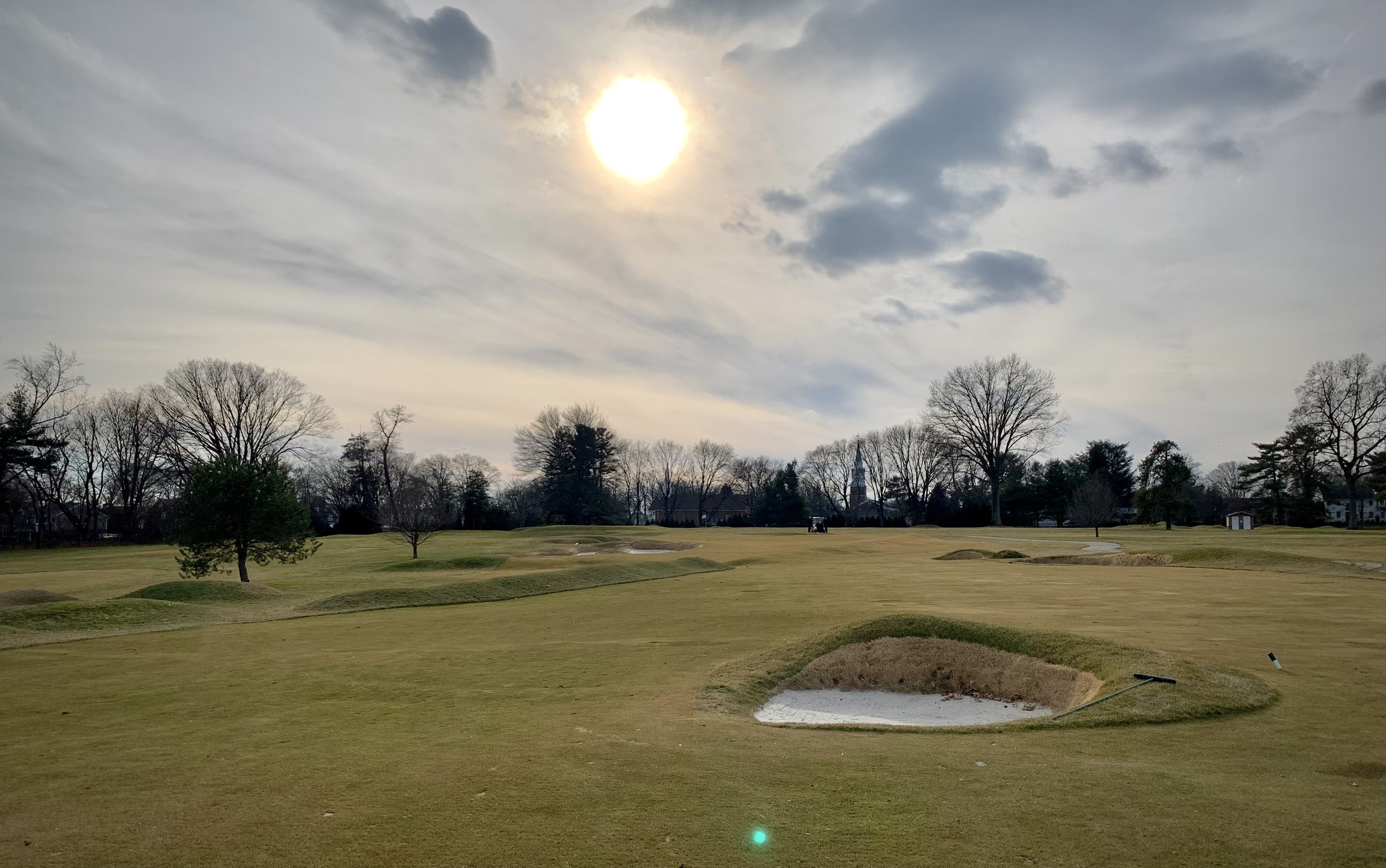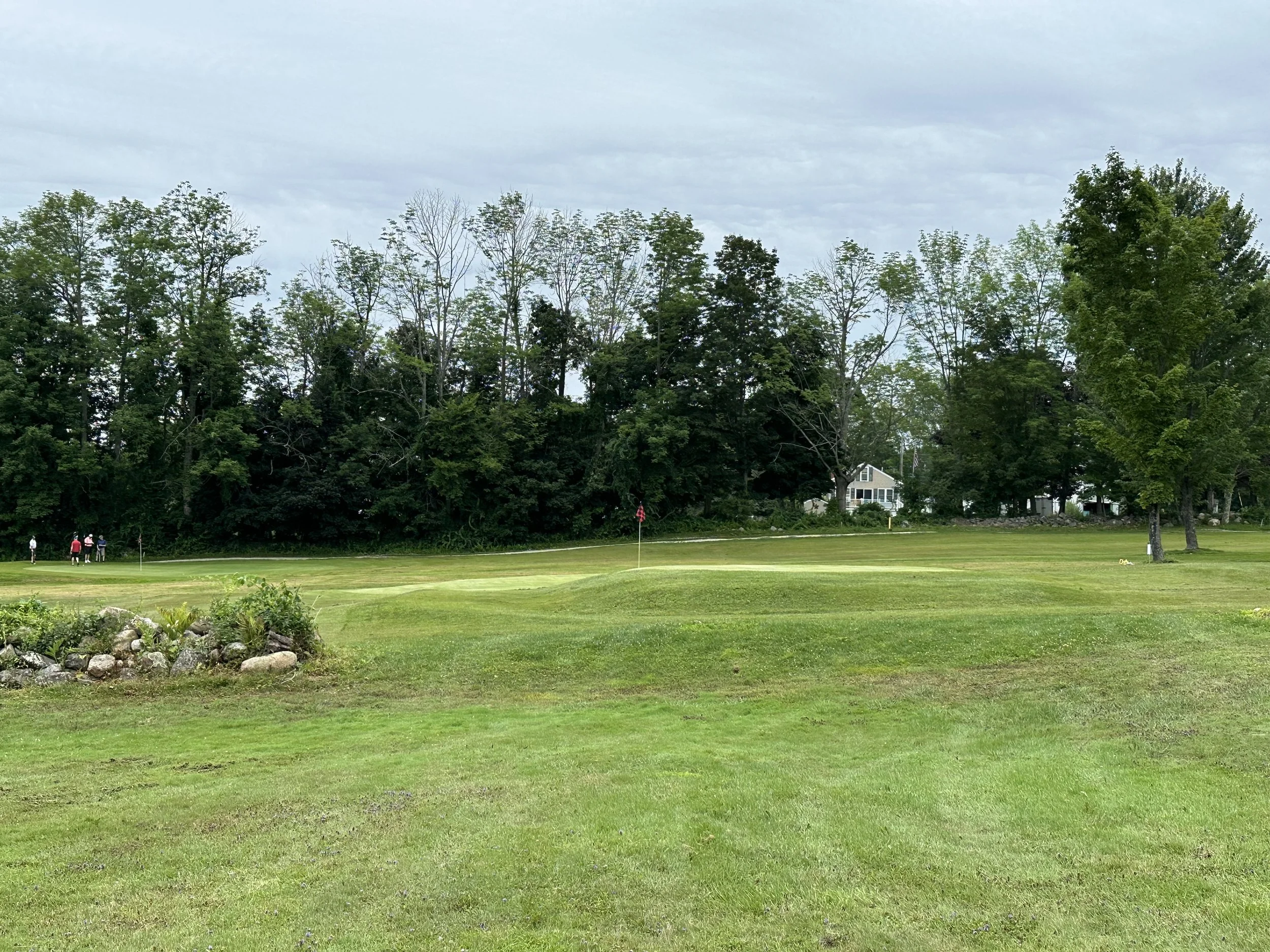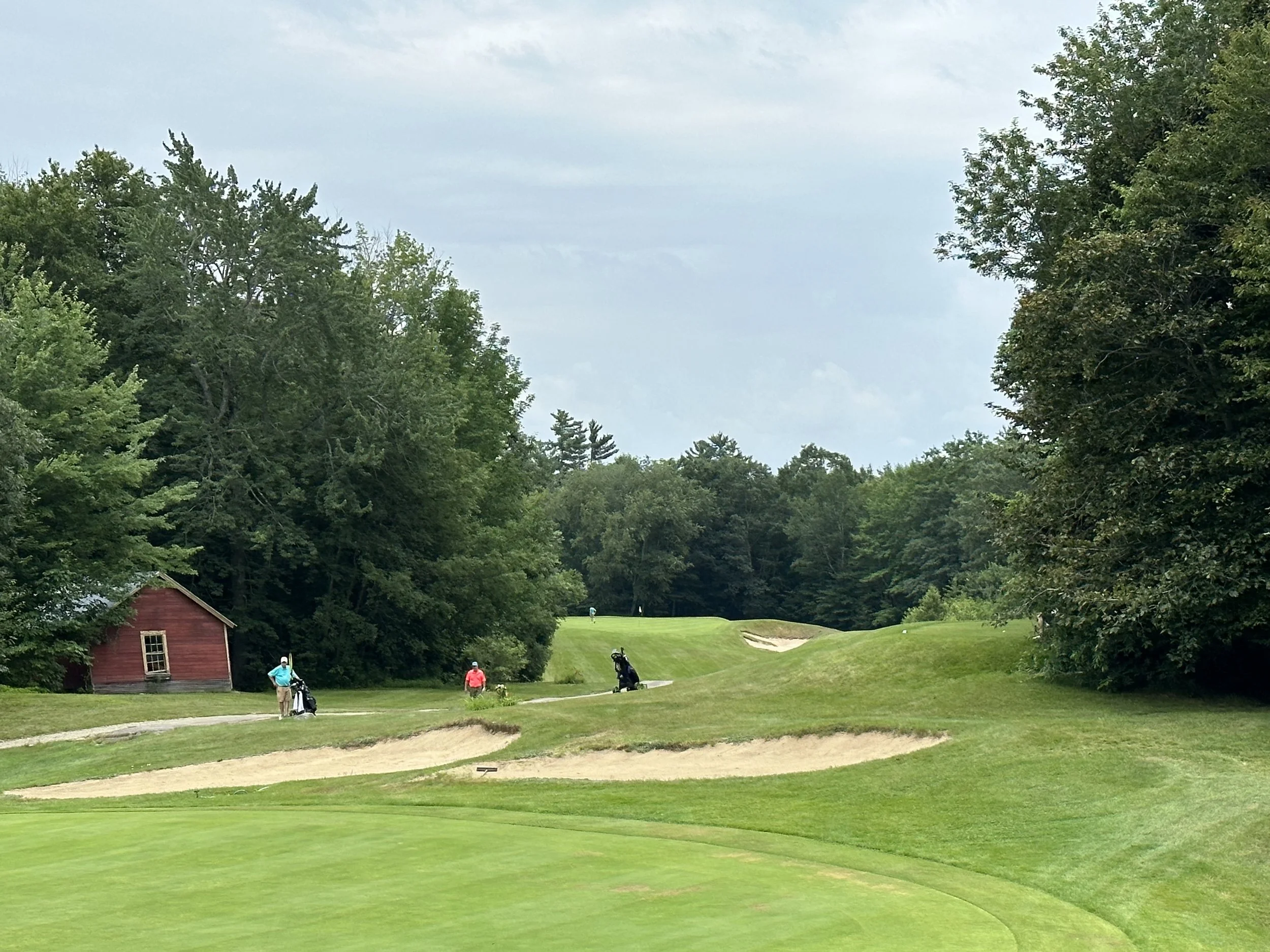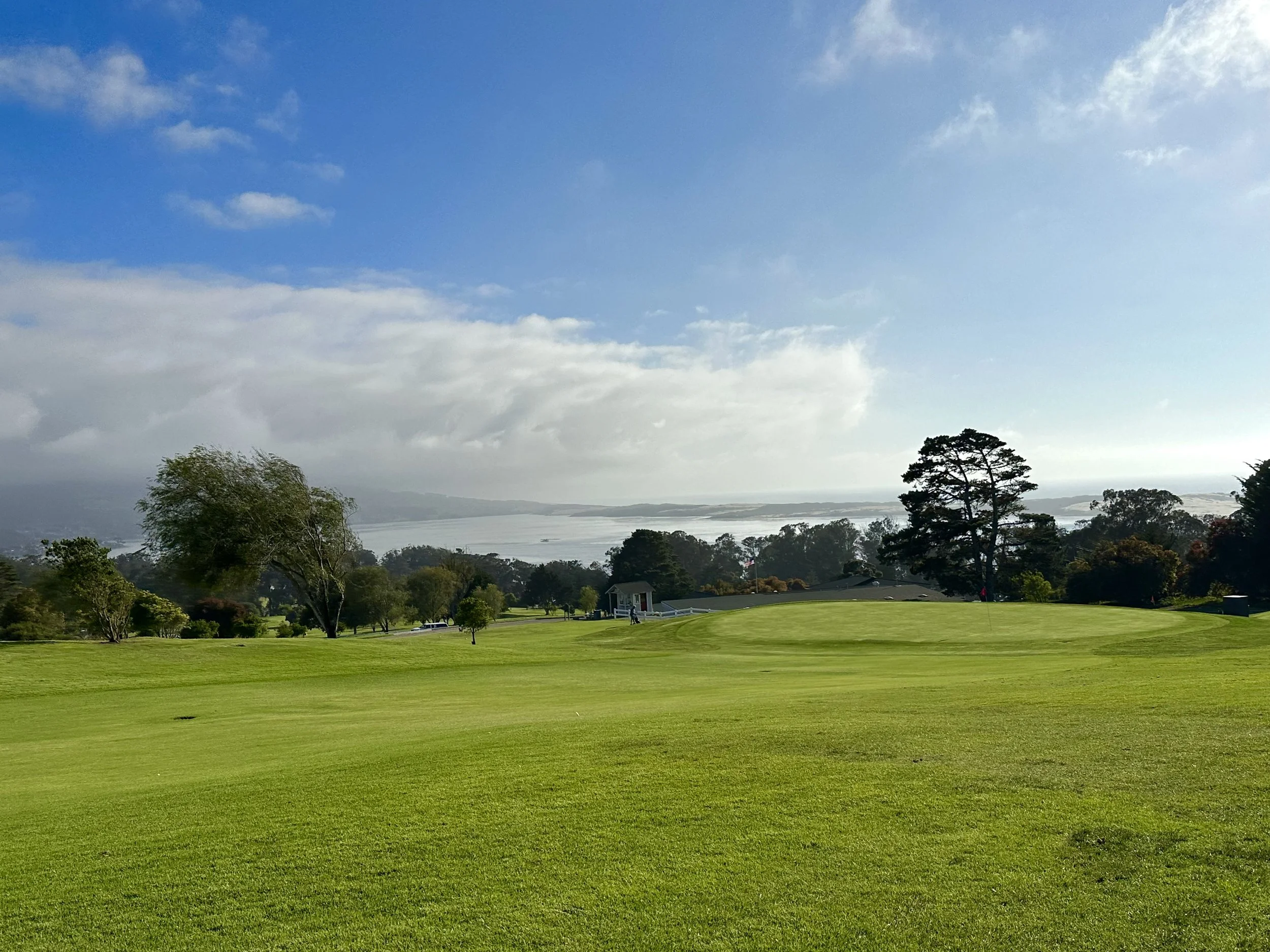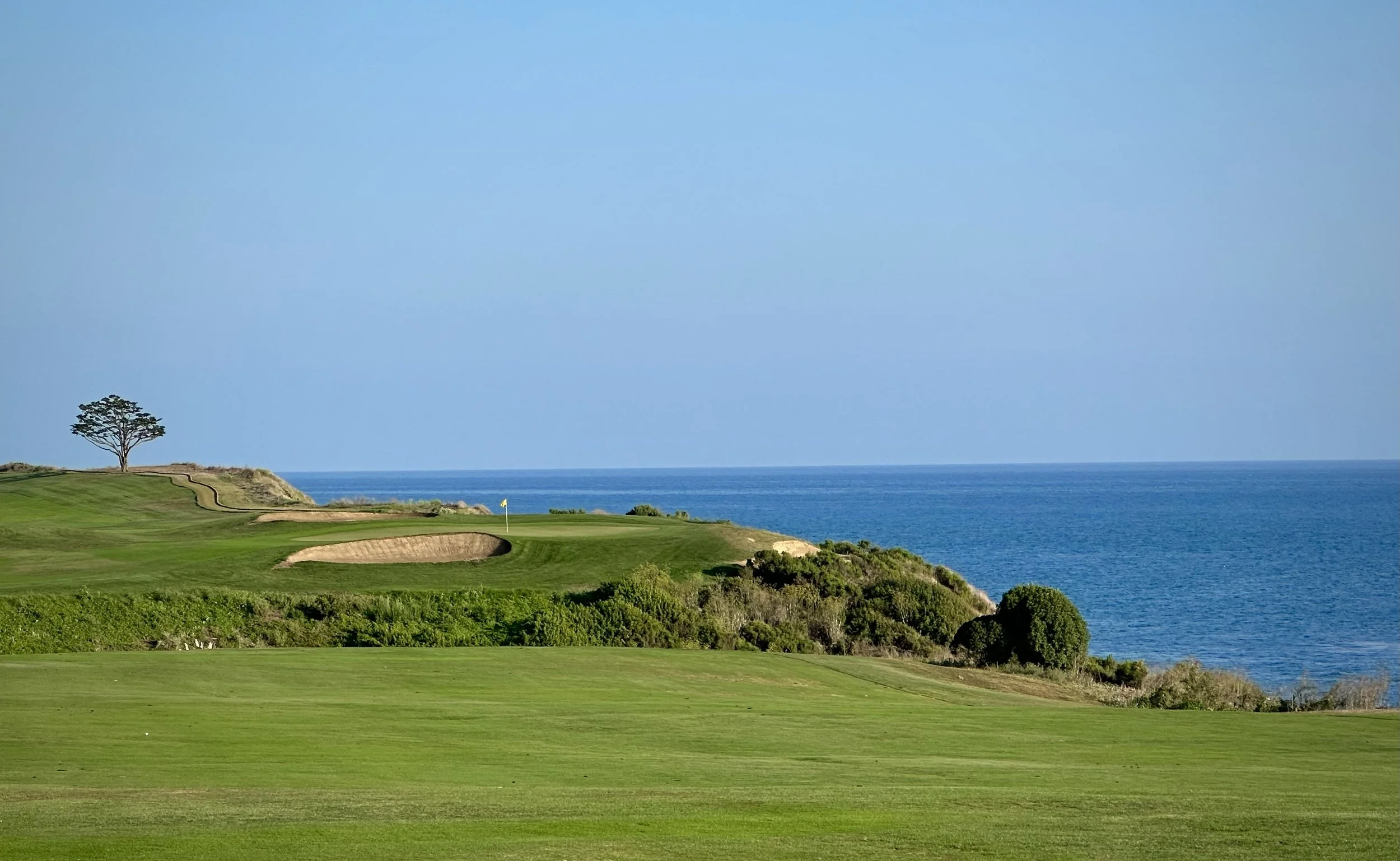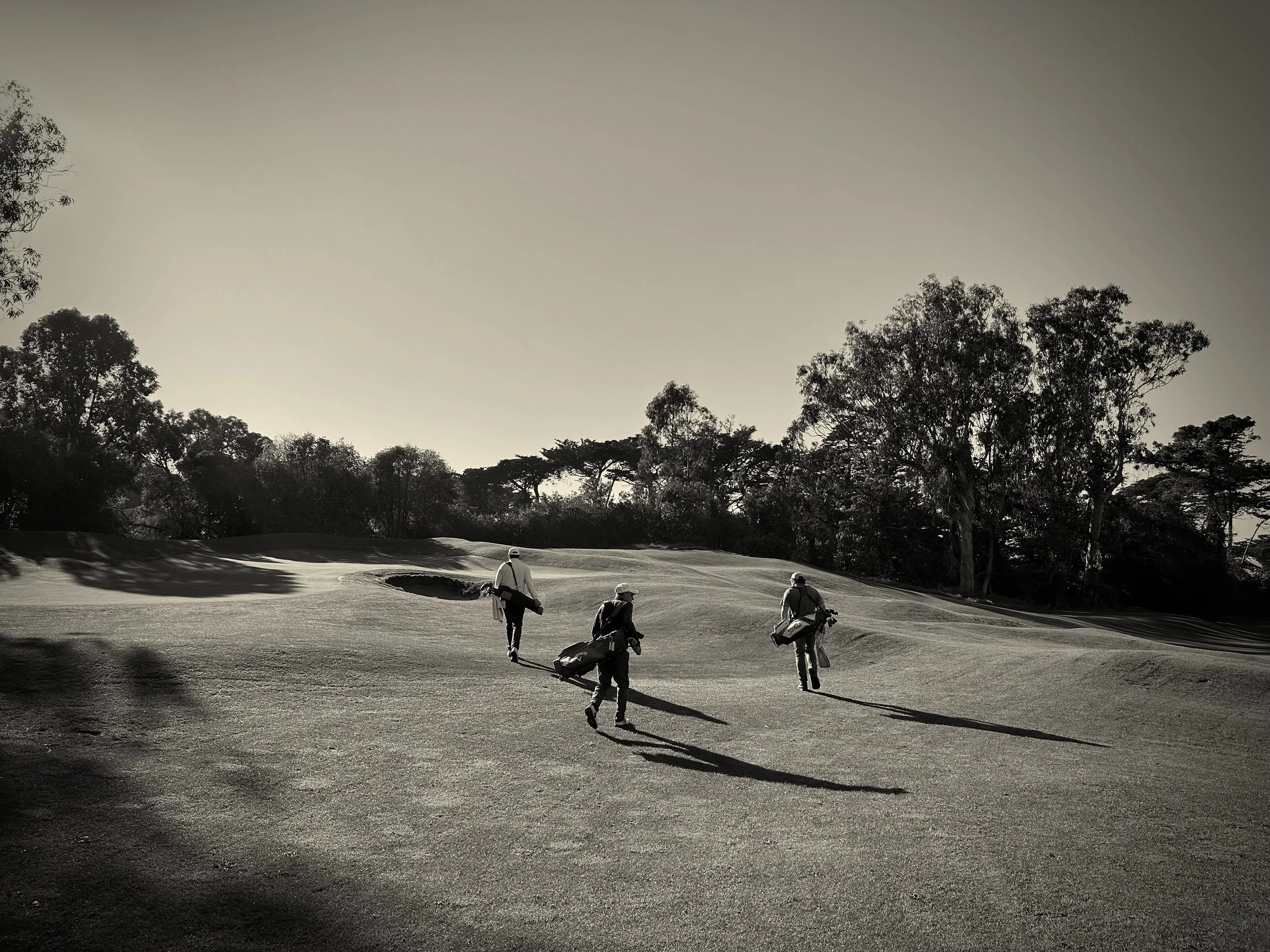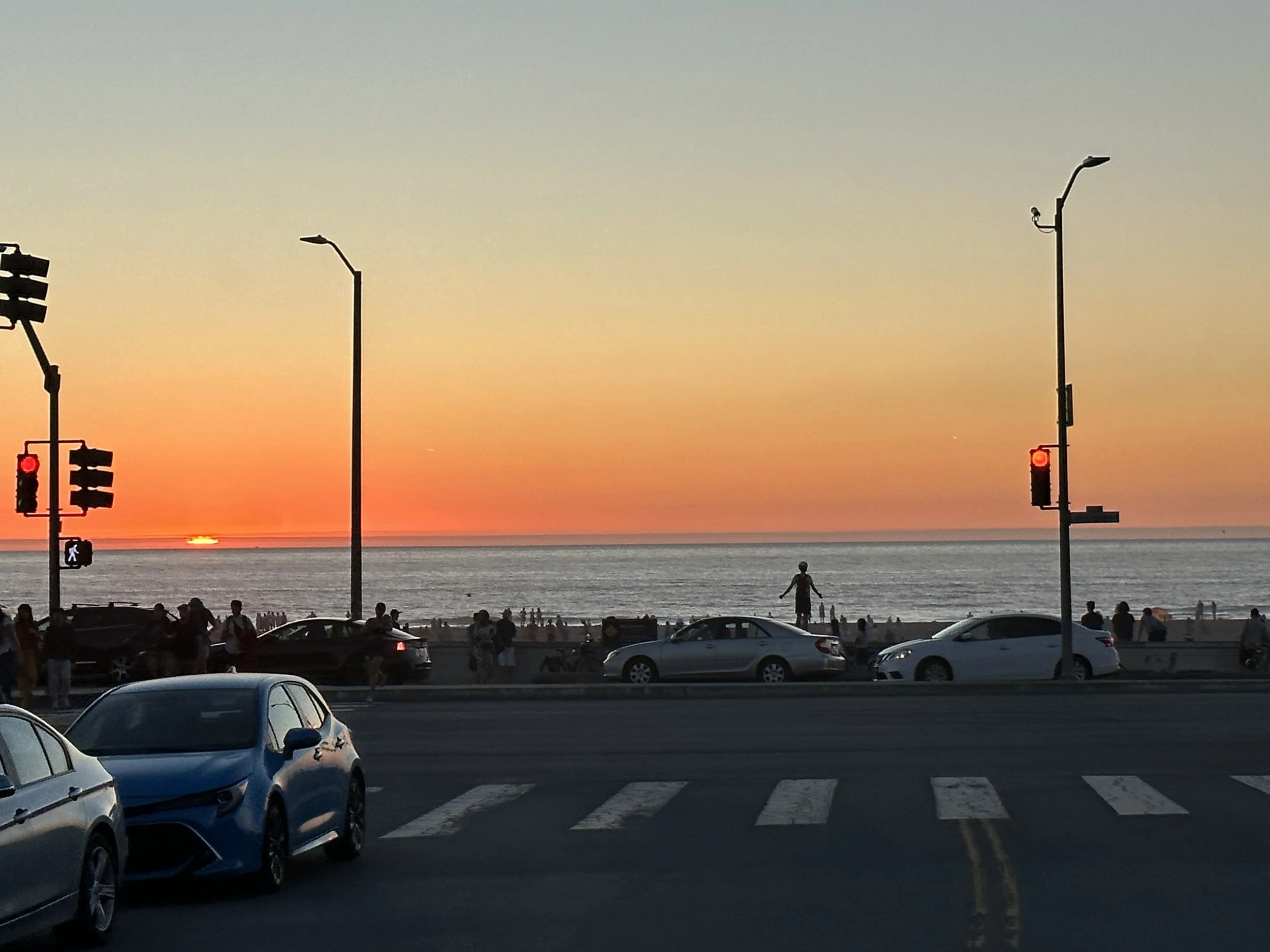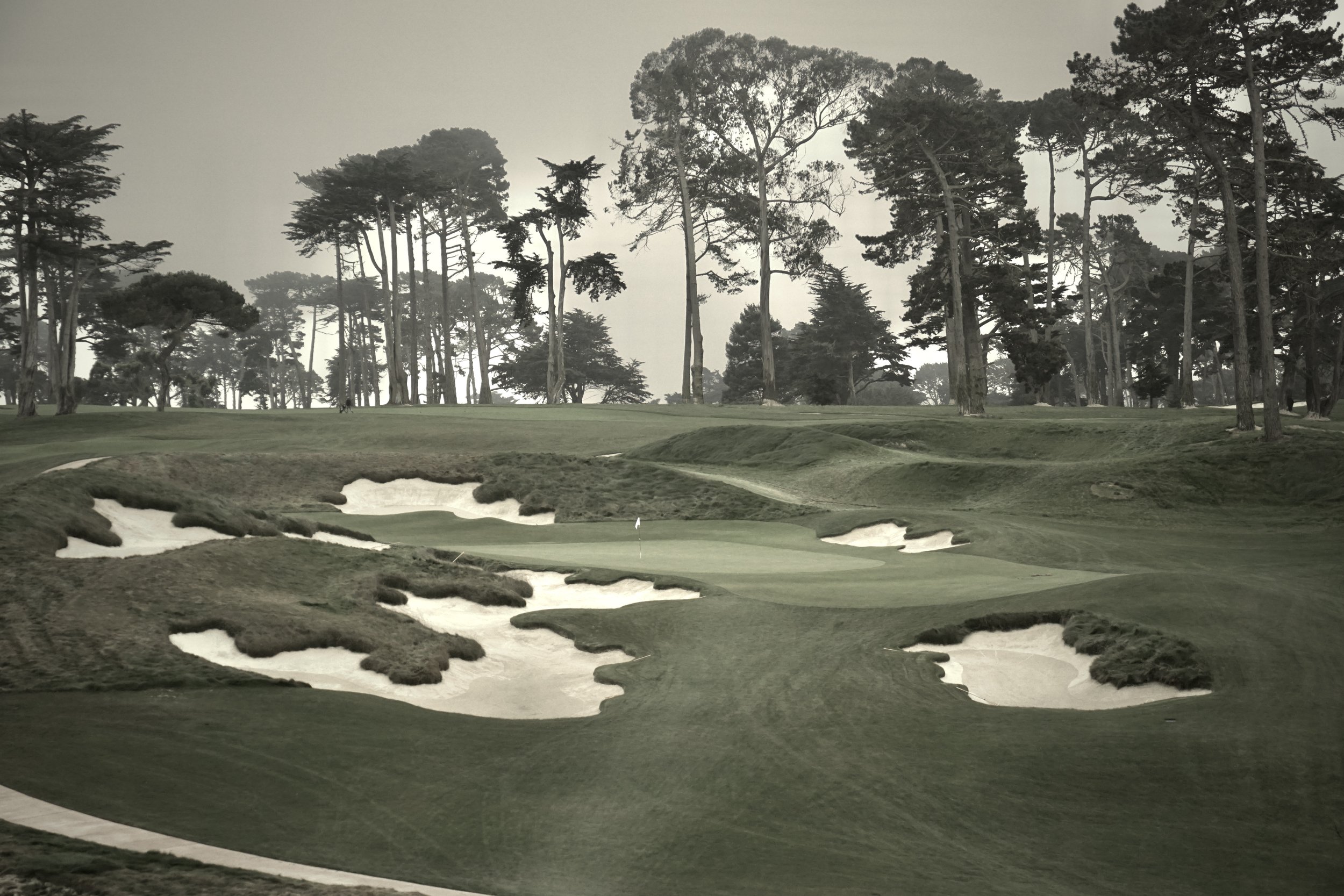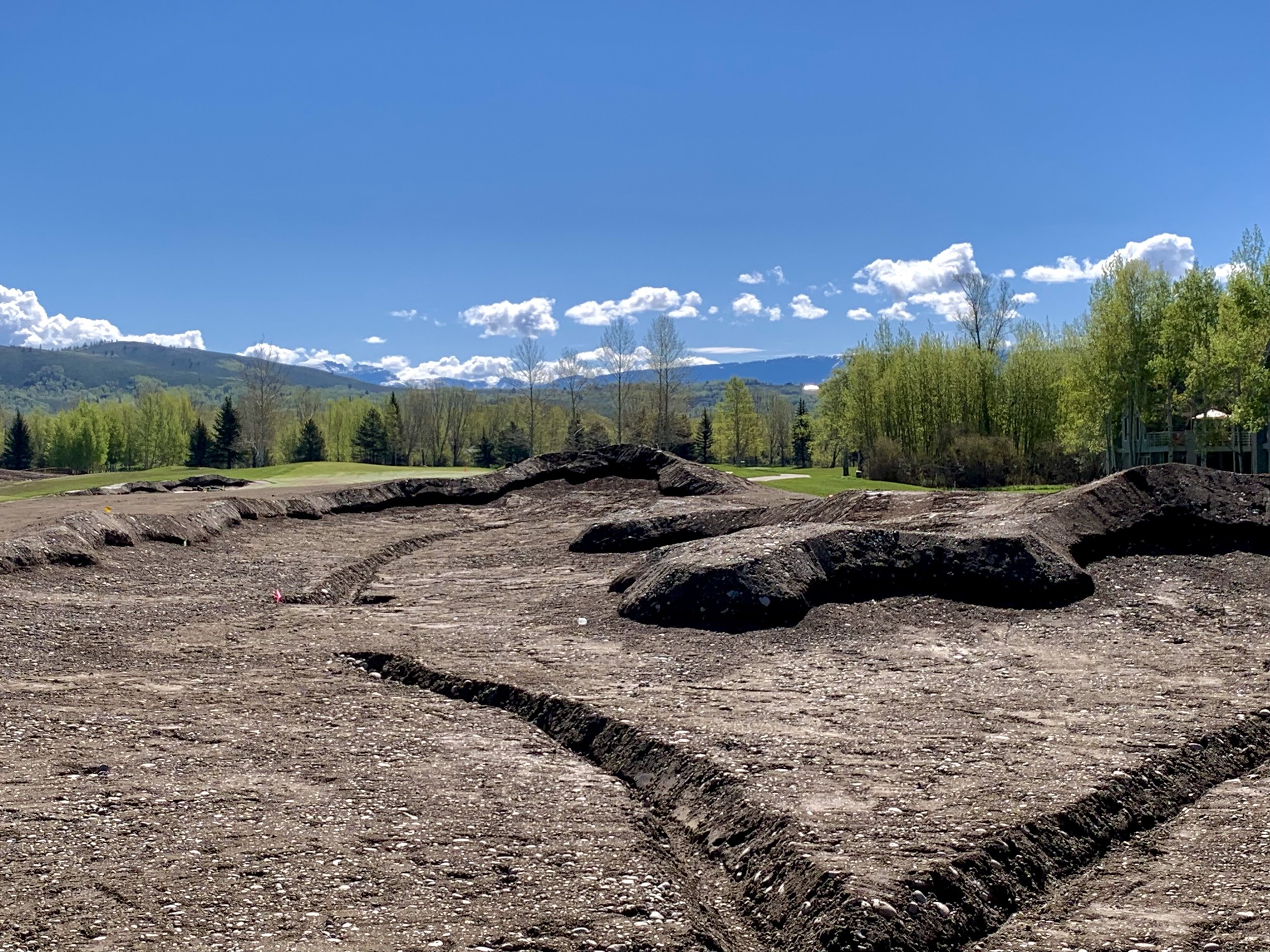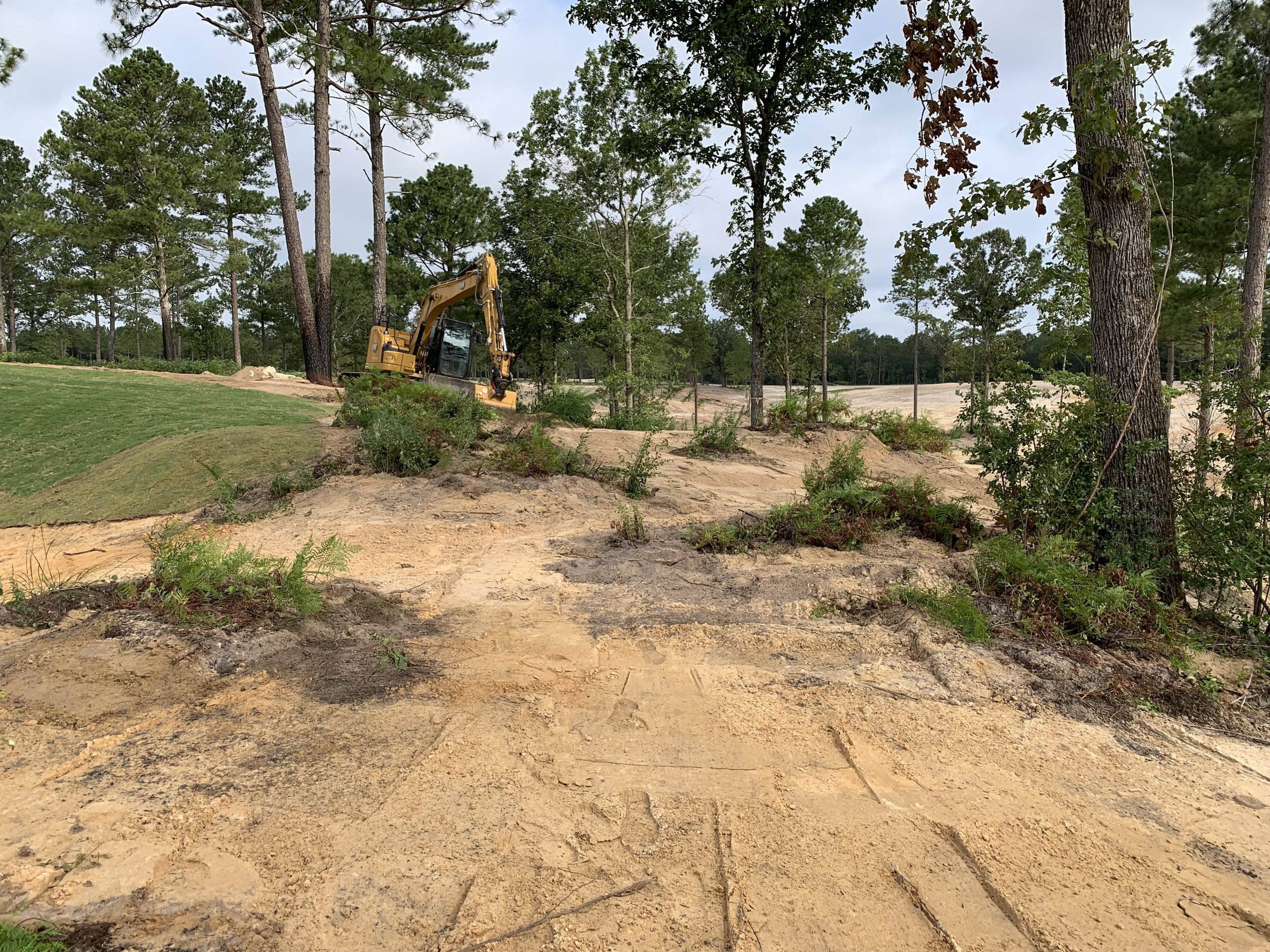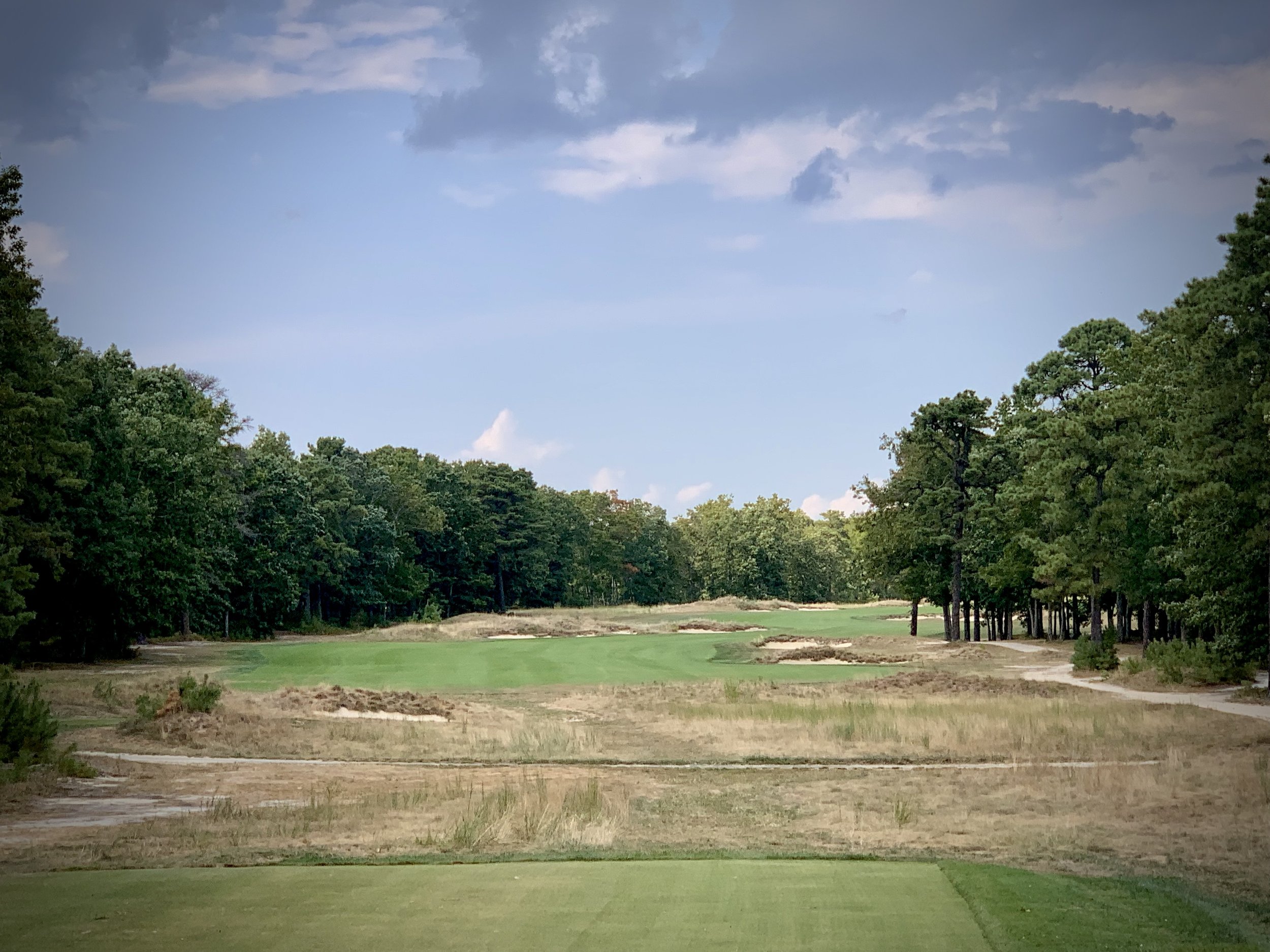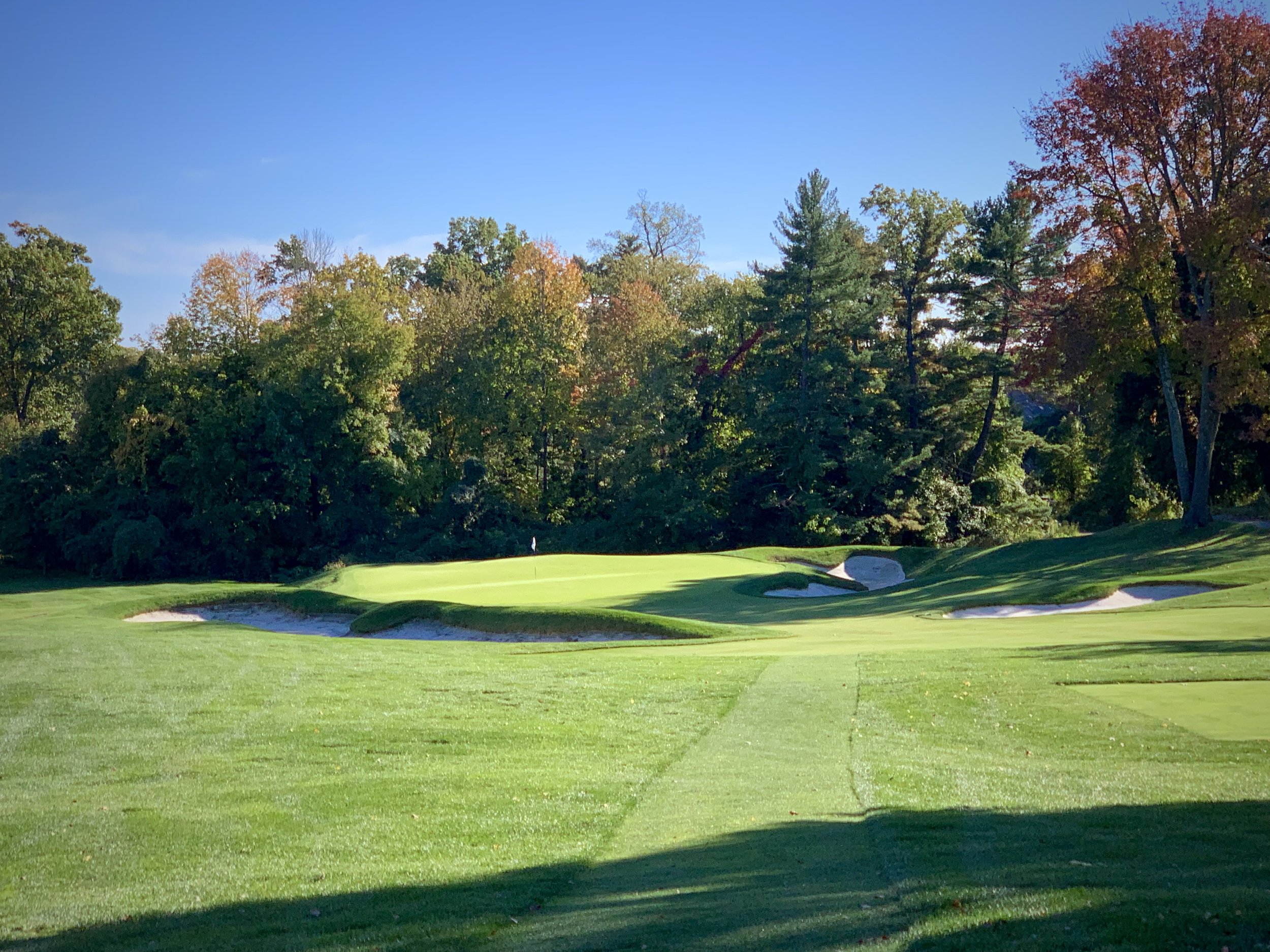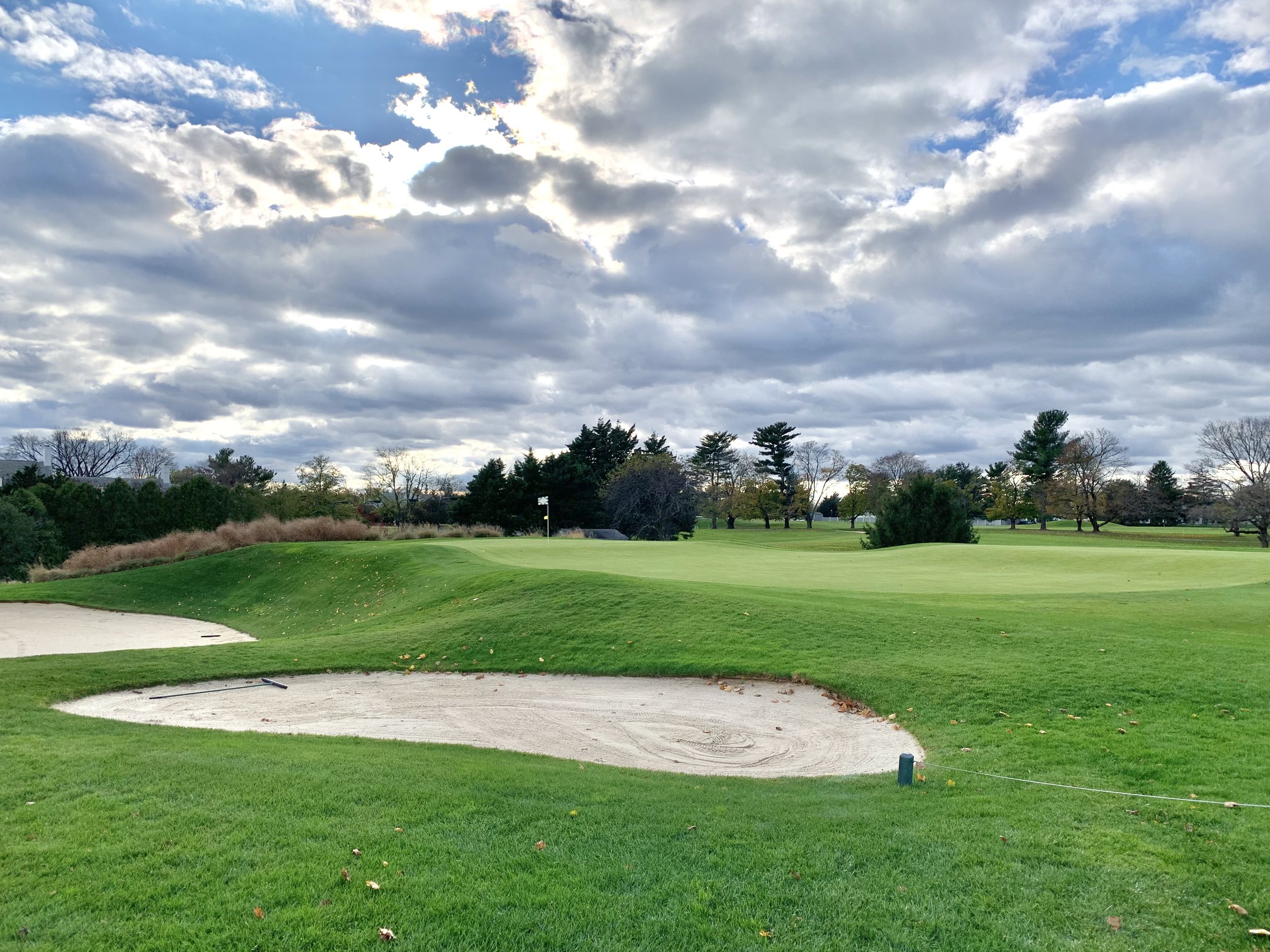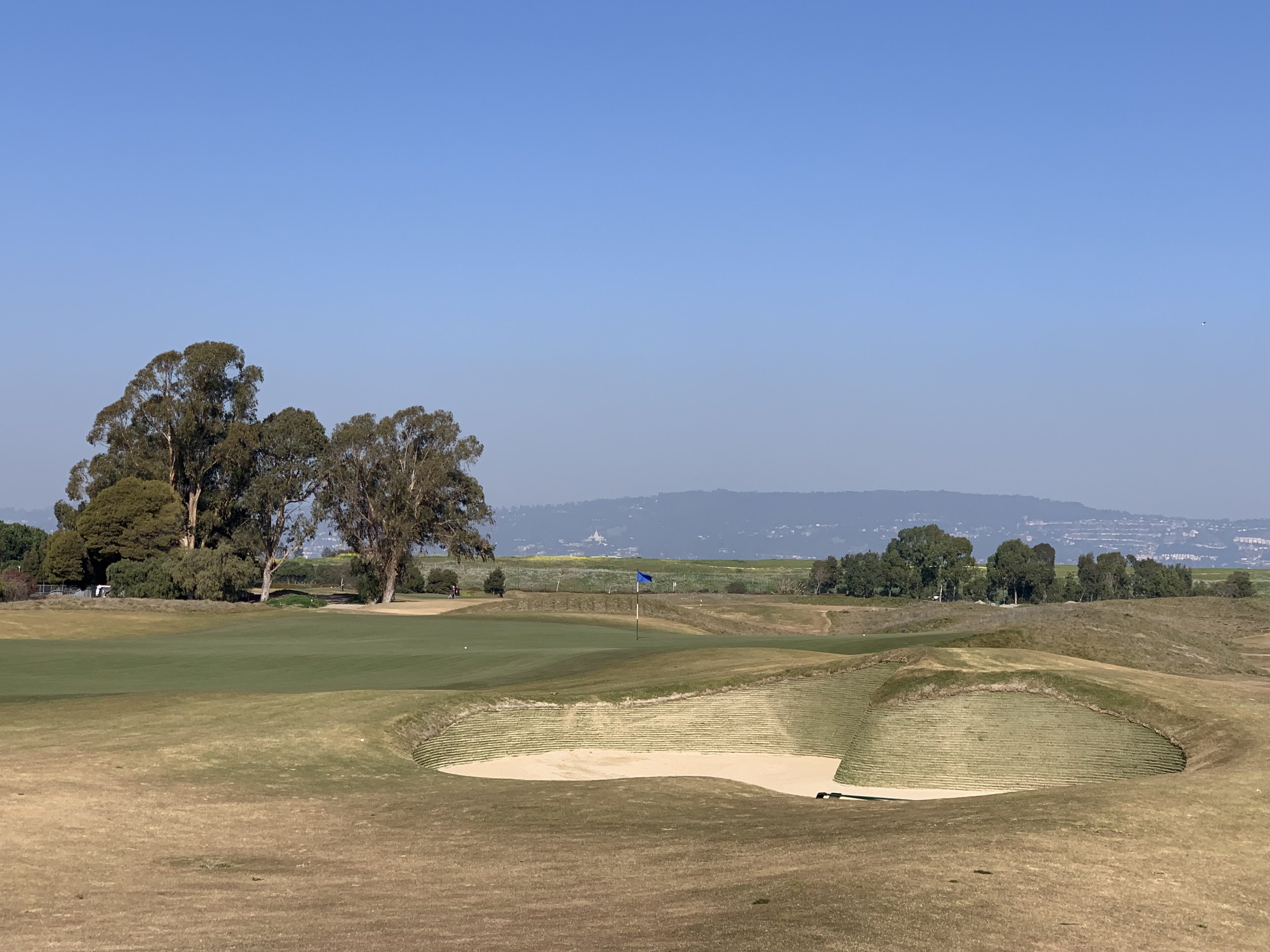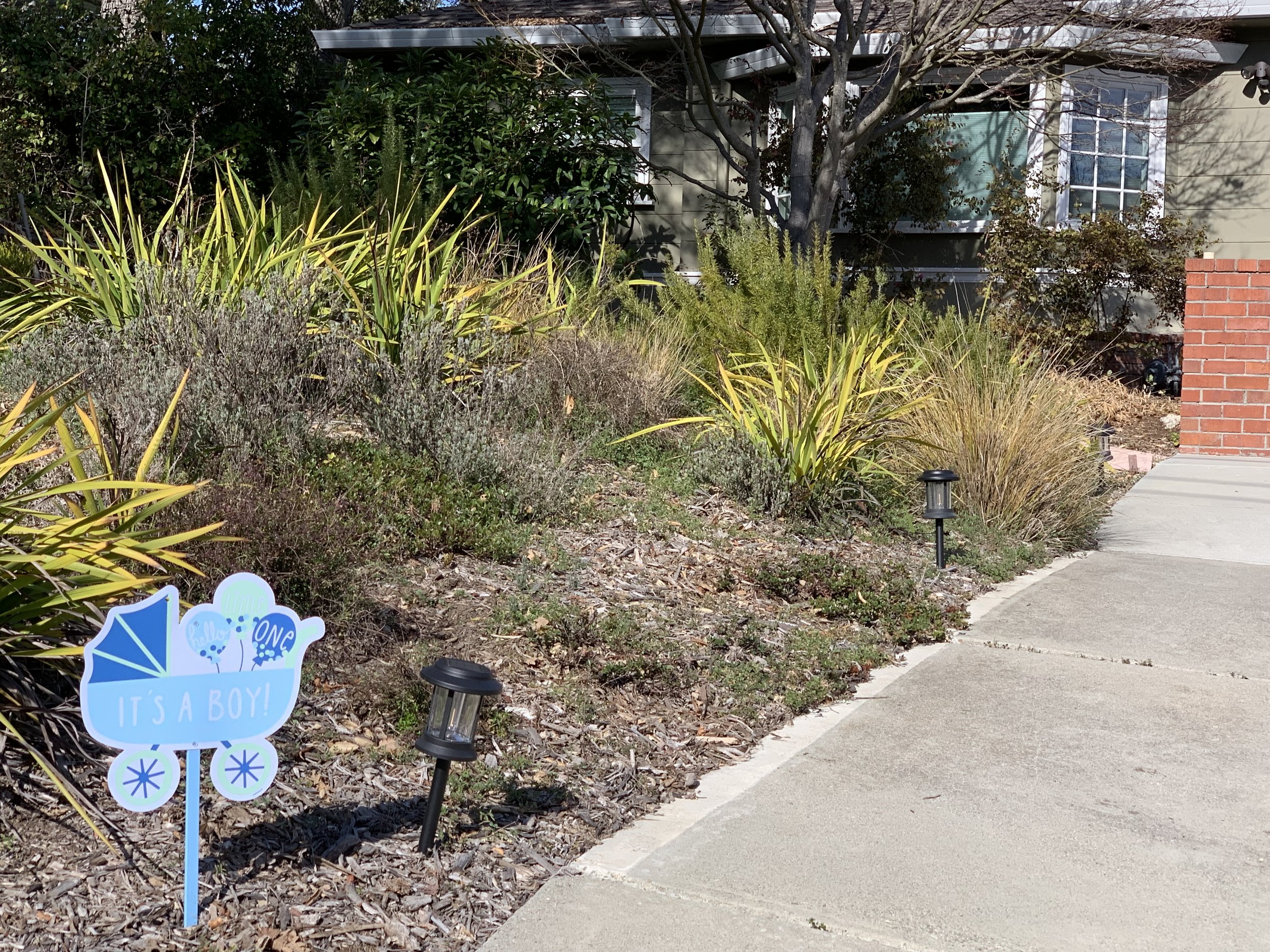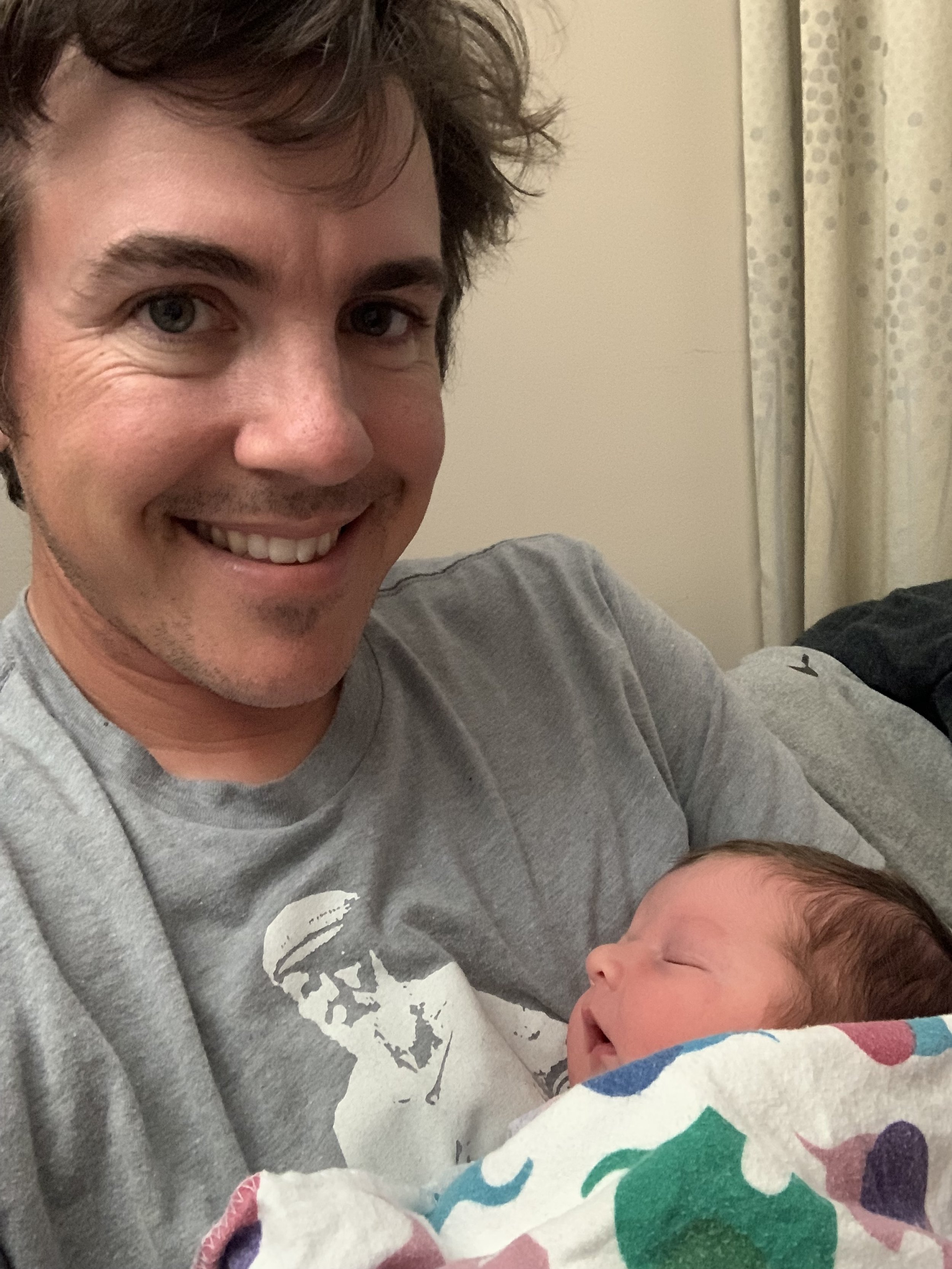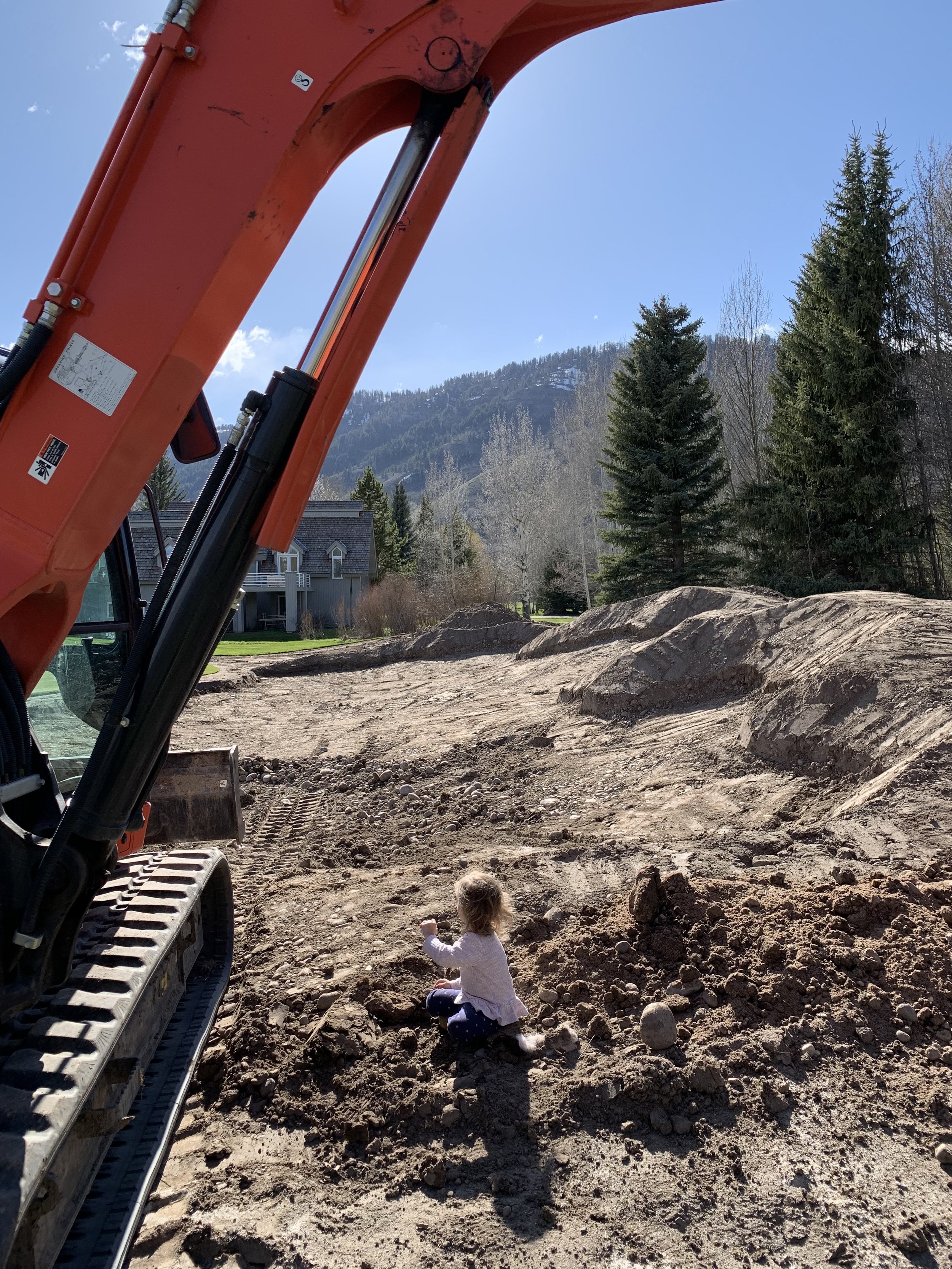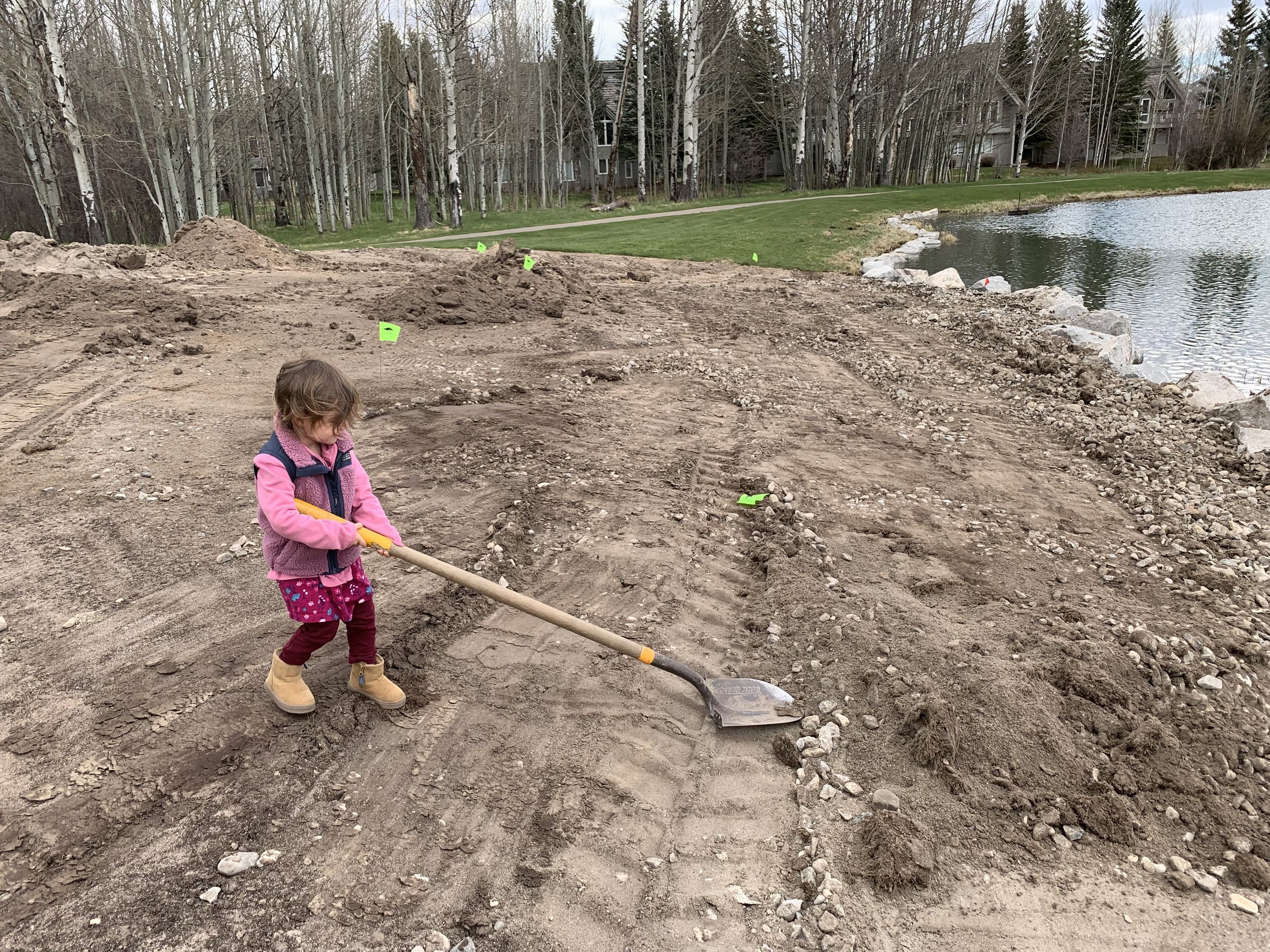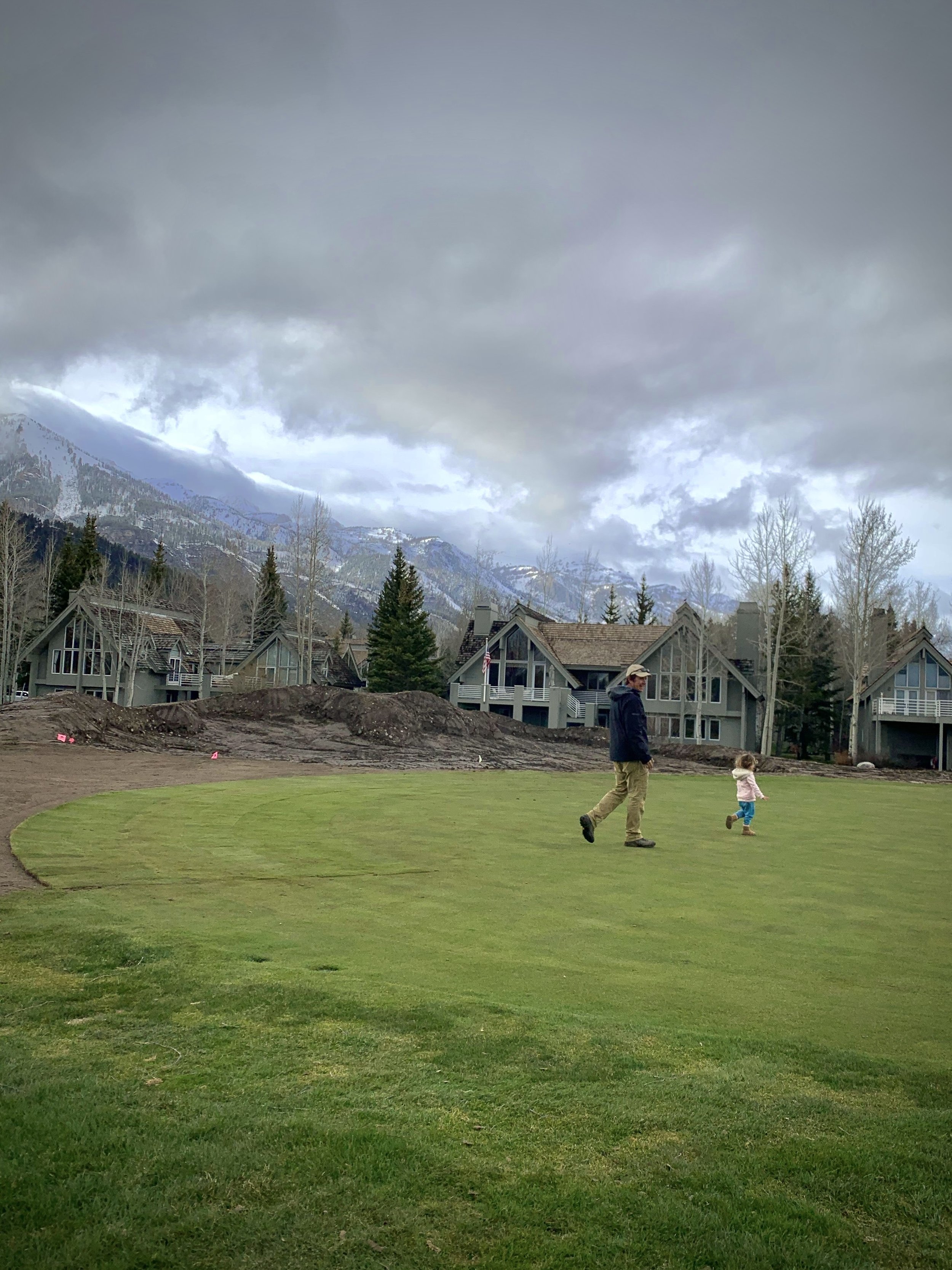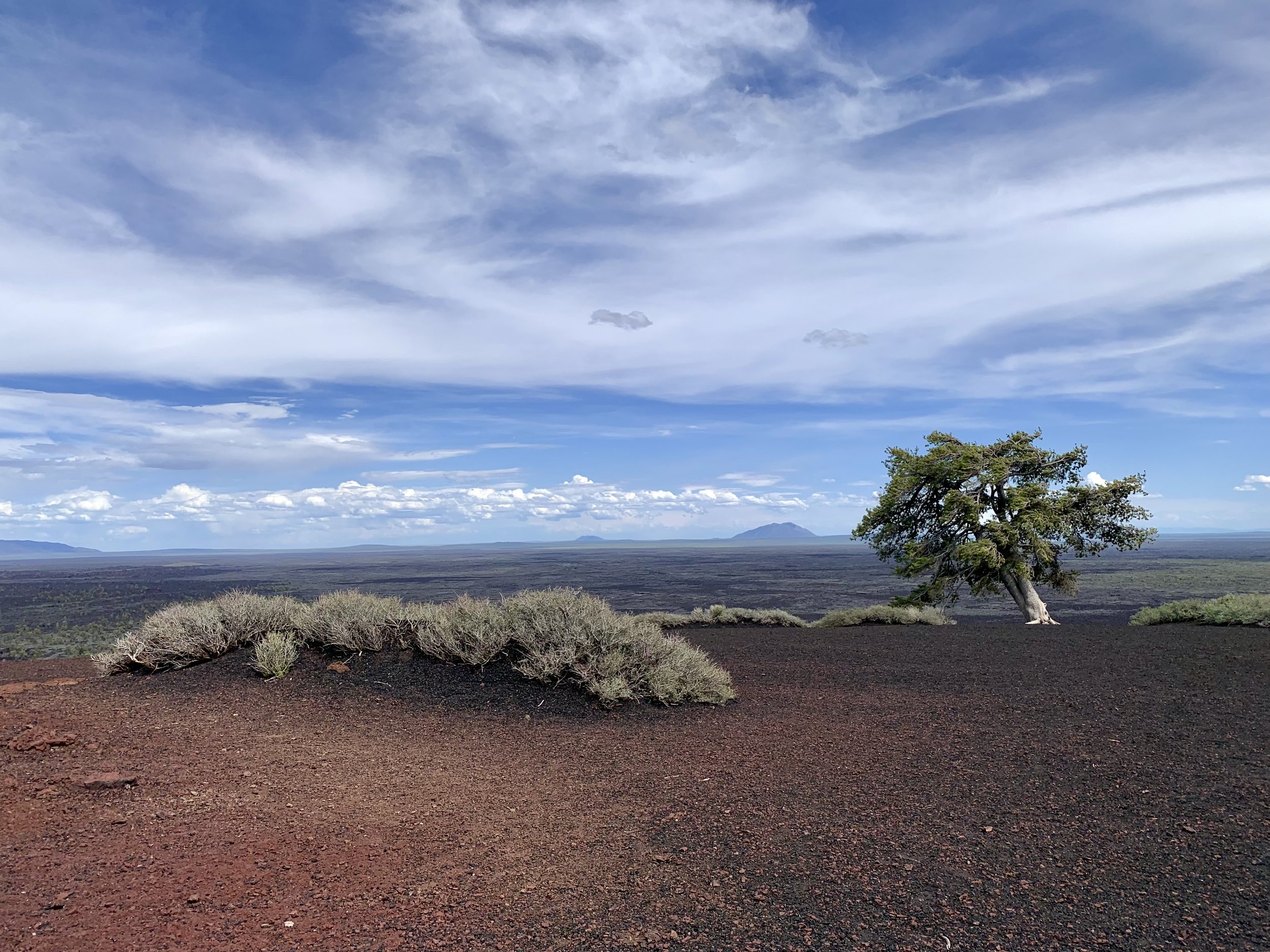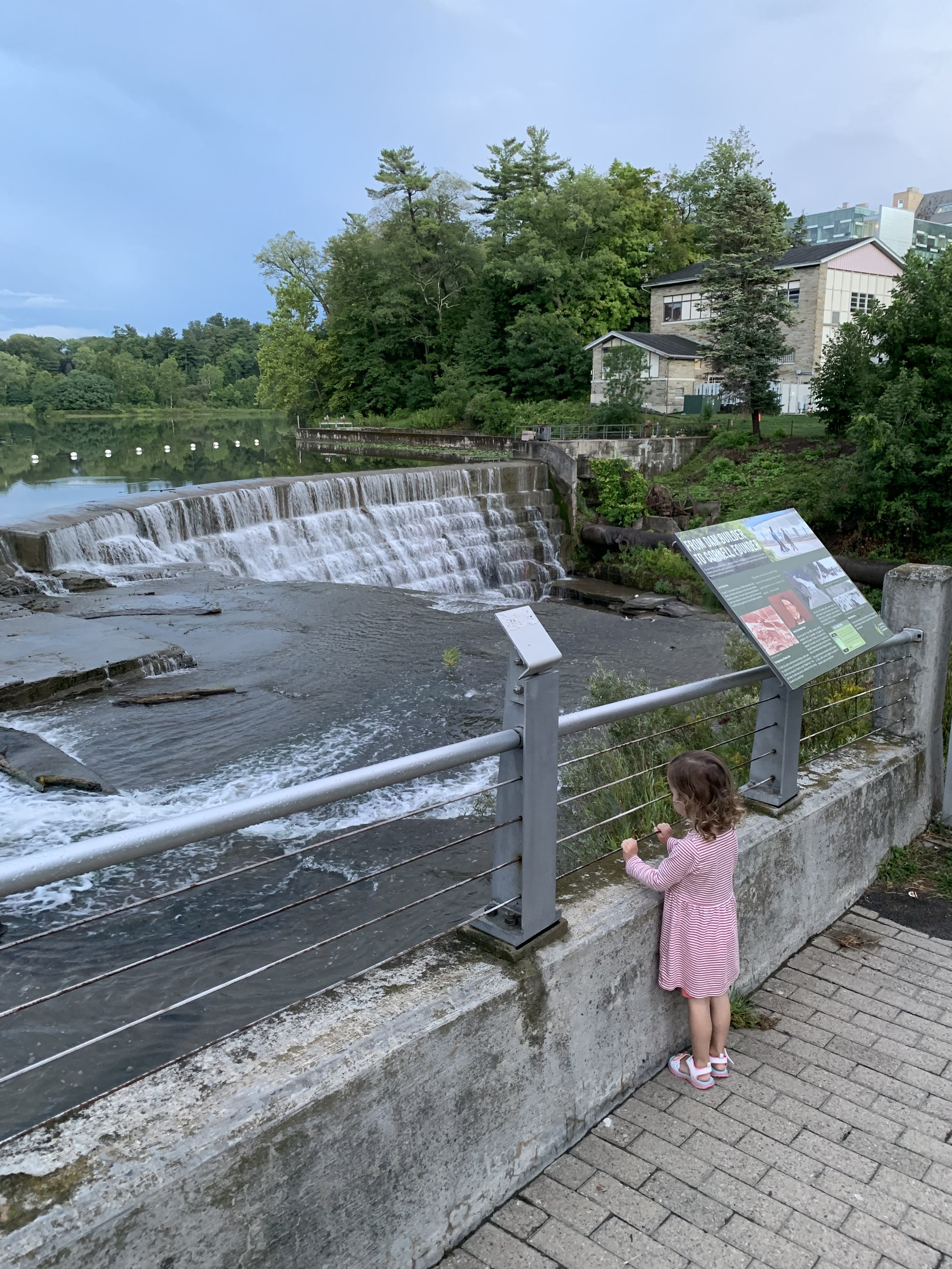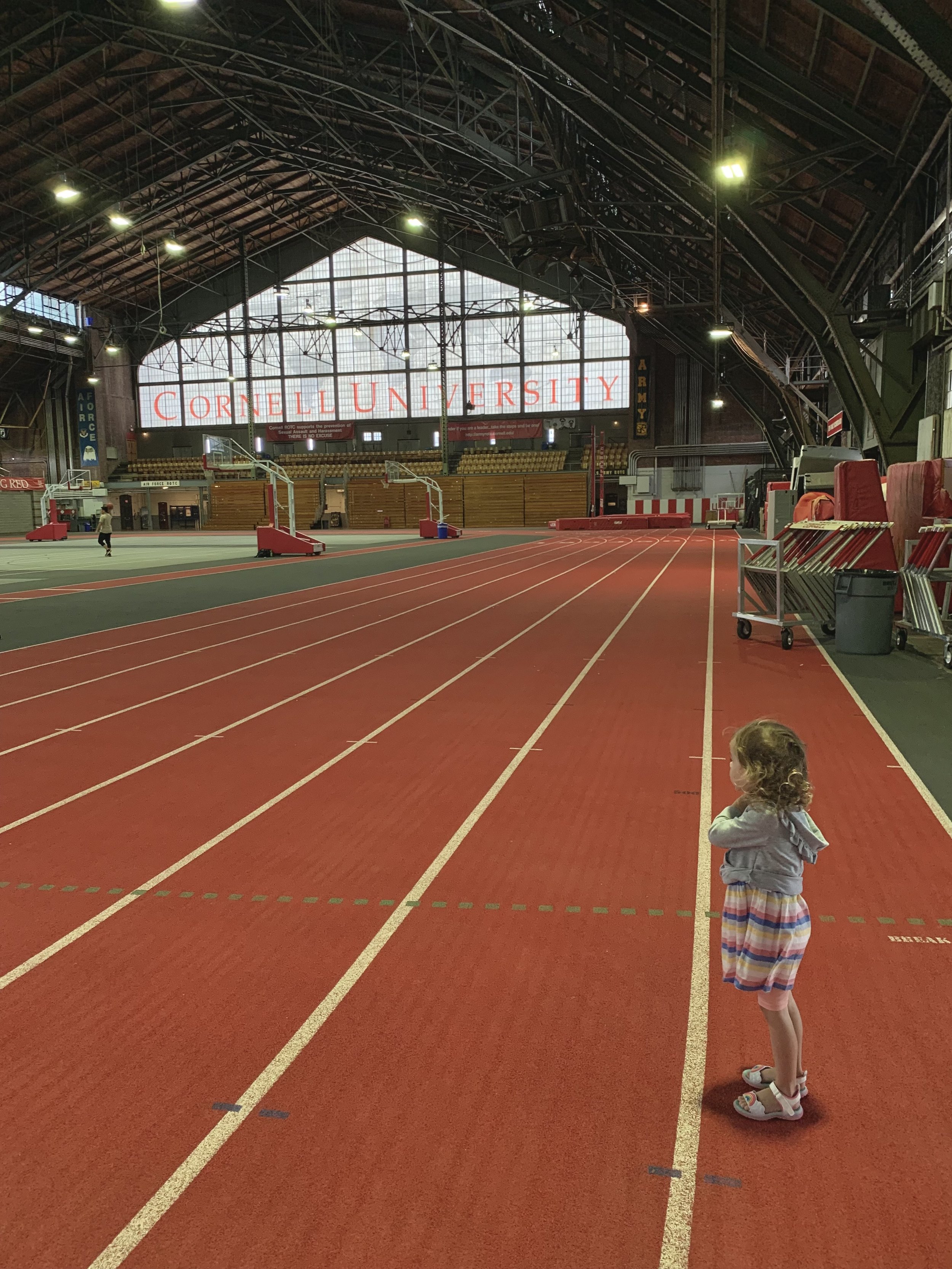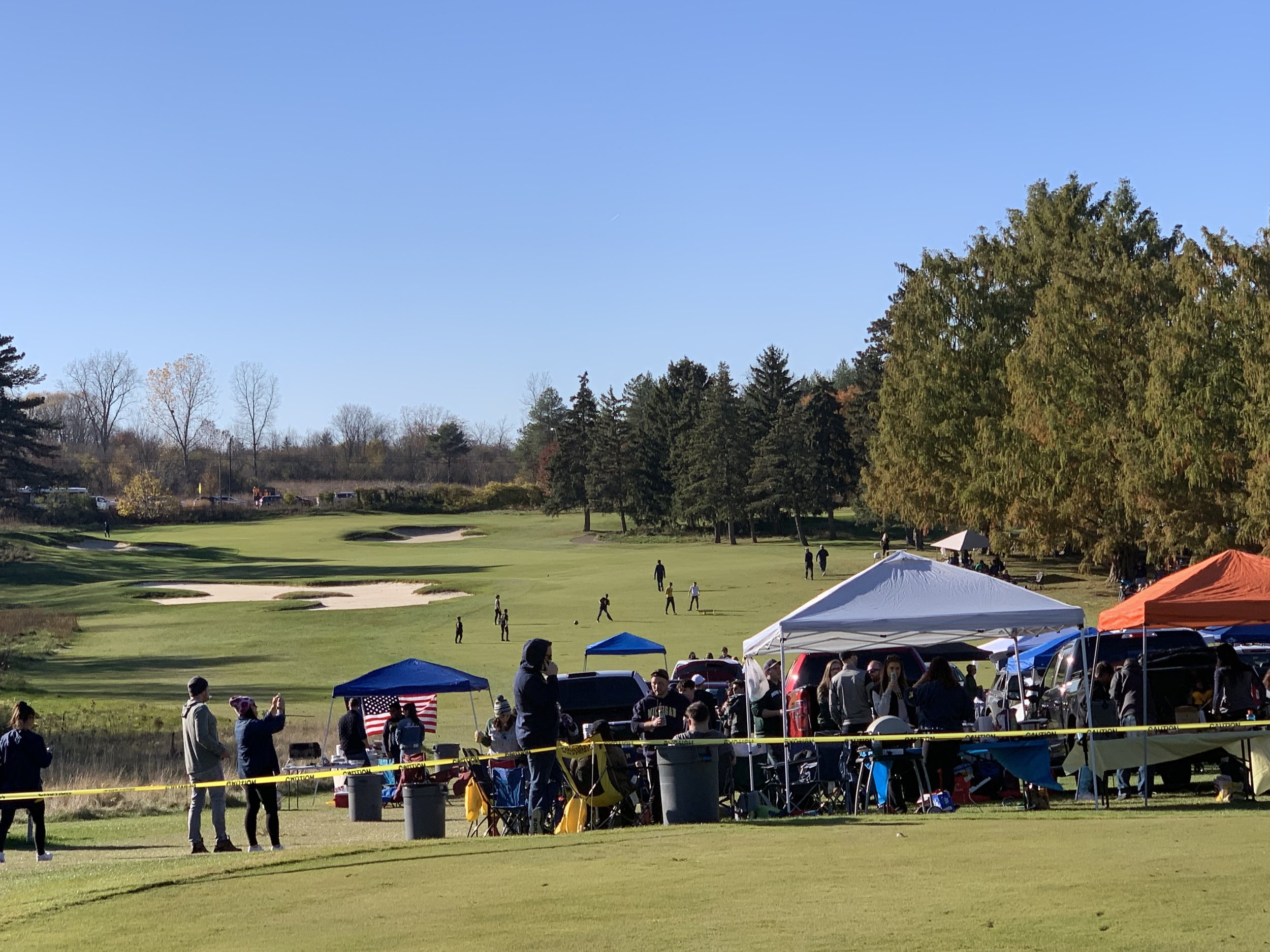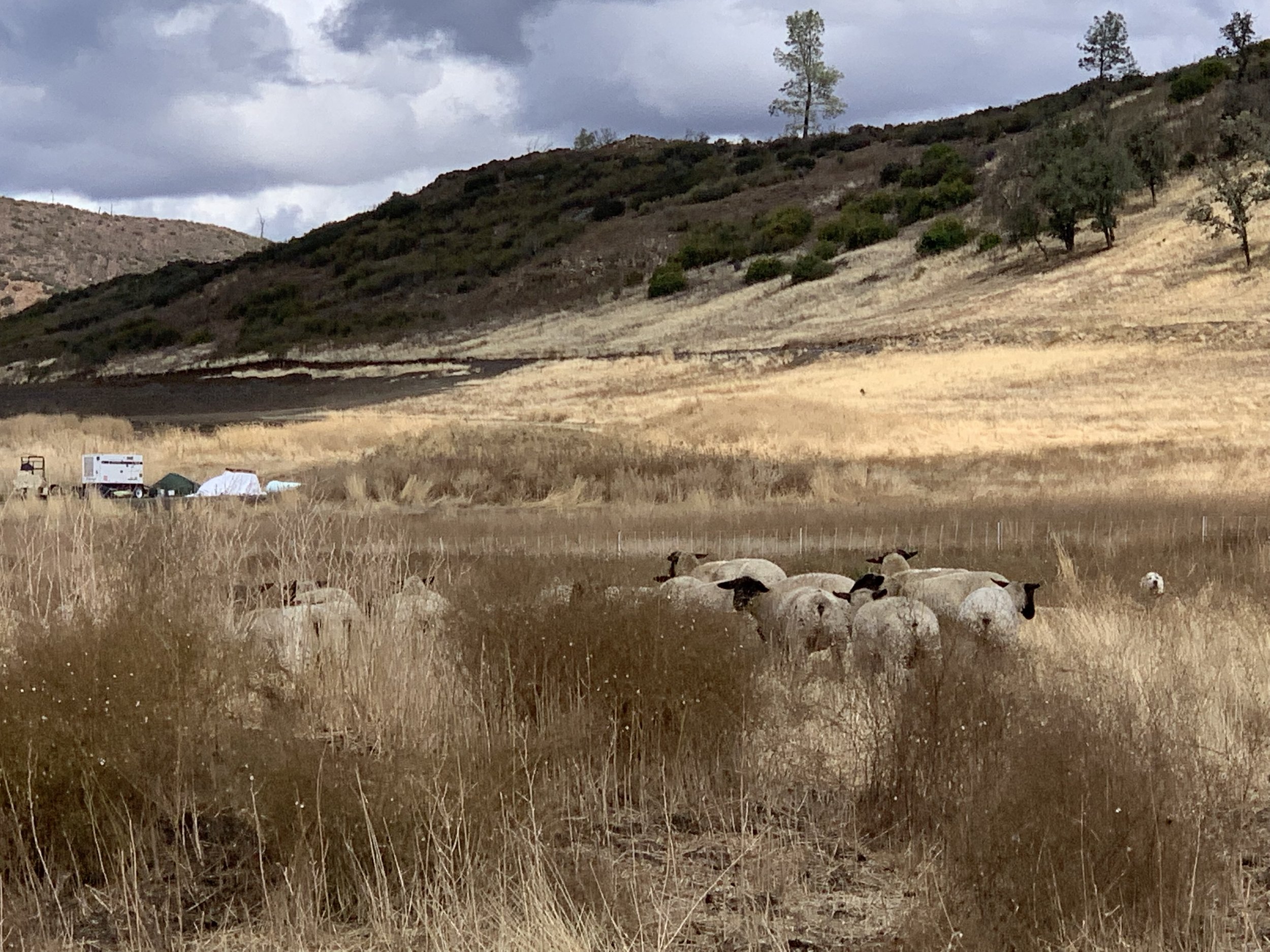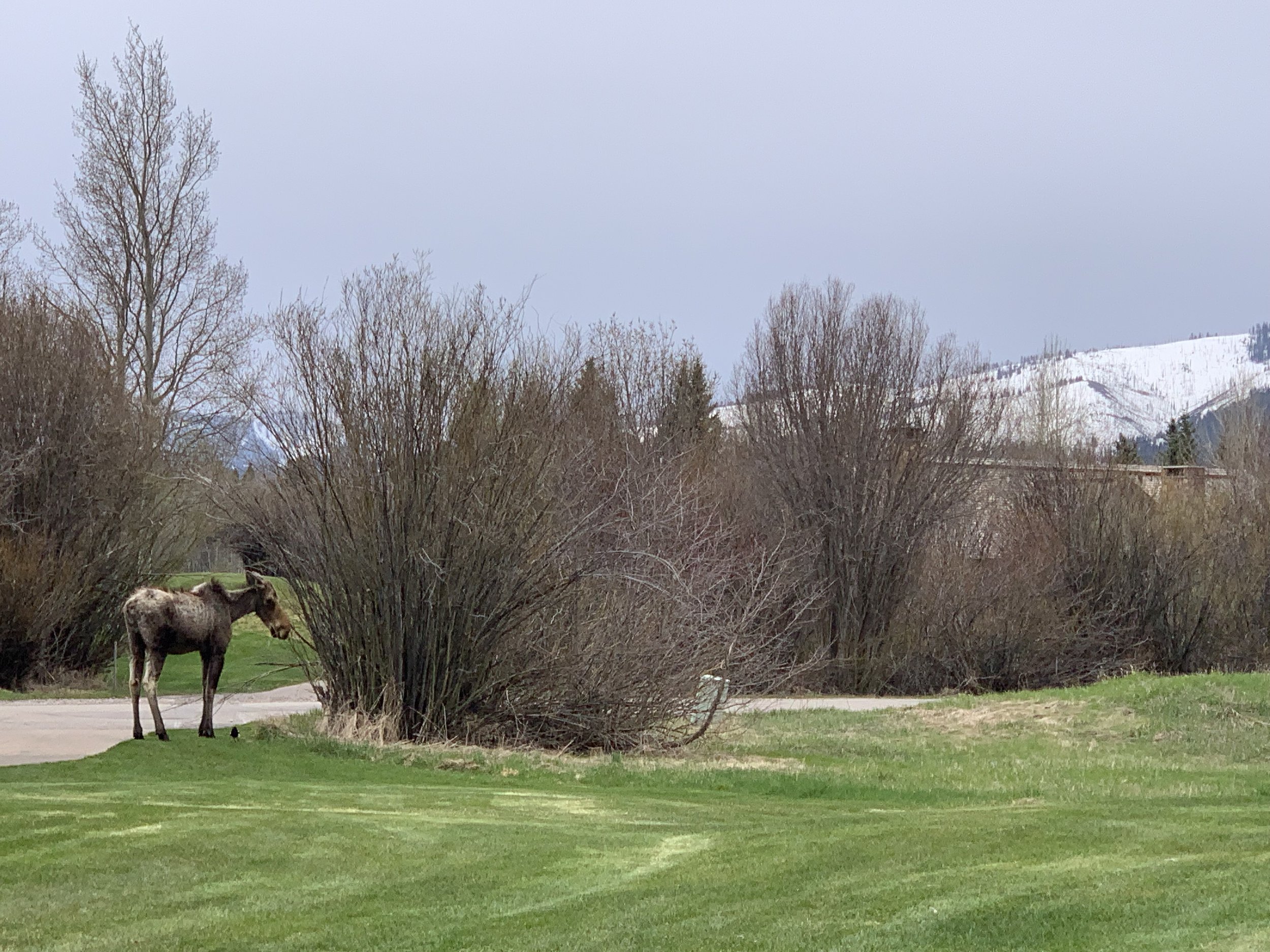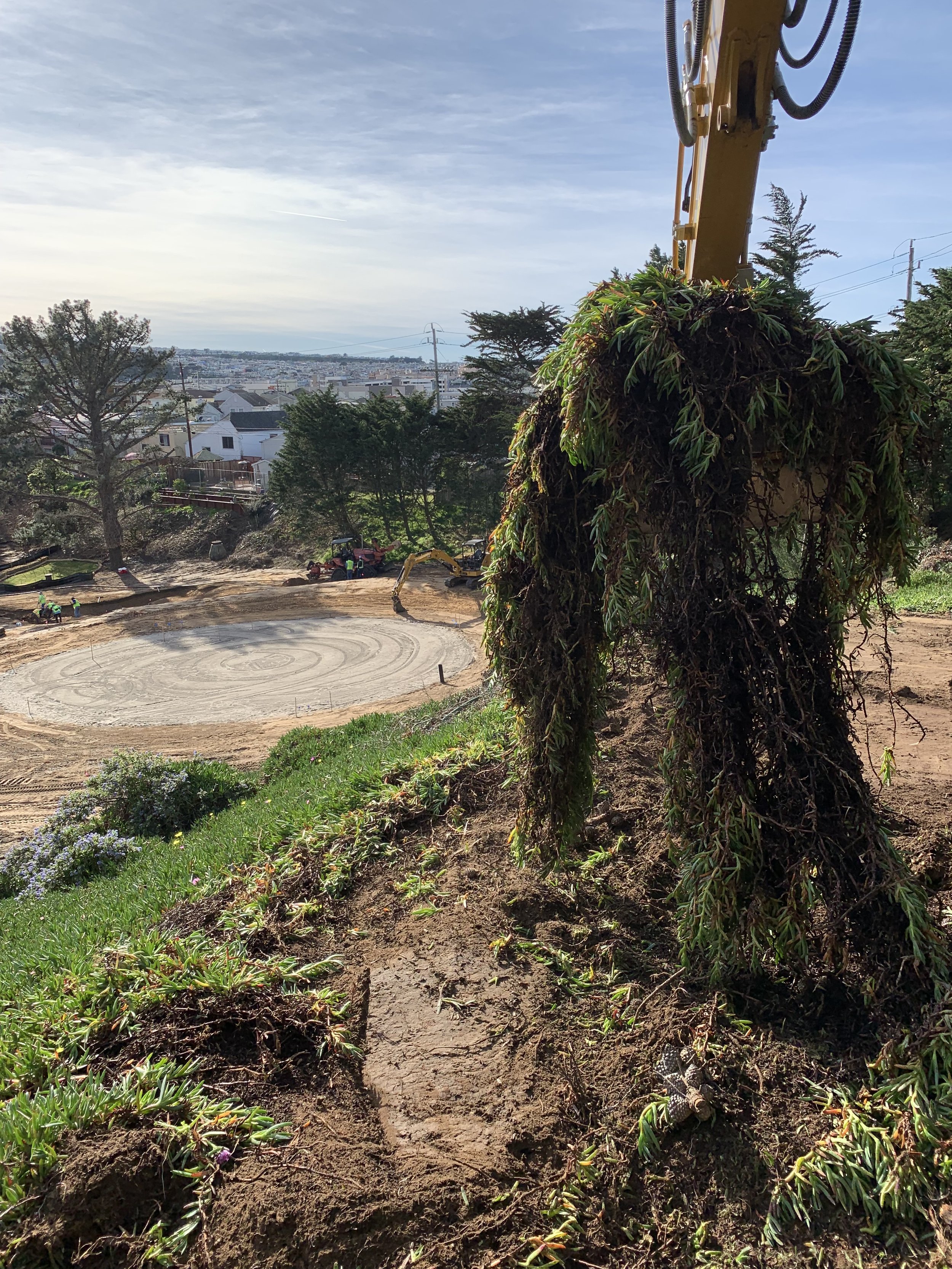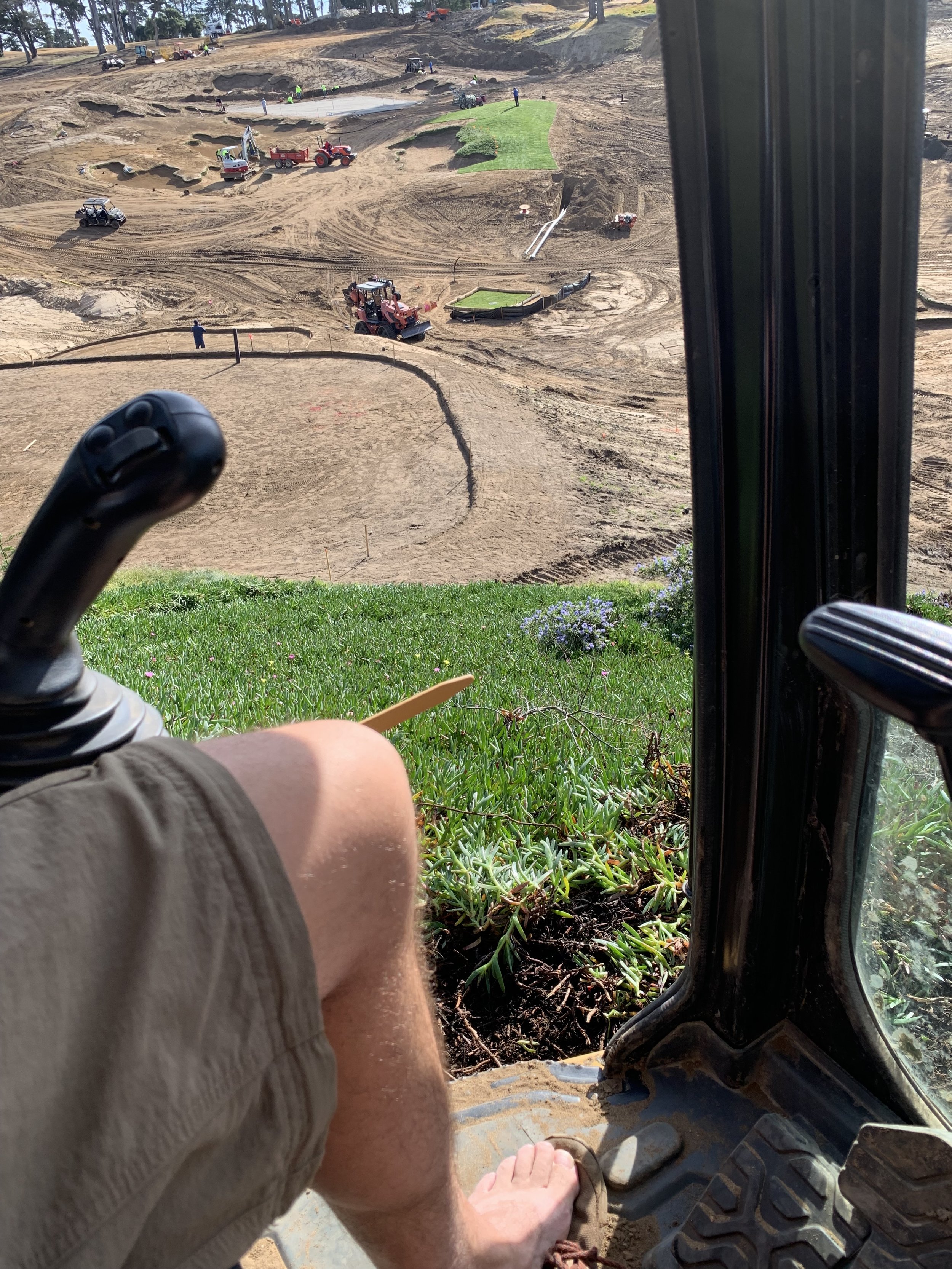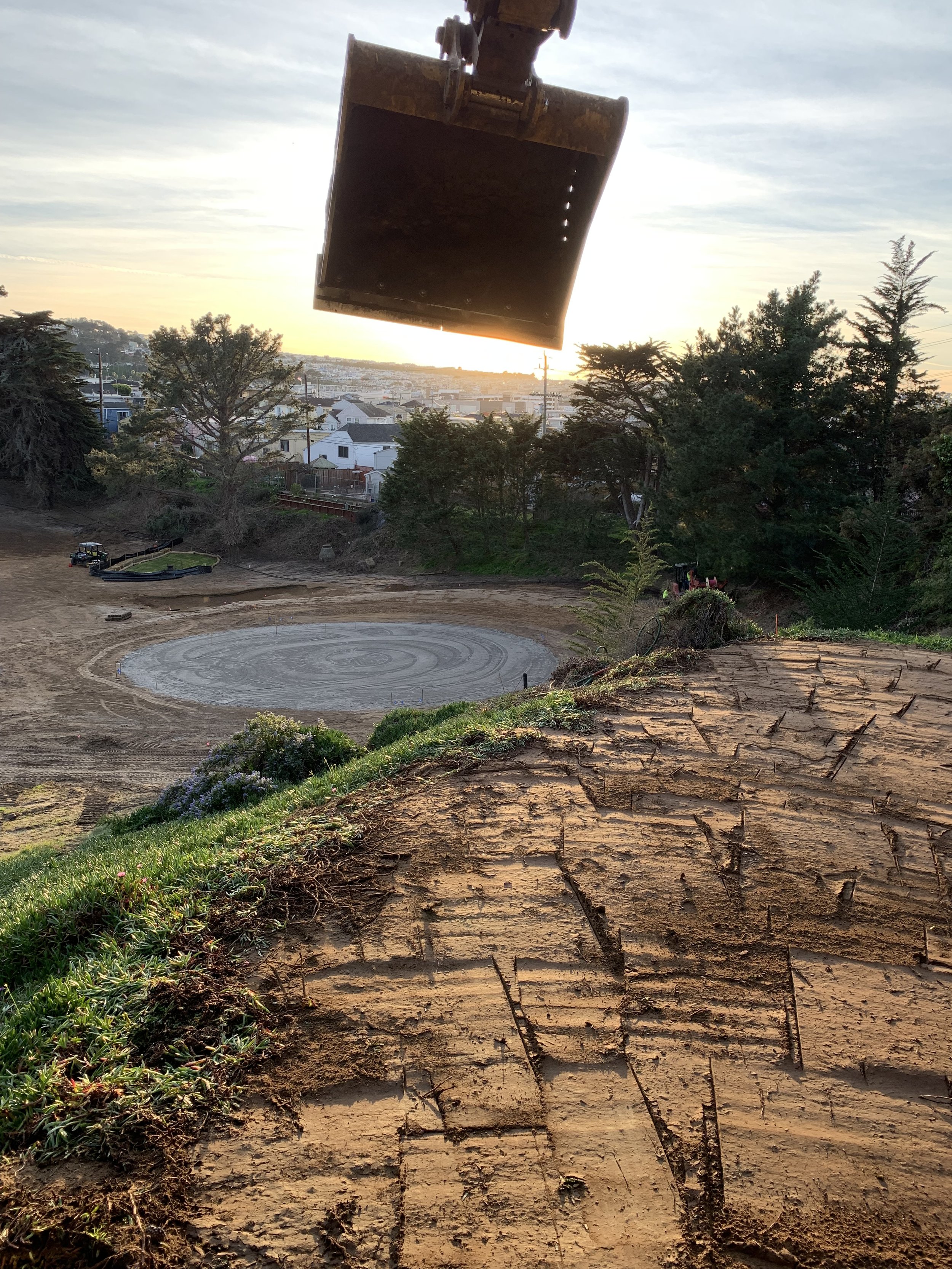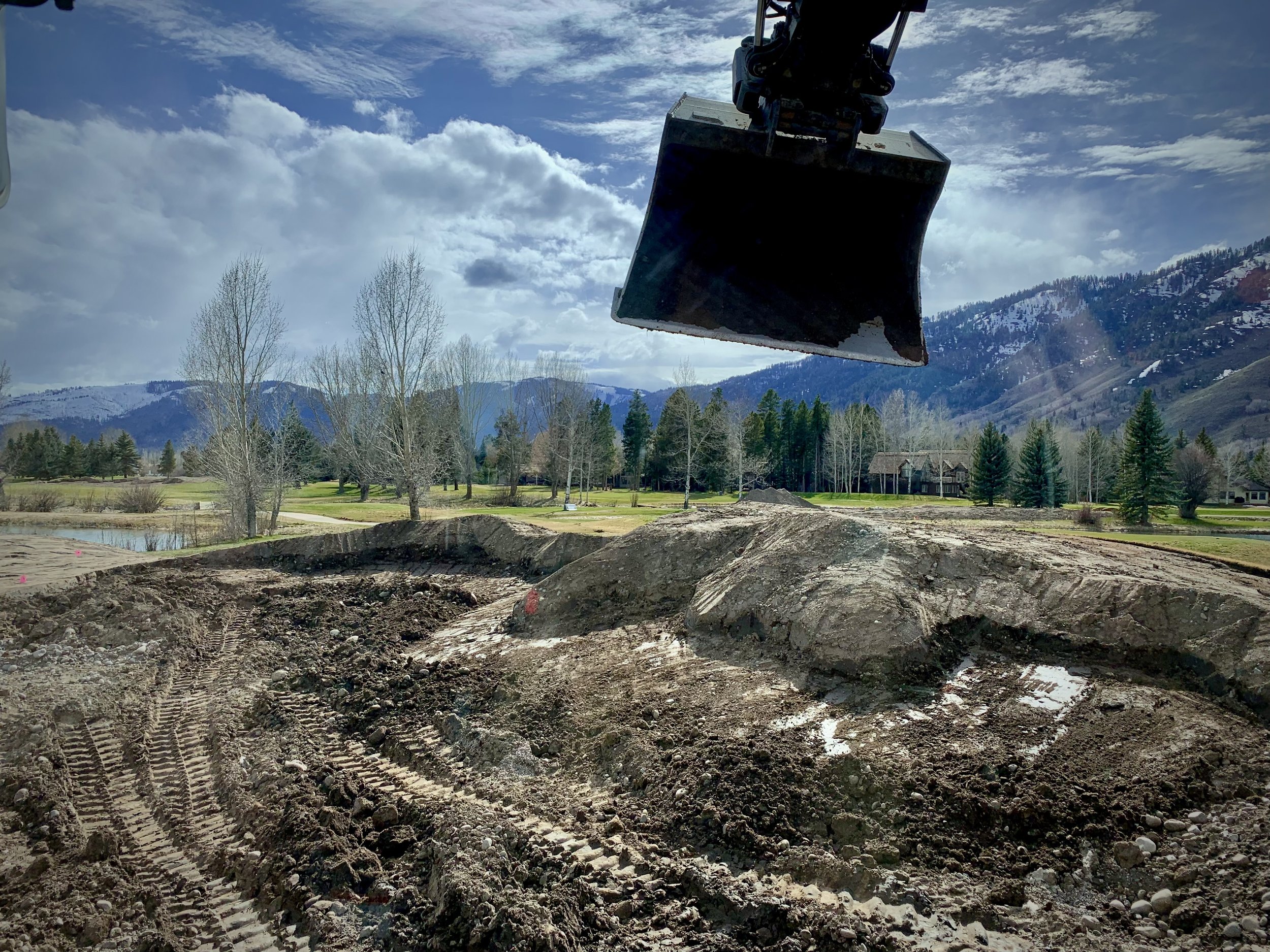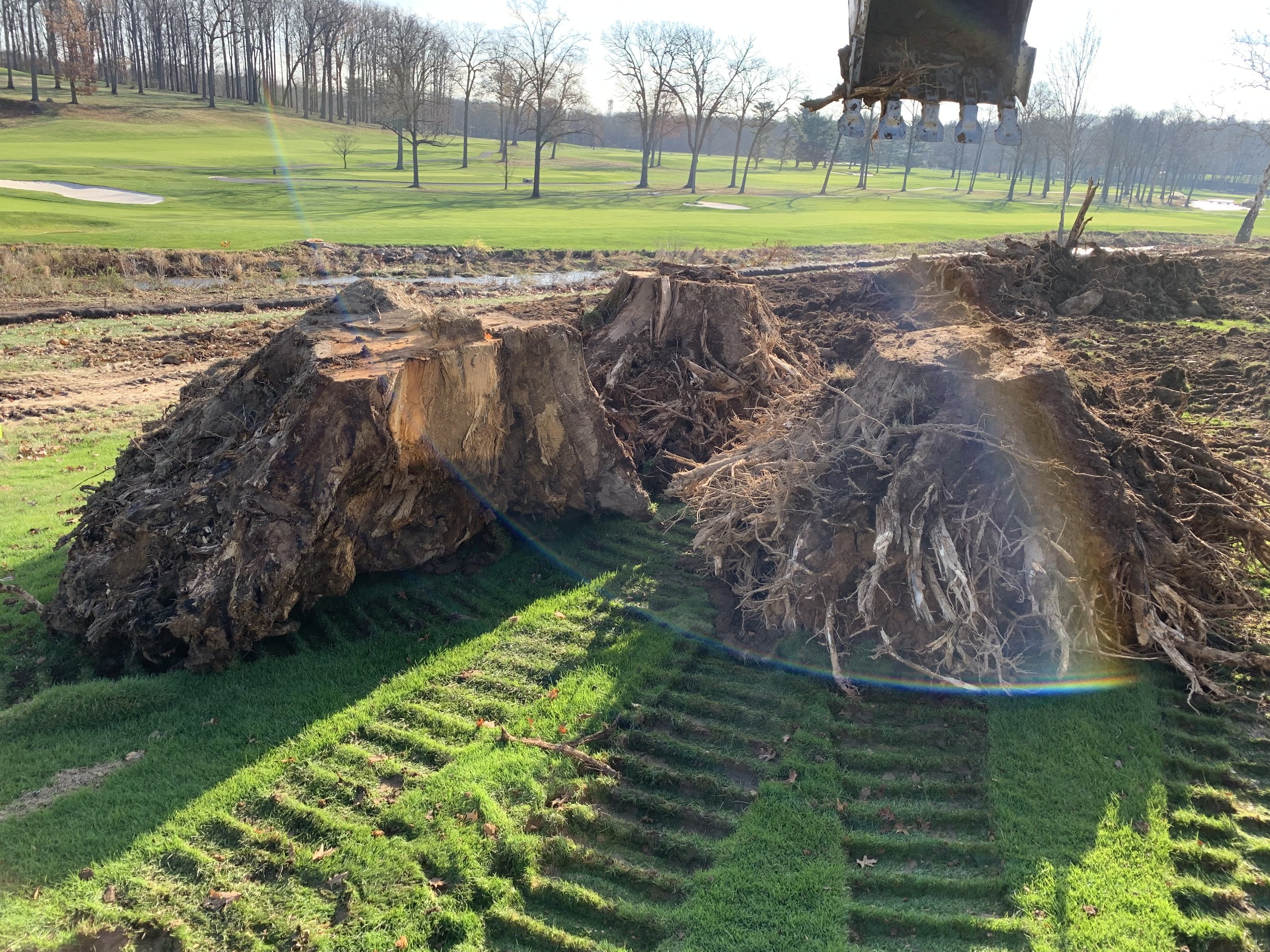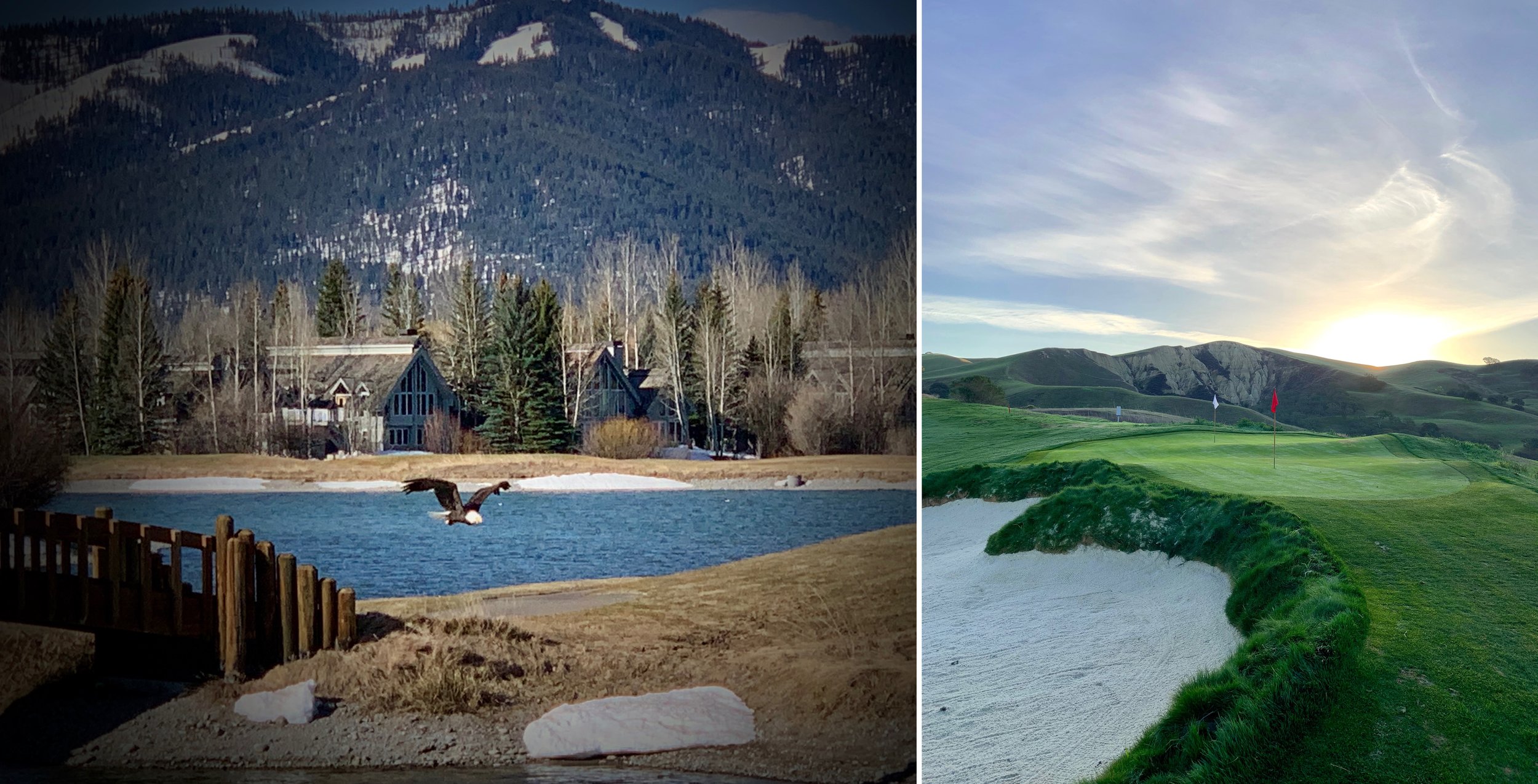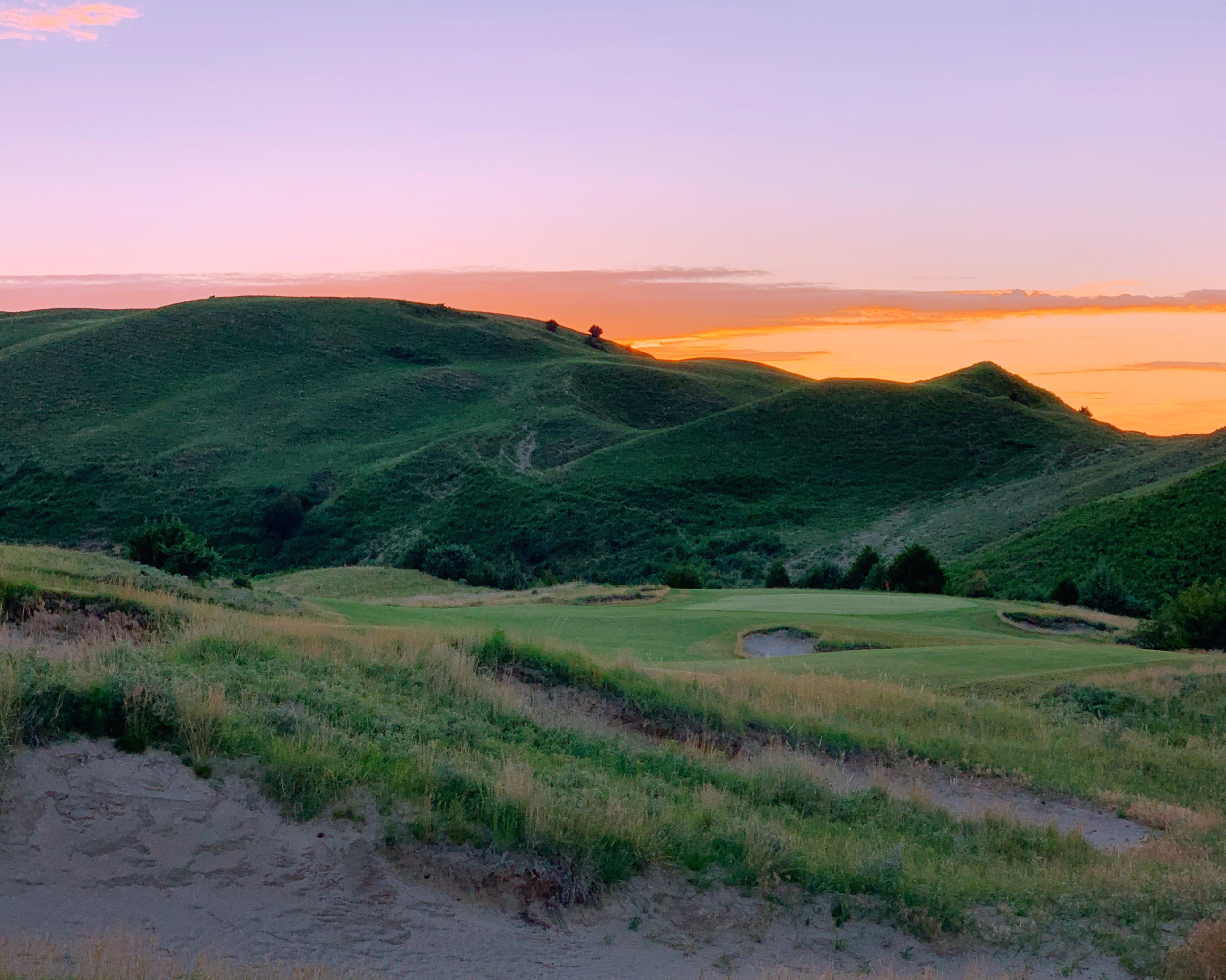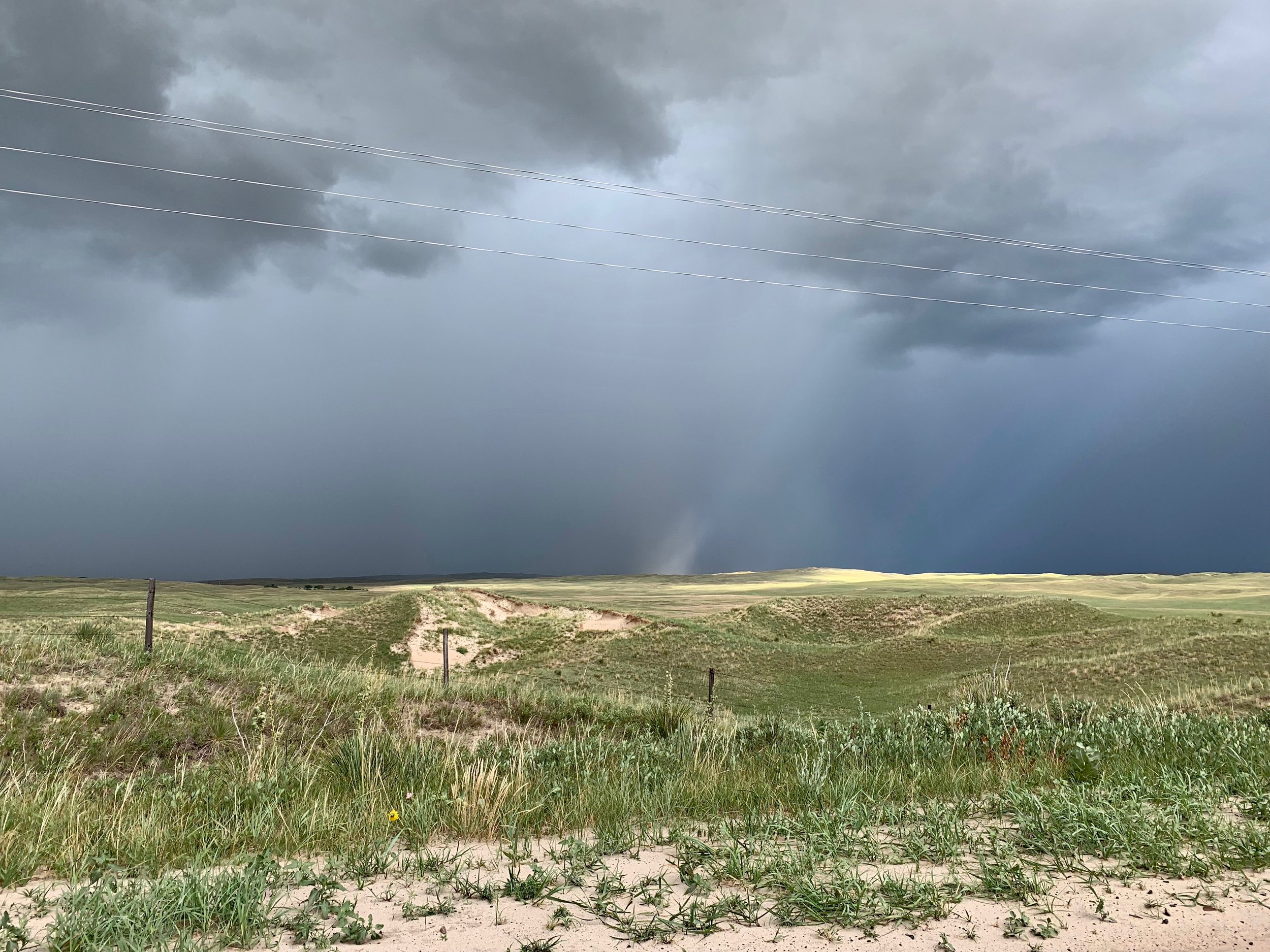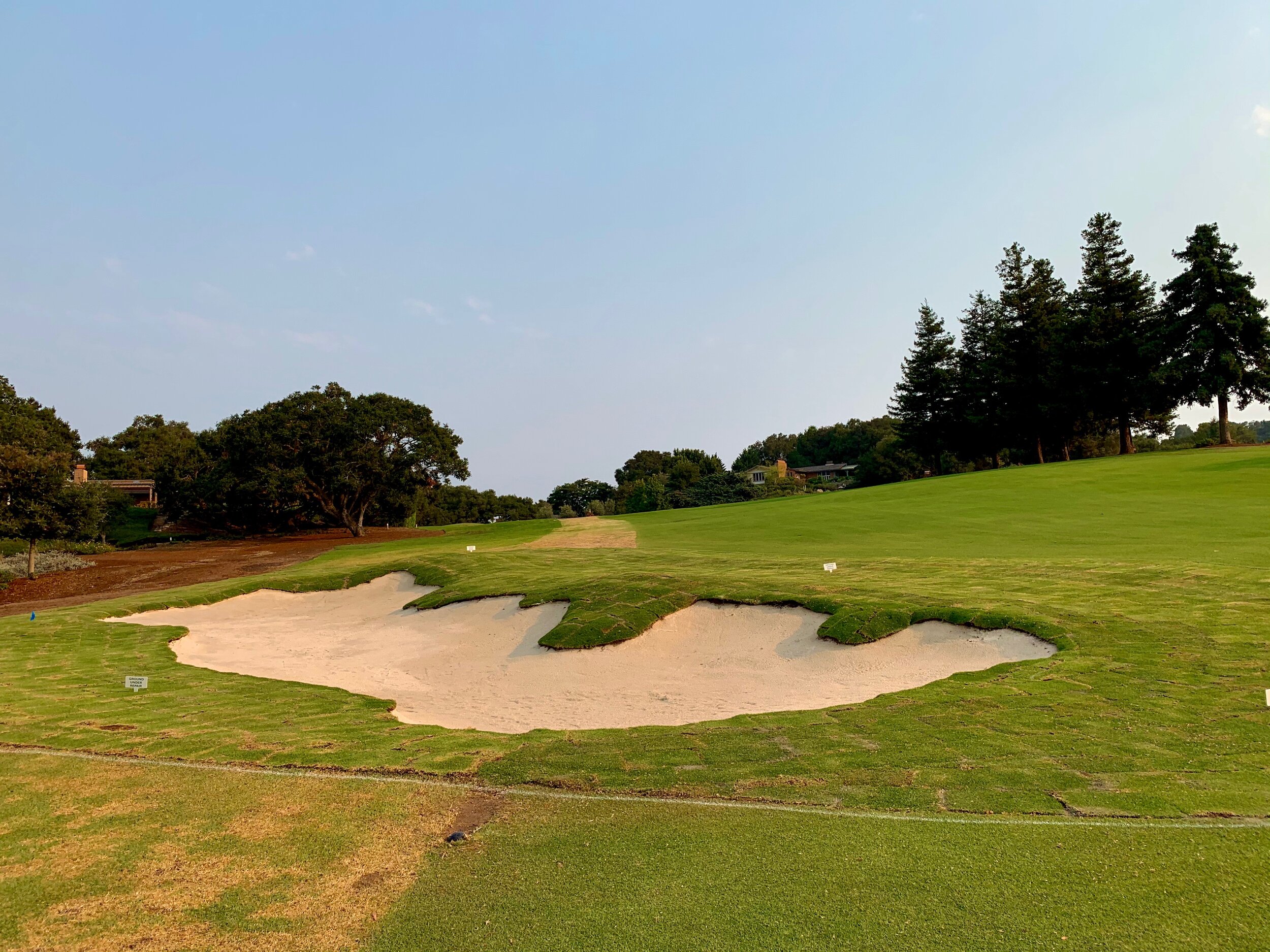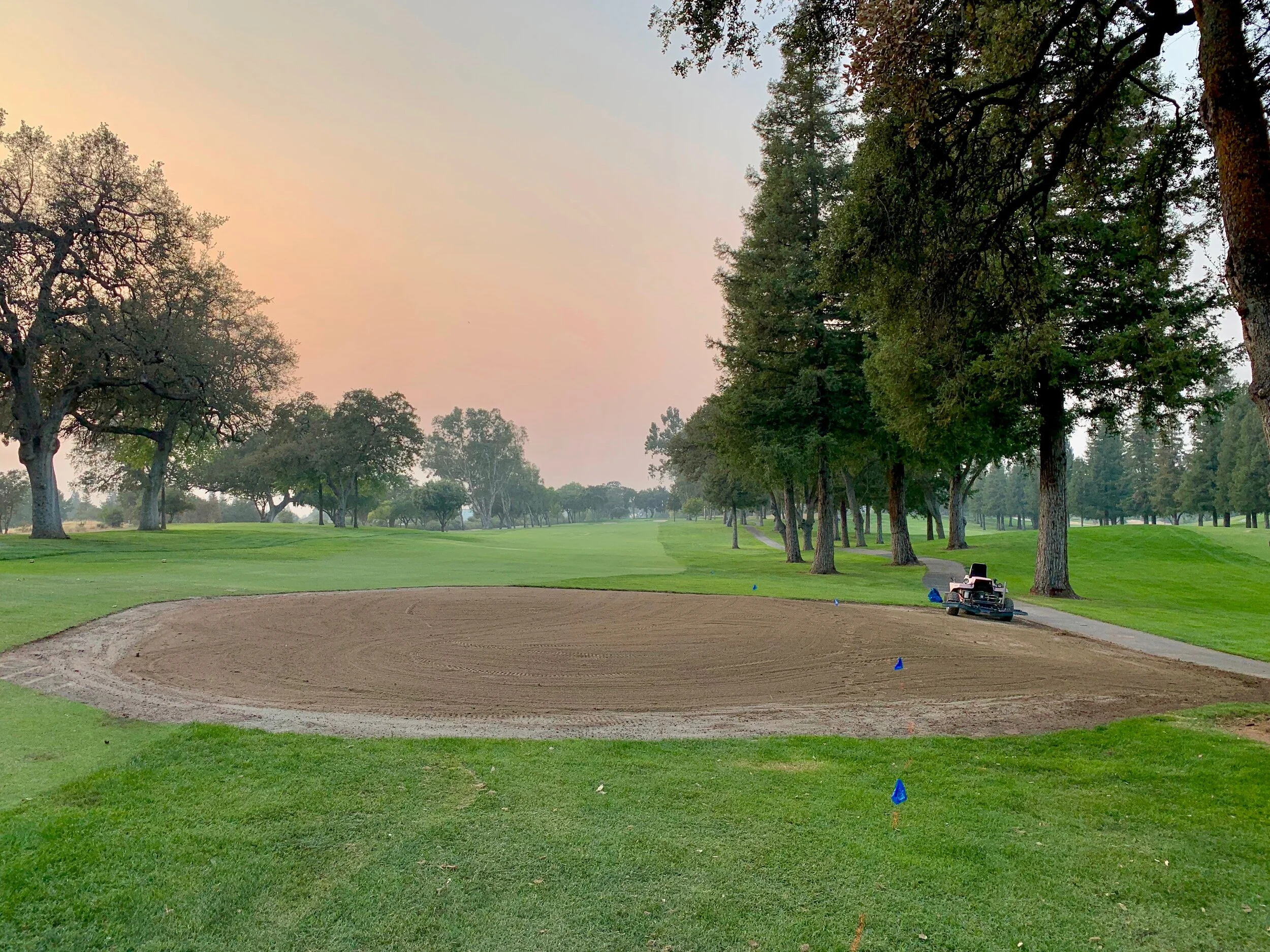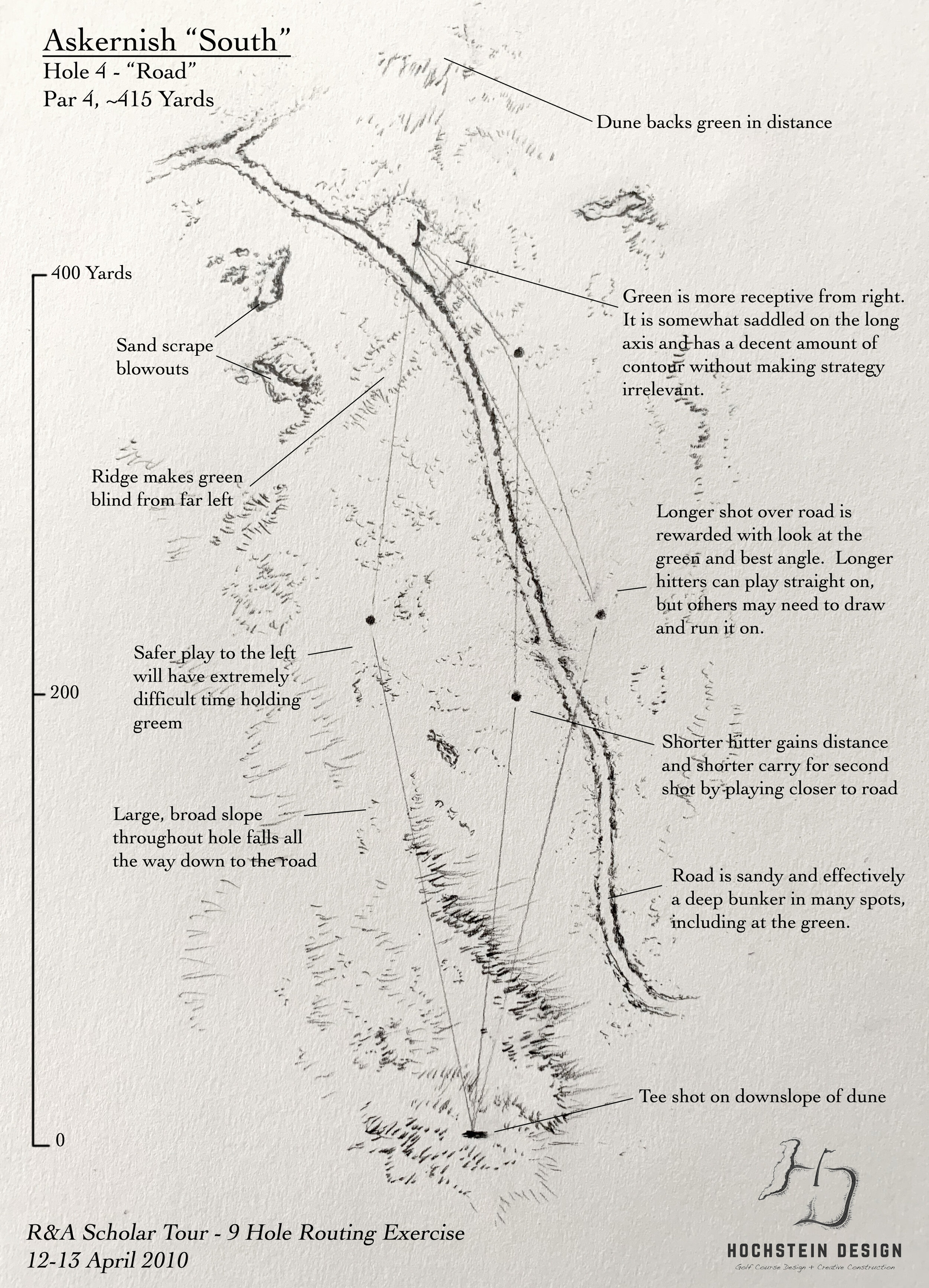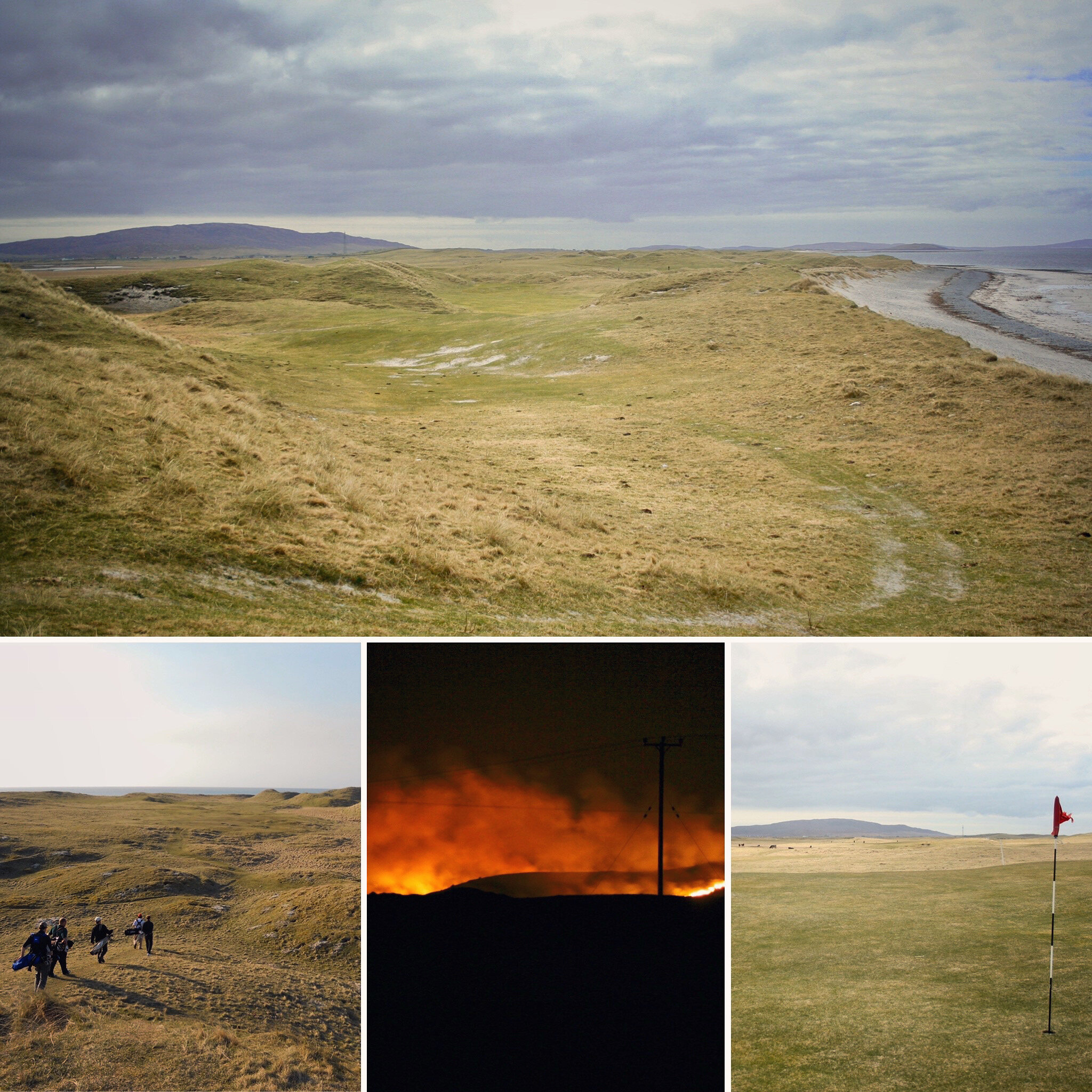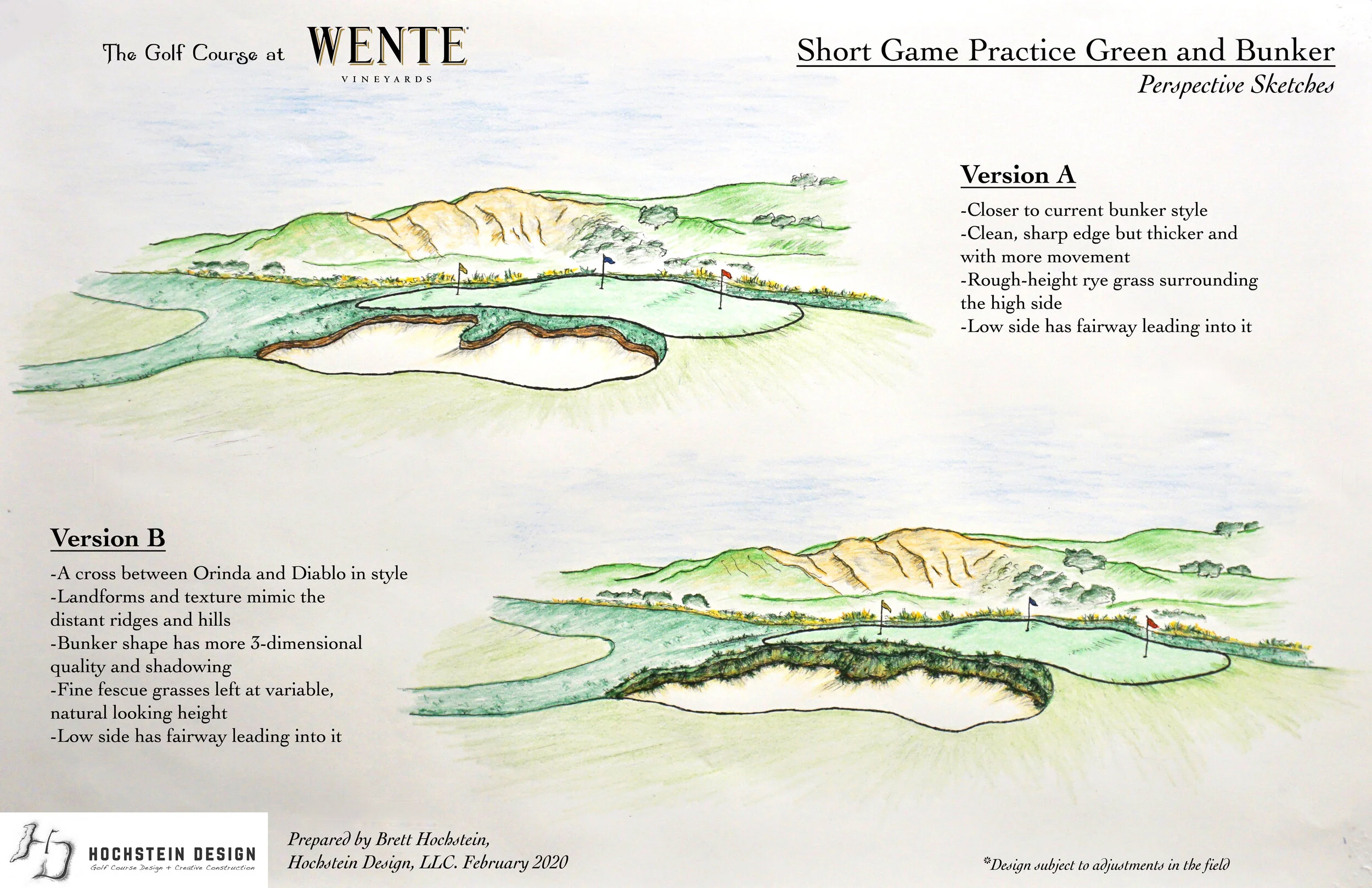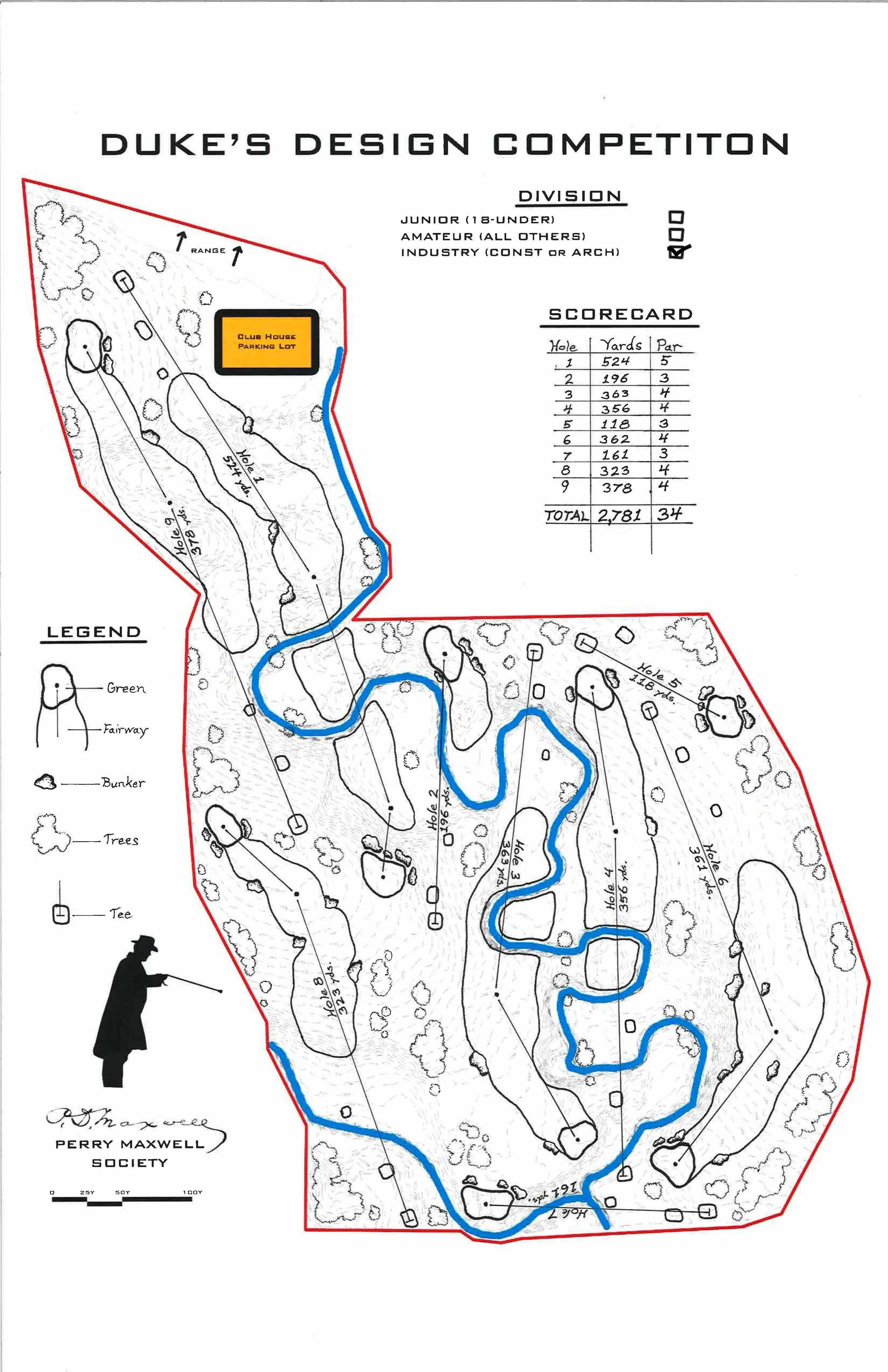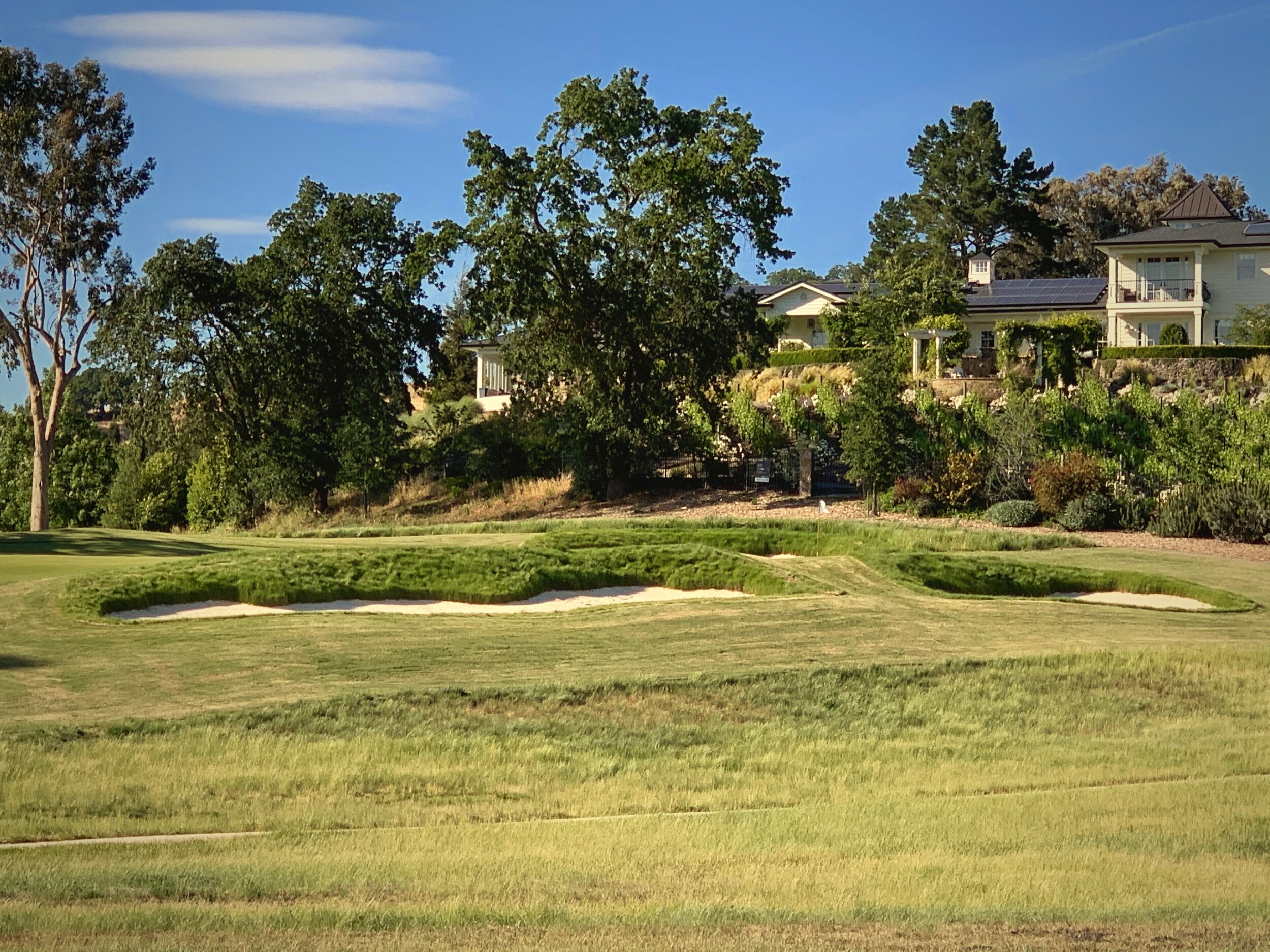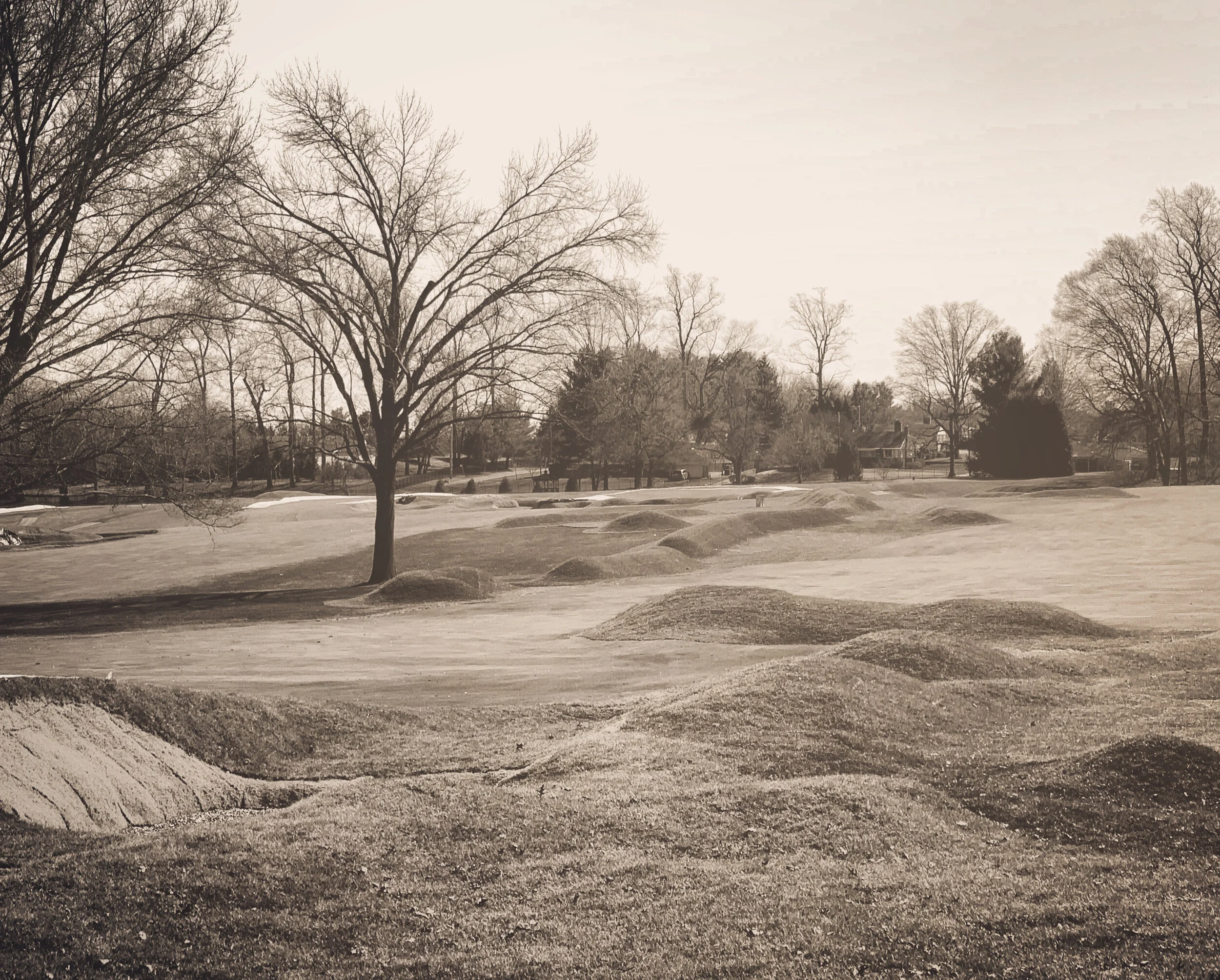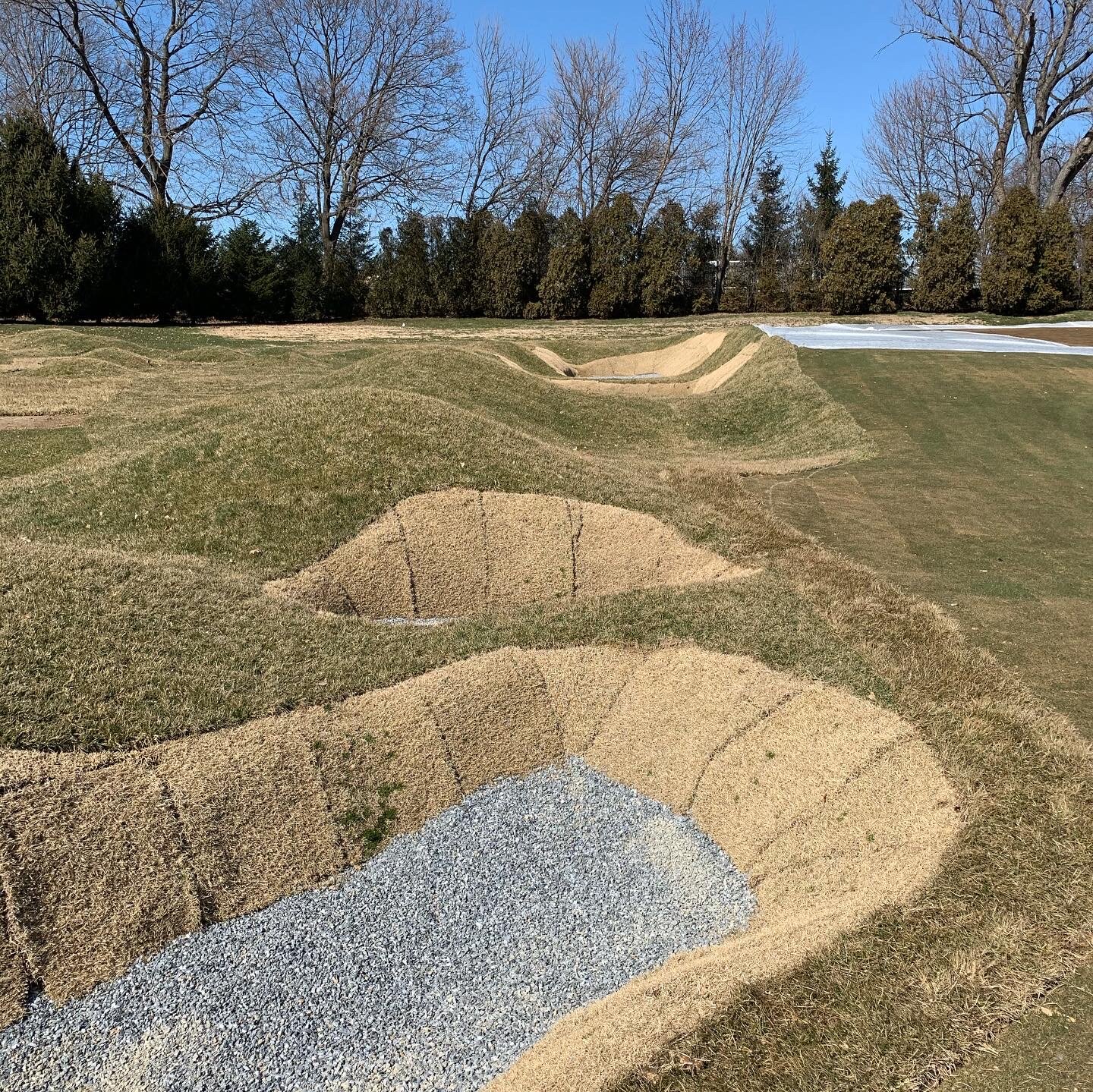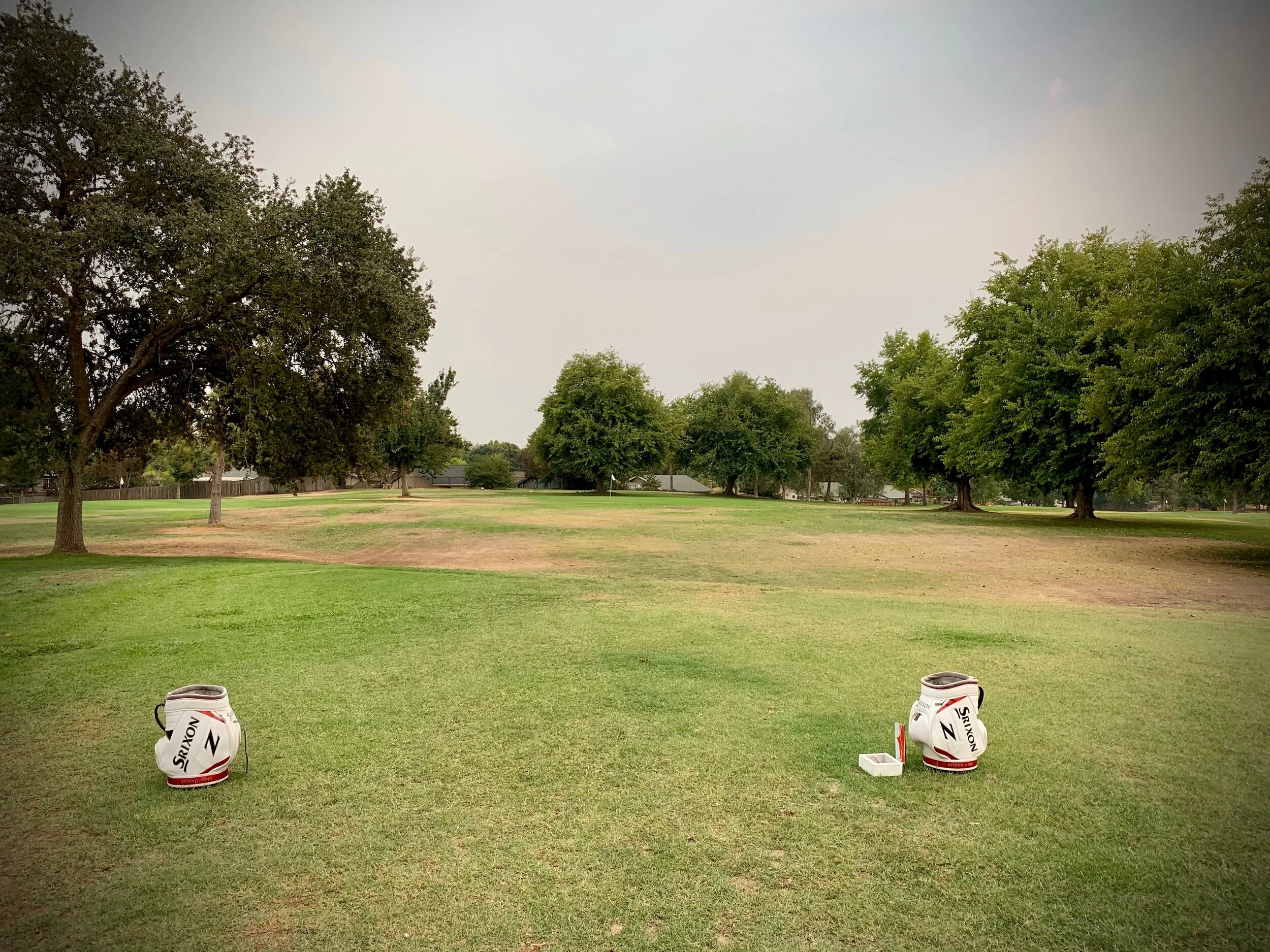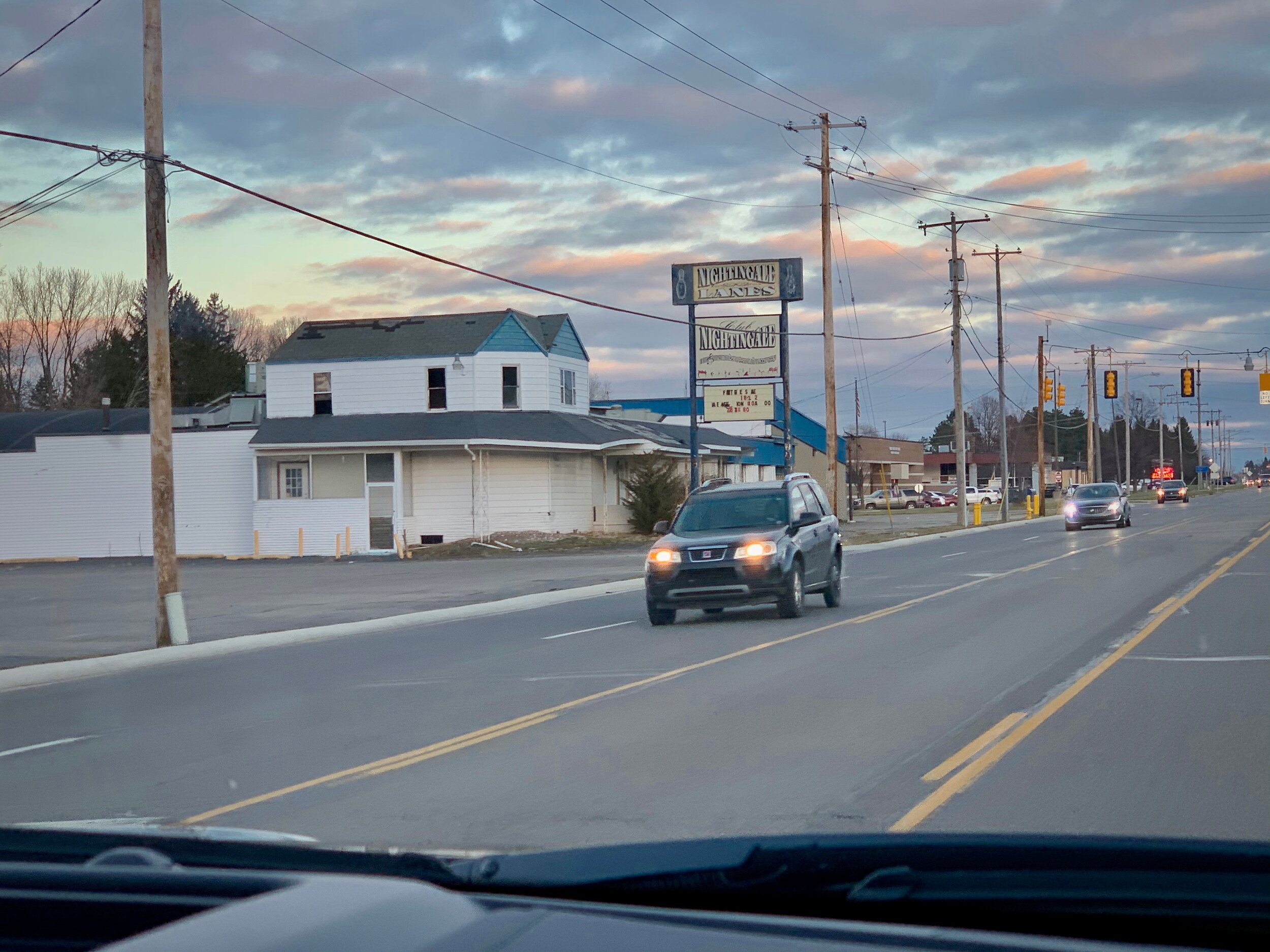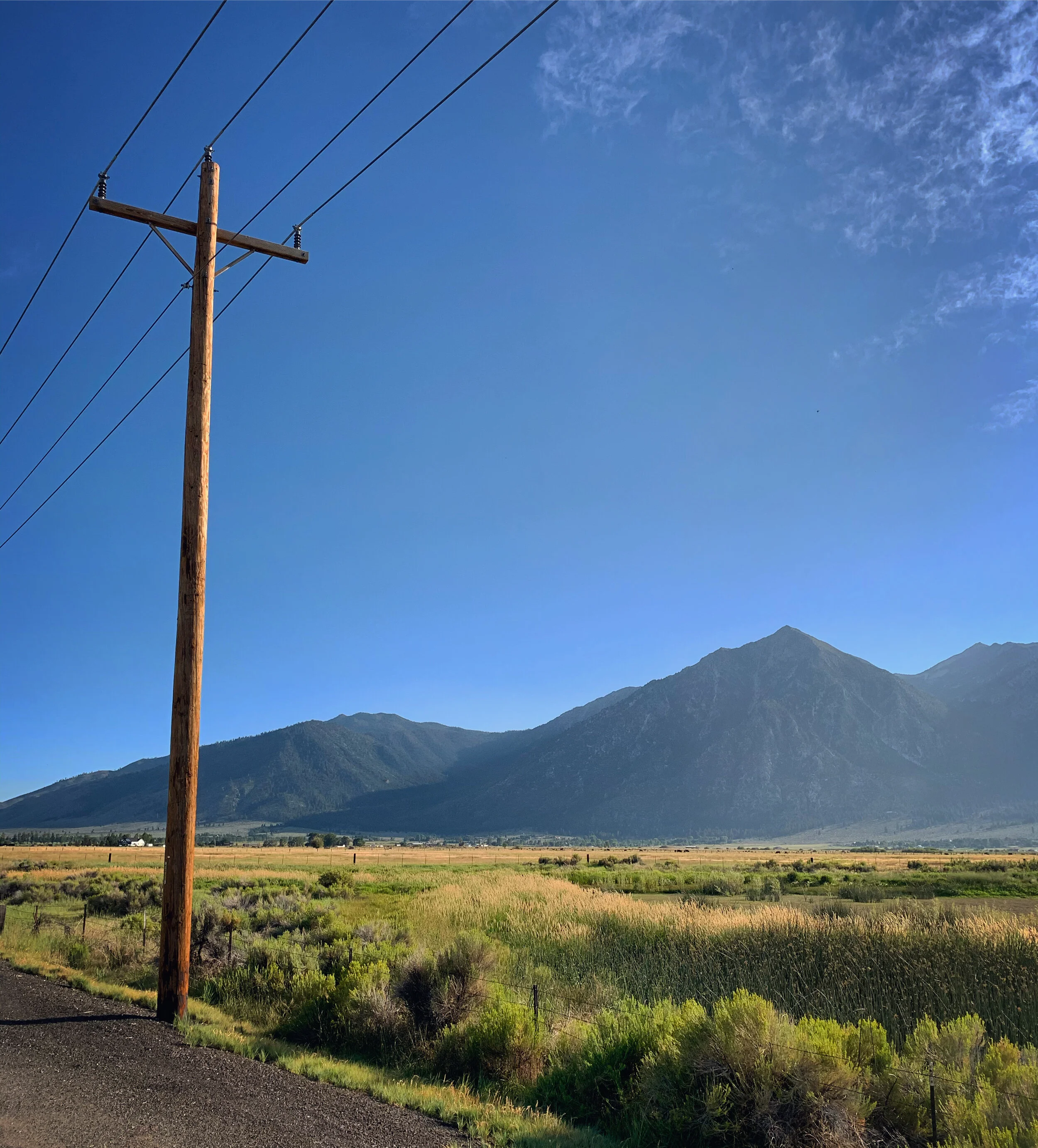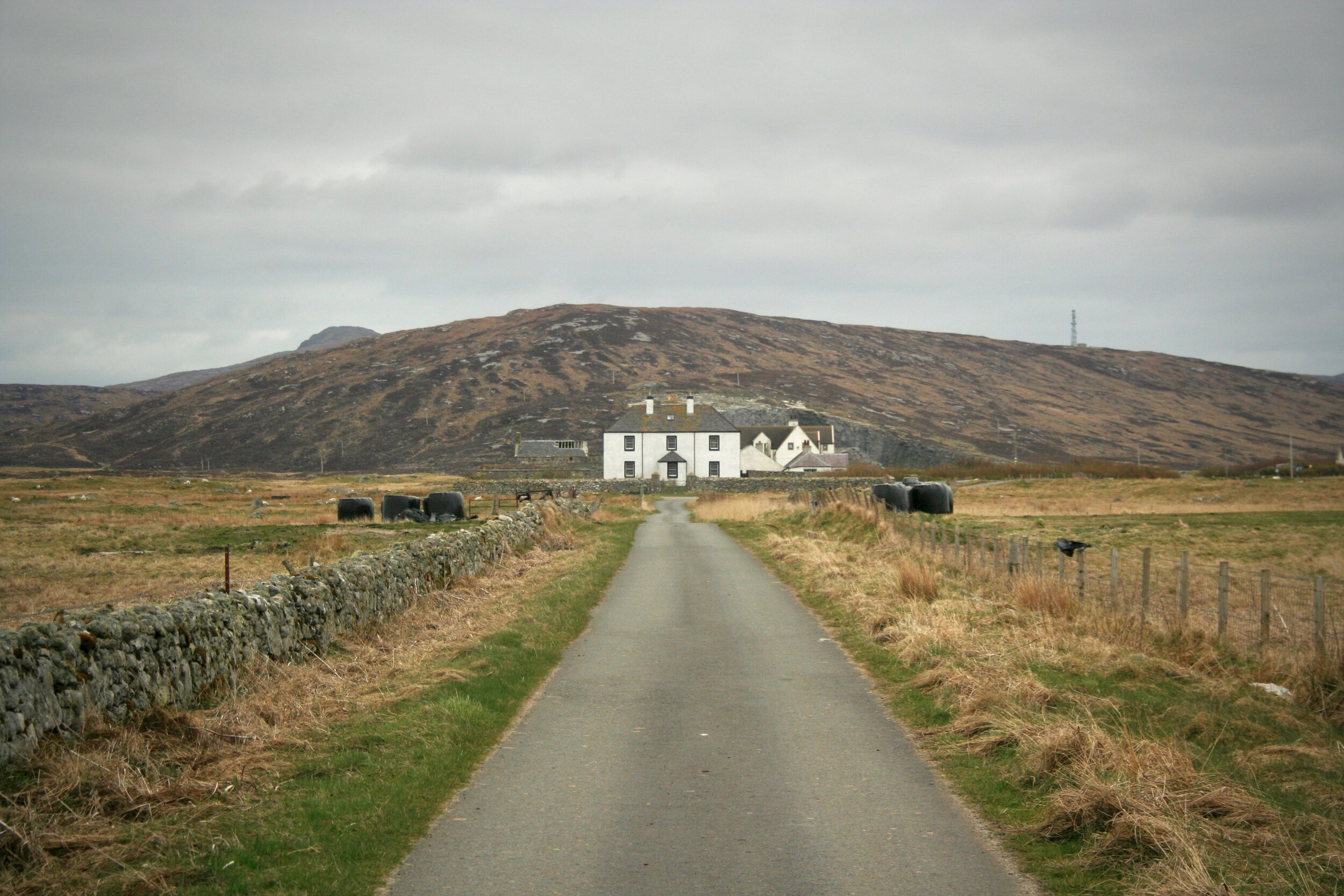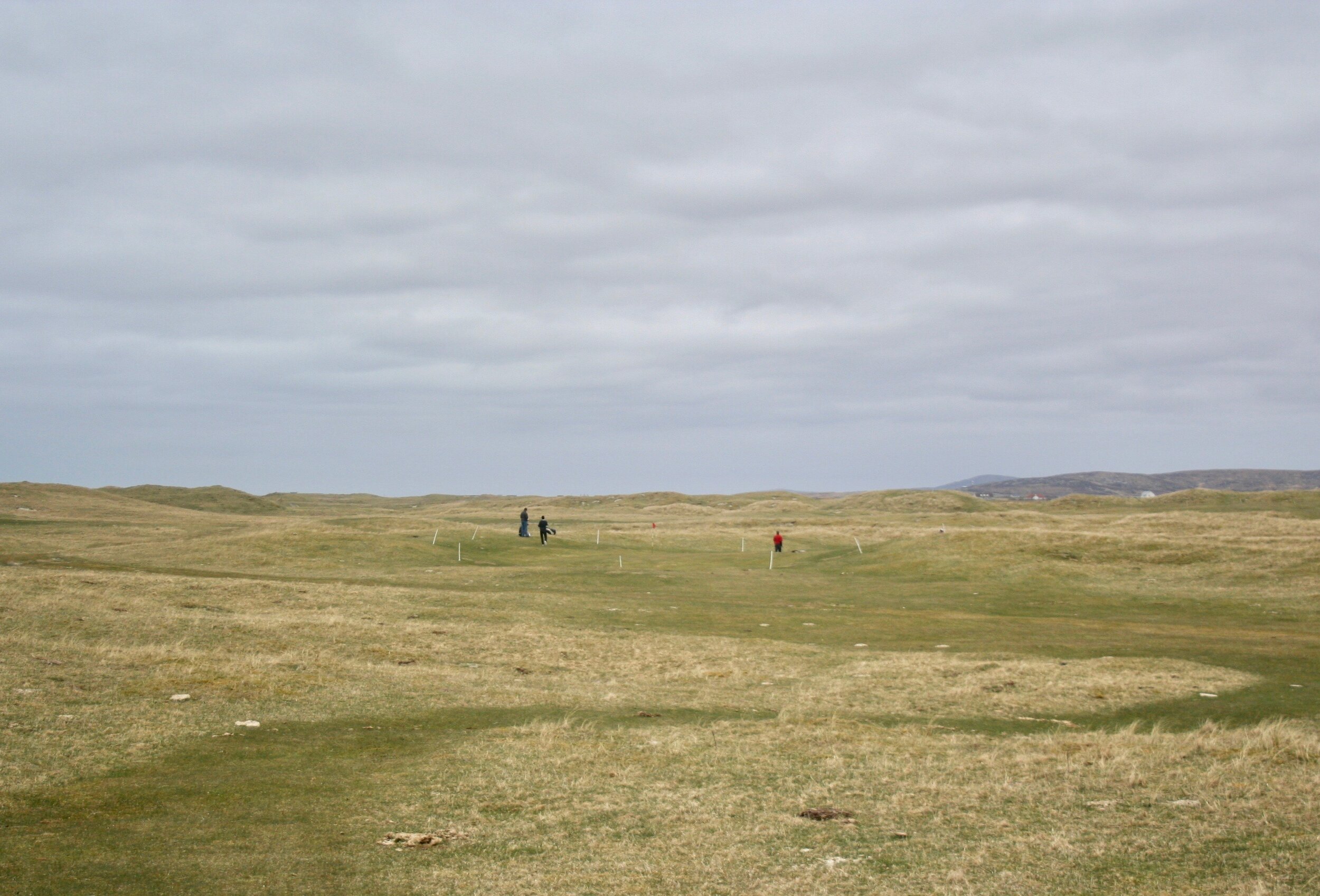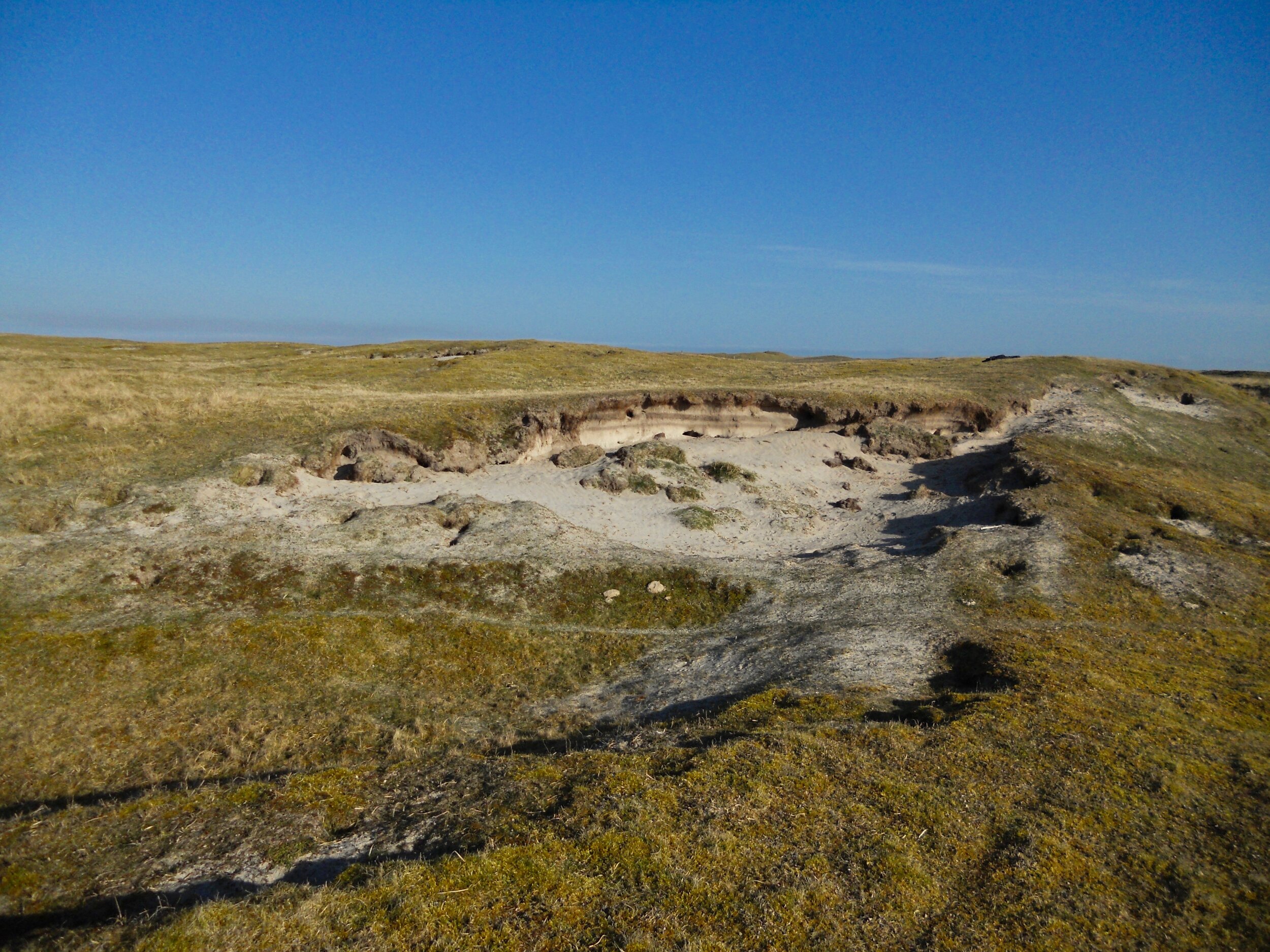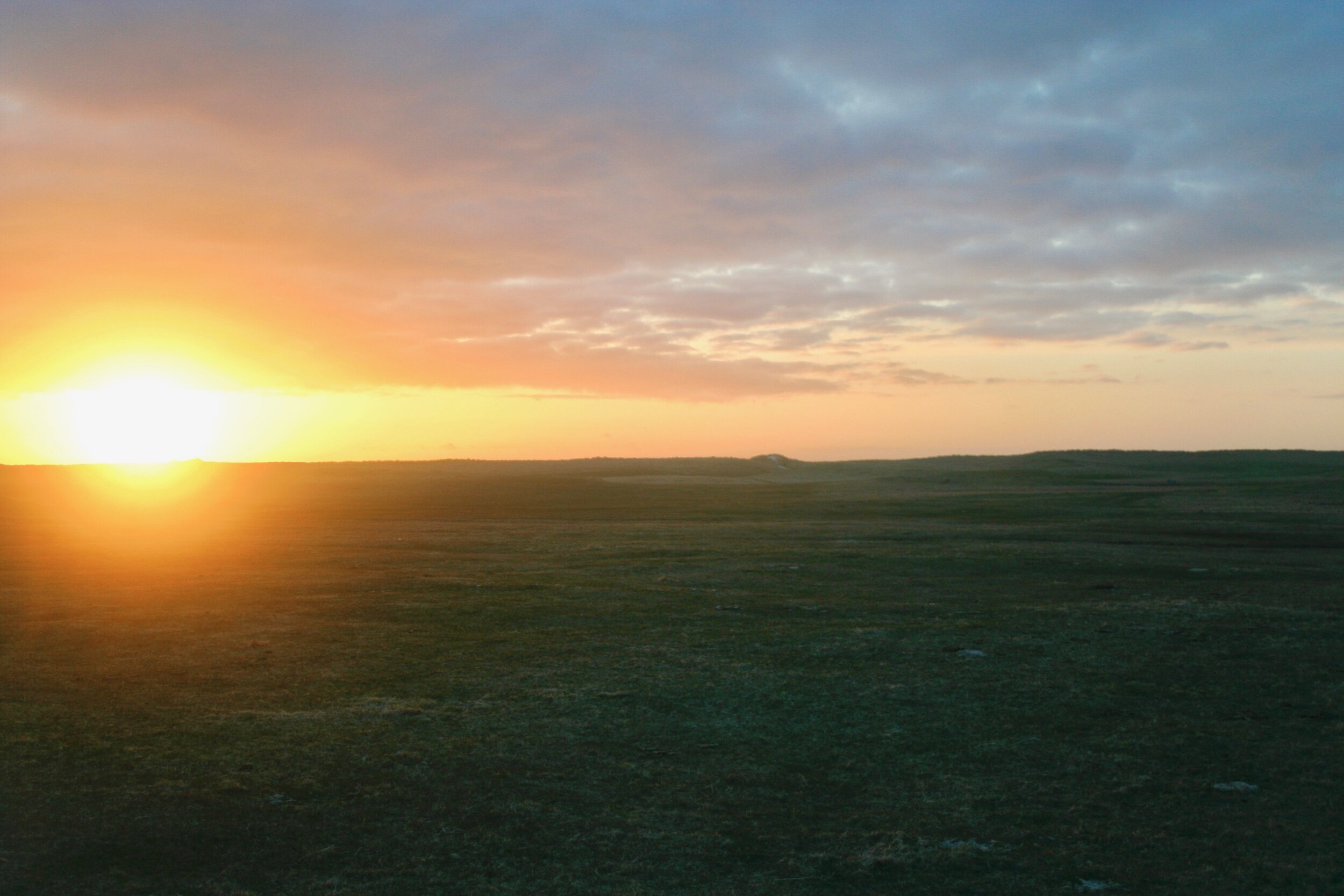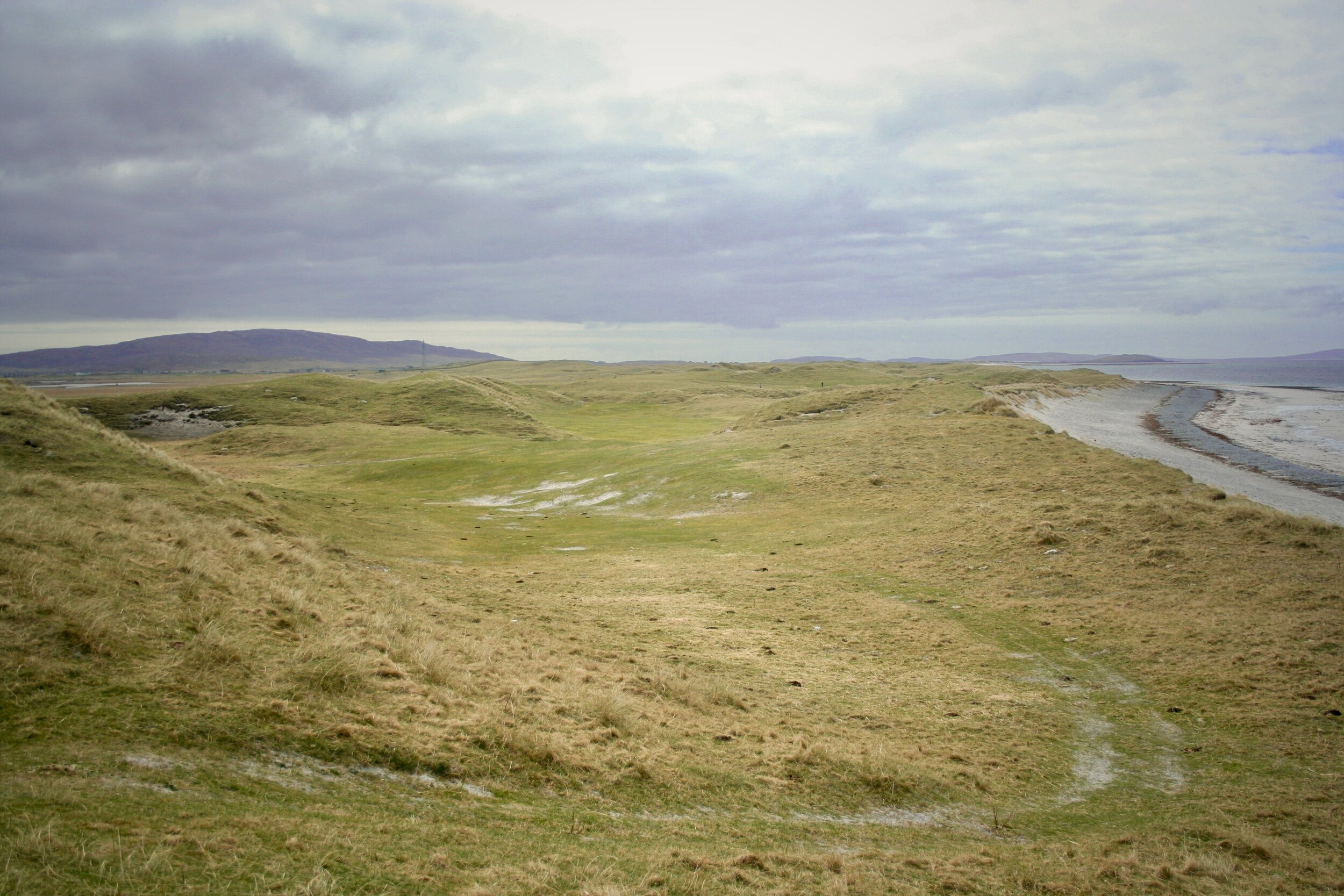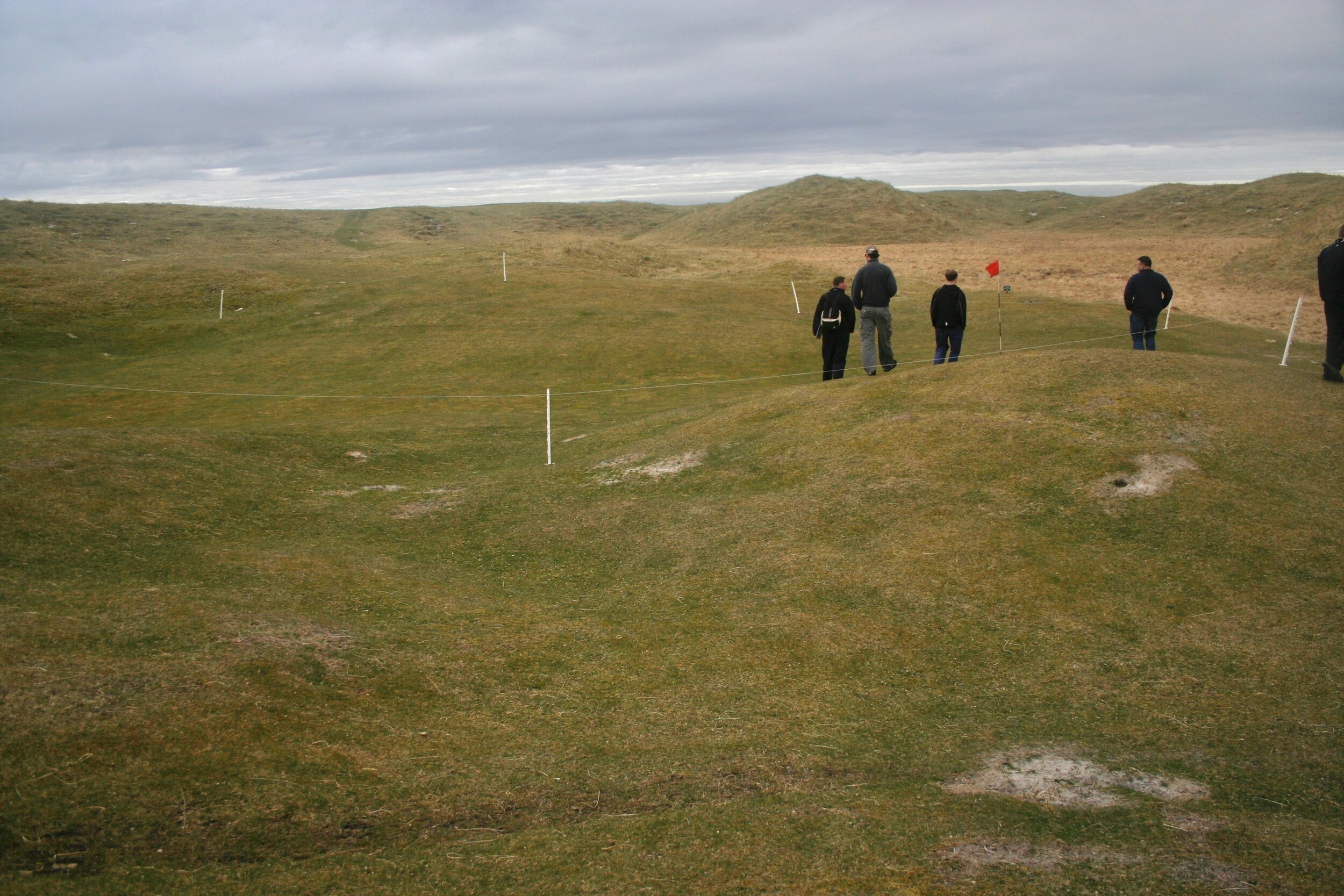It probably seemed pretty quiet for Hochstein Design in 2023. Our social media sharing was very limited, and we didn’t really contribute much elsewhere in the way of articles or interviews. The truth is though, it was a particularly exciting year for us, and there are reasons for things being quieter. For one, our two main shaping projects—Jay Blasi’s renovation at Golden Gate Park and Jim Urbina’s (further) restoration of Pasatiempo—had, for various understandable reasons, tight orders not to share anything going on with the projects during construction. Secondly, we were busy behind the scenes prospecting for potential new clients as well as working on master plans for William Land Golf Course (Land Park) and the Alister MacKenzie Course at Haggin Oaks in Sacramento, and it is too soon to share anything about either (except that we are very excited about the potential at both courses!).
With word and imagery now getting out about Pasatiempo and Golden Gate Park, having conceptual approval for our plan at Land Park, and it being the end of the year, now seems like a good time to share a bit of what we have been up to lately and what is coming down the pipeline in 2024.
Design Highlights
William Land Golf Course Master Plan
The nine-hole William Land GC, or “Land Park” as it is more commonly known for the historic city park in which it sits, is the oldest course in Sacramento. The setting is urban, leafy, and as charming as the surrounding neighborhood of whimsical history homes. There’s really nothing else like it that I know of in California and feels much more like something you might find in the Northeast U.S. or at another urban nine-holer, Winter Park in Florida. The course itself though, coming up on its 100 year anniversary in 2024, simultaneous feels its age with major irrigation and drainage issues and also does not feel its age with regards to feature work at the greens and bunkers, which have been altered at various times over the years. Both of those “age-feelings” are the opposite of what you want; you’d prefer your infrastructure up to date and functioning and your golf course features to have the look and strategy of the Golden Age of Golf Design 100 years ago. And those are the big things we look to tackle with this Master Plan—fixing the infrastructure to start and looking at ways to introduce visual and strategic charm to the design that matches that of the Land Park neighborhood itself. Drawing inspiration from Walter Travis, Donald Ross, Devereux Emmet, and A.W. Tillinghast, we are looking to create a golf course that looks distinctly Golden Age but also like nothing else in the American West.
This golf course is special and what we love about golf—accessible, affordable, and inclusive to all skill levels. Furthermore, it blends seamlessly with the surrounding park, visually and functionally. It’s not uncommon for picnickers to lounge out in the roughs or for someone to be walking their dog along or sometimes across the fairway. The sense of community is stronger here than at most places, and for that we hope the moves we propose set up William Land GC to thrive for the next 100 years.
The final master plan should be complete by early February, and we plan to share our ideas with the local community at the 100 Year festivities over Memorial Day Weekend.
Haggin Oaks (Alister MacKenzie Course) Master Plan
MacKenzie courses are rare treasures. MacKenzie municipal courses are even rarer. To have one of them be one of my first solo commissions is beyond exciting. What’s also exciting is that—while the current course has evolved a long way from his original design—Mackenzie also left concepts that were as inspired as any of his other work. In what is his only known full set of greens sketches, the Doctor drew up greens with more variety and creative ideas than those at Pasatiempo, Augusta, or Crystal Downs. Could you build many of them today at those specs? Probably not, but neither were they likely built at those specs then either, which called for 6 foot rises and falls across short distances, bunkers eating deeply into greens, and “molar” fingers that reach out in ways you could neither putt around nor mow. Such features were drawn up at other courses like Pasatiempo but not exactly built that. At the core of theses drawings though are concepts and broad ideas that are really cool, strategic, varied, beautiful, and possible to achieve if finding the proper way to translate them to the real world of golf in the 2020s. That is a good starting point as we deeply explore the property’s past, develop a timeline of changes, analyze MacKenzie’s designs and movements of that later period of his career, and compare all of that to the modern day course and its needs and potential. We are taking our time with the process, which is what the property and any MacKenzie design deserves, and we hope to have more concrete direction to share by late 2024.
(Above: some of MacKenzie’s wildly creative greens concepts at Haggin Oaks)
Shaping Highlights
A lot of water views competed for “work spot of the year,” but popping down and back up in the bulldozer on the on this edge of the punchbowl 4th green at Golden Gate Park was the winner of that title.
Golden Gate Park San Francisco, CA—Jay Blasi renovation
This project was one of the quickest and most enthusiastically I had signed up for, basically committing to architect Jay Blasi on his first call to me about it the previous December. Not only was it the kind of project I was most fond of—public, affordable, and geared toward beginners and fun—it was also on a site that I knew was just loaded with potential. The Golden Gate Park Golf Course is a cleverly-routed Jack Fleming par-3 course sitting at the Western edge of the Park itself, in the shadows of the famous Dutch windmills and a par four’s length from Ocean Beach. When I had first played the course in December of 2018, the conditions were soft, muddy, and shaggy, and during the round I had forgotten about the nearby Pacific Ocean due to dense tree overgrowth. Even with that, I knew the potential of the course was enormous. My sense of the area’s history and geology led me to believe that this perfectly hilly site was actually capped-over sand dunes, and if you could just remove that layer of heavy soil and expose the sand, you could also create links conditions thanks to the cool microclimate, all while also making some dramatic visuals and eliminating the need to install any drainage. Then, if you could manage the tree overgrowth to highlight the whimsical specimen cypresses and re-capture the amazing ocean vistas—including those out to Land’s End and the Cliff House—you’d have something that’s not just an asset to the local community but also a course that people from around the world would want to see and play.
Thankfully, these are the moves that Jay Blasi, Dan Burke of the First Tee of San Francisco, and Josh Lewis (project manager and grow-in superintendent) all made. The early returns and reviews of the project seem to be a great success, and I am excited for the rest of the community and golf world to enjoy it as it fully opens a bit later this winter.
As far as the work goes, I didn’t get to shape as much as initially hoped due to heavy March rains squeezing me into my prior commitments to get down to Pasatiempo by April 20th. What I did work on though was a lot of fun, including the double green at the 1st and 4th, the Fern Gully-like 3rd hole, the 7th green and surrounds, odd areas here and there, and touching up all of the sandy areas this Fall with both excavator and shovel. The greens were some of the most fun I’ve ever gotten to work on, particularly the 7th, which I spent most of my time on and was the only location I had a chance to do any finish work with the sand pro and rake. My obsessive nature with that part of the work led me into working deep into Bay-to-Breakers Sunday, a cross-city race that serves mostly as a massive party. It was one of the few times I didn’t need music on my headphones, where a bunch of nearby hippie drummers’ rhythmic beats kept me hopping and bouncing along with every stroke of the rake. Between that and all the quiet sunsets over the Ocean in the Fall, I never minded the long or weird Sunday hours on this job. That’s how special this site and this project are and were.
Contours hand-raked to the beat of the hippie drums
Unintentionally this kind of ended up looking like a Cypress Point bunker. Perhaps the subconscious doing work after having walked it a few weeks prior?
Instant “age” and gratification are possible when working with sand and varied vegetative texture
Pasatiempo Santa Cruz, CA—Jim Urbina restoration/renovation
An opportunity to work at Pasatiempo is both exciting and special. It also comes with pressure and trepidation. When a place is as loved and revered as Pasatiempo is, especially after their highly-successful restoration efforts to Alister MacKenzie’s original design, done by Tom Doak and Jim Urbina between 2002-2007, you have to wonder about the upside vs. downside of tearing into such sacred ground. I certainly did myself, especially after learning about the plans to re-build the famous greens (the bunkers, on the other hand, were much more obvious to me with massive amounts of grass overgrowth and sand buildup in the past 10-15 years). The question immediately is, what is the process for that, and how do you preserve what is good and historic? In speaking very early on with both architect Jim Urbina and superintendent Justin Mandon, that process would utilize incredible caution, historic imagery, and the best in modern laser scanning and construction technology. It’s a process that has become reliable and used at many other high-end historic courses, such as Winged Foot and Oakland Hills, two other Golden Agers notable for their creative greens contours. Furthermore, a closer examination of the greens and their outside edges revealed pretty clearly some of the issues that Mandon had pointed out—agronomic challenges, “settling” spots leaving gimmicky hole-in-one pins, and the most obvious—incredible buildup on the outsides from both bunker sand splash and aggressive topdressing over the years in attempt to counter the aforementioned agronomic challenges, some of which also compromised outside hole locations. It’s not that anyone really wanted this project to happen, it’s more that the project needed to happen.
Precision was the name of the game at Pasatiempo
The process was very deliberate and a complete change of pace from the freedom of tossing around the open sand at Golden Gate Park. Every slope at Pasatiempo was measured, protective boards used any time a machine track would touch a green, old black and white photos heavily analyzed, and cuts made only fractions of an inch at a time. I probably spent most of my time tinkering with greenside bunkers, splitting that responsibility about 50/50 with Earth Sculptures (they went back and did all the fairway bunkers after the greens were completed). That bunker work was challenging for a number of reasons—sand splash, buried sand from many renovations ago, heavy clay soils, bedrock, and the overall pressure of trying to get them to look just like they did in the old photos. It was a challenge worth taking on though, and no spot more notable than on the 3rd, where we all spent over a month peeling back layers over the gigantic bunker scheme and discovering ways in which the hole could be further restored.
It was truly special to spend this time at one of the best designs and final residence of one of my foremost golf design heroes, Alister MacKenzie. I look forward to going back and helping on the outstanding back nine holes this Fall.
Hole 3 new bunkers from the perspective of an early-years photo
Other Highlights from the Field
(In no particular order)
The kids coming out to visit Daddy at work at Golden Gate Park
Walking around Land Park taking hole notes and having a moment to realize this was the Real Deal, not just hope/prep for a future job
Peaceful evening work at Pasatiempo after the rest of the crew goes home, especially when in view of the Monterey Bay or MacKenzie’s house
Doing finish work to the beat of hippie drummers during Bay to Breakers Sunday
Getting to see the UCR turfgrass research operation in action during their Field Day in September
The Blue Angels run practice multiple times one afternoon out at Golden Gate Park
Eating lunch on the beach 3 days in a row during Hot October at Golden Gate Park. As a former Midwestern kid, I still can’t believe I live in this place sometimes.
New Courses Seen
Listed in chronological order and lighter than most years. Should be a much bigger 2024, though!
More really cool stuff at Llanerch
Llanerch (Southern 9; already had seen northern 9) Havertown, PA. Alex Findlay, renovation by Brian Schneider. More highly-inspiring shaping and feature work by Schneider and Blake Conant here. I particularly like the way they tie it across multiple holes. A great example of a total course transformation without even touching the centers of the greens.
Carmel Valley Ranch Carmel Valley, CA. Pete Dye. Not very “Dye”-like over extreme terrain in parts, but the scenery is great and course very well looked-after with fun, firm conditions.
DeLaveaga Santa Cruz, CA. Bert Stamps. Add this to the pile of “Municipal Courses with Unreal Potential.” A lot of it could be realized just by thinning the dense eucalyptus forest blocking the 360 degree views from its lofty perch above Santa Cruz and the Monterey Bay.
Paris Hill Paris, ME. Architect unknown; course early Golden Age/Late Victorian. A great museum piece of what 1908 golf design looked like, with a few pretty interesting (if small) greens.
Wilson Lake Wilton, ME. Wayne Stiles. Super well-preserved Stiles design in a nice Western Maine setting. Well worth seeing if you are a fan of his.
Mountain View Grand GC Whitefield, NH. Unsure of architect; course undoubtedly early Golden Age. Only walked around a few holes with a stroller here, but the Banks-like 1st green and split-plateau 2nd green will both catch your eye from distance.
(Above from left to right: Paris Hill, Wilson Lake, Mountain View Grand)
Pacific Grove Pacific Grove, CA. H. Chandler Egan 1932 front nine and Jack Neville 1960 back nine. The back nine in the evening is as scenic as advertised, but the front nine was more interesting than I had thought, with occasional views over the neighborhood to the Monterey Bay itself.
Morro Bay Morro Bay, CA. Quintin Miller and E.W. Murphy. Very simple (for 1920s, especially) design on land with some of the most stunning views you will find anywhere (that could be even better with some tree management). This place was the surprise of the year for me.
Dairy Creek San Luis Obispo, CA. John Harbottle. Another course in SLO County with beautiful scenery, this course is especially peaceful in the evening. There are some flaws with the routing over tough slopes, but it’s a nice place to spend a round and one I hope survives its well-documented water challenges.
Pismo Beach Grover Beach, CA. Architect unknown; 1966 vintage. Between sitting right next to incredible sand dunes and reading that the course was built with “some of the best top soil money could buy,” it feels like this little par 3 course was SO close to being all-world. Still seems like it has some potential, but the current version looked flat and soggy enough that I spent my time wandering the adjacent dunes instead and wondering “what-if.”
Sandpiper Goleta, CA. Billy Bell, Jr. A setting best described as “surreal” not just because of the ocean views but because of the way its vast scale makes you feel small. The course and features are highly simplistic and representative of its era, and many are aged and in need of renovating. I’m VERY curious to see what happens if the Doak plans get the go-ahead.
Somehow, this setting flies under the radar.
Other Highlights in Golf
(Also in no particular order)
This Stairway to Heaven goes down
Testing out the new work at Golden Gate Park with Brian Zager, Mitch Leiber, and Grant Raffel (Image above)
Early morning Cypress Point walk
Back nine twilight post-work rounds at Pasatiempo
Playing the work at Lake Merced and appreciating the greens more than I realized (would bump my “Doak” rating of a 6 last year to a 7 because of it; I was on the fence between the two anyway)
Golf at Land Park in November adds another point in favor of it being California’s best month
November round at Land Park following a Master Plan concept review
Playing a few holes at Valley Club with Jim Benzian and Josh Pettit
Watching my 18 month old son mess around on the putting green at Golf Galaxy after months of him wandering around the house with a plastic club in hand and looking for a ball to hit
Who I listened to…
(Once again, no order to any of these)
Bands
Alvvays, The Beths, The Last Dinner Party (Songs of the year!), Nation of Language, Mitski, The New Pornographers, Generationals, The Besnard Lakes, Waxahatchee, Rilo Kiley
Some fun Songs on their own
“Eugene” —Crazy Joe and the Variable Speed Band (Ace Frehley). Hilarious tune, but also pretty darn musically cool too.
“Lazy Line Painter Jane” —Belle and Sebastian. Extra points for the pipe organ
“Eye on the Bat” —Palehound. I really like the mix of slow, drawn-out and sped-up, bunched vocals sung back to back to the same basic beat.
“Ivory Coast” —Pure Bathing Culture
“Black Earth, WI” —Ratboys
“November Rain”—Guns N’ Roses. For whatever reason, I never noticed how much this song rocks until now, both halves of it.
“The River” —Dennis Wilson
“Fiesta Cumbiabera” —Aniceto Molina. Shazaam’d this at Los Pericos while waiting for a lengua burrito and noticing I had been bopping along to the beat for over a minute
A word of thanks, and what to look forward to in 2024…
As always, it takes a lot of people to execute a golf project, and it takes a lot of surrounding support to get to do this in the first place.
Thank you to the Mortons in Sacramento for entrusting me to create a vision for two of your most special golf courses. Thank you to Jay Blasi for letting me play in the sand at Golden Gate Park. Thank you to Jim Urbina for the chance to help further restore MacKenzie. Thank you to Josh Lewis for your infinite wisdom on all variety of things and always making sure we had fuel at GGP (even if it meant hand-filling!). Thank you to Justin Mandon at Pasatiempo for caring as much as one should about such an historic and important project. Thank you to Earth Sculptures for your help and support at Pasatiempo and for taking a higher interest in historic imagery than any other contractor I’ve come across. Thank you to Armando for making my bunker shaping look good and working way harder than anyone your age should be. And as always, thank you most of all to my family who deal with this weird life and passion of mine, even if a bit less weird this year in getting to stay within California.
We are looking forward to what could and should be a great 2024, with master plans developed, more shaping at Pasatiempo and a few other interesting spots, some exciting course visits for real work inspiration, and hopefully adding a couple new clients. Can’t wait to share it all and work on making some fun golf.
Cheers!
-Brett
As the sun sets on Ocean Beach and 2023, we look forward to a great 2024





